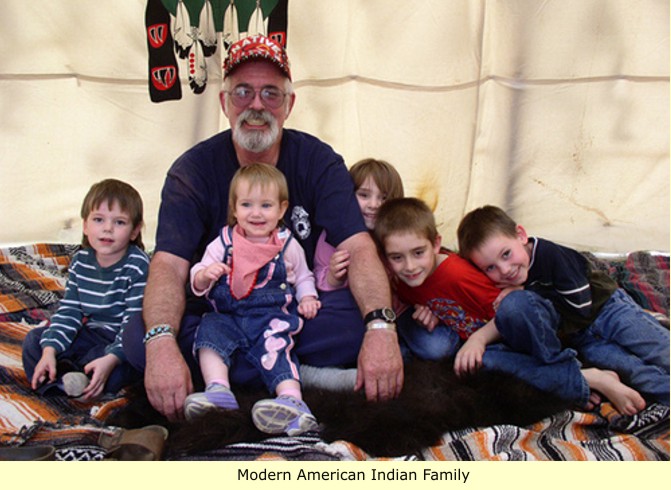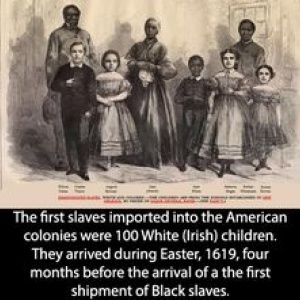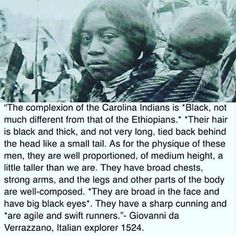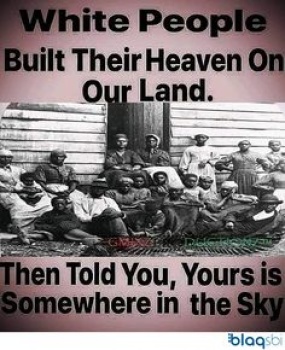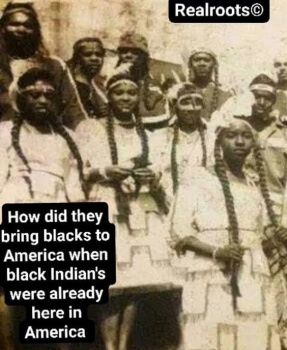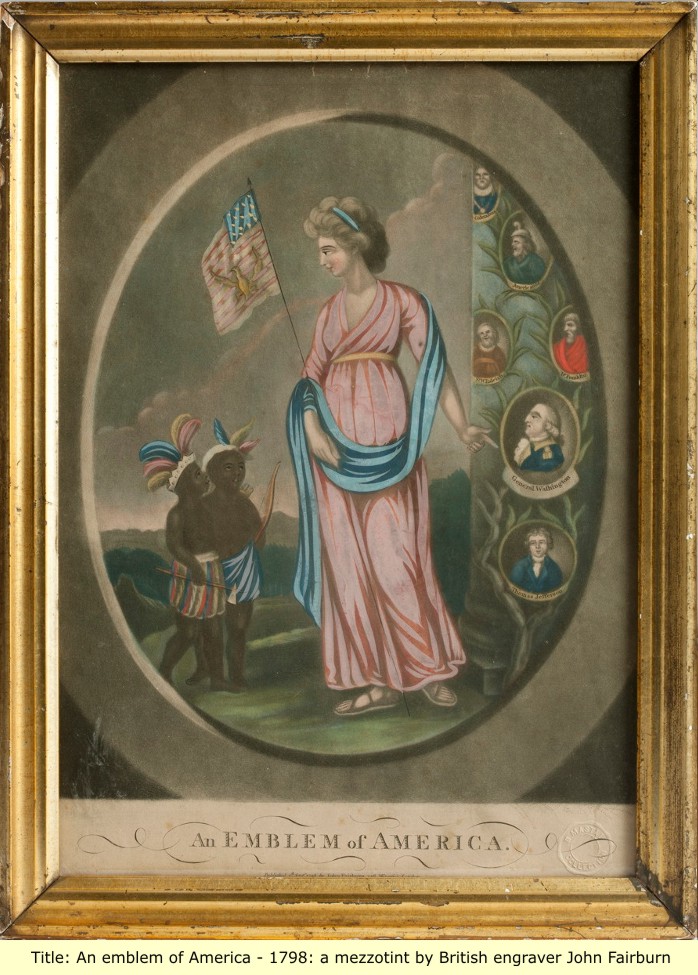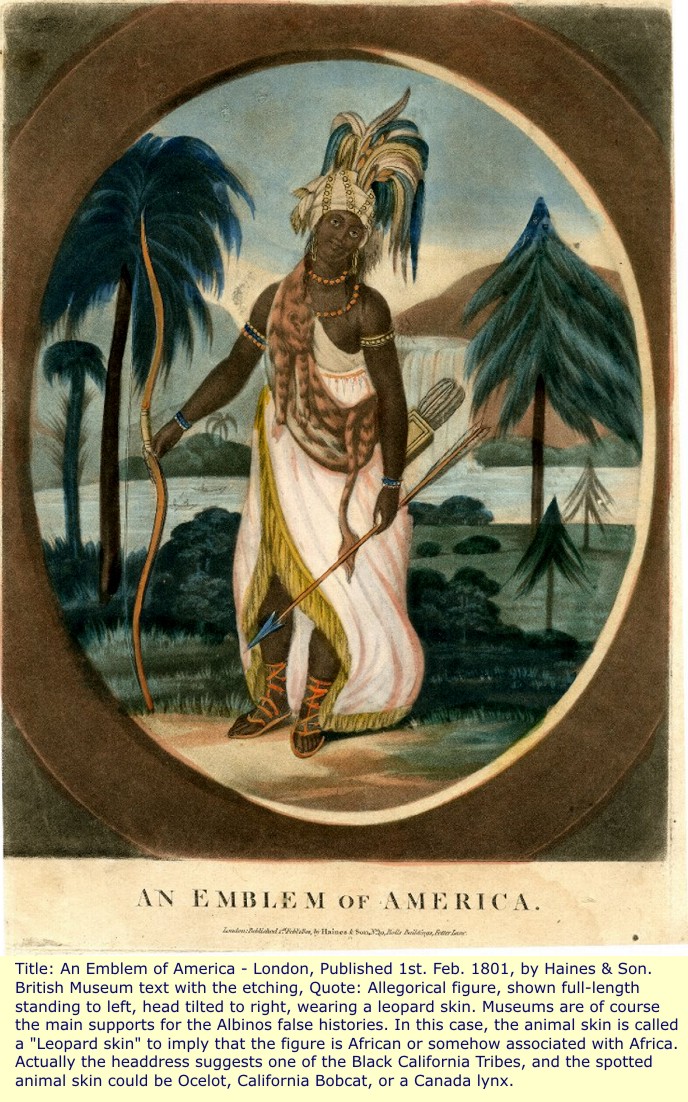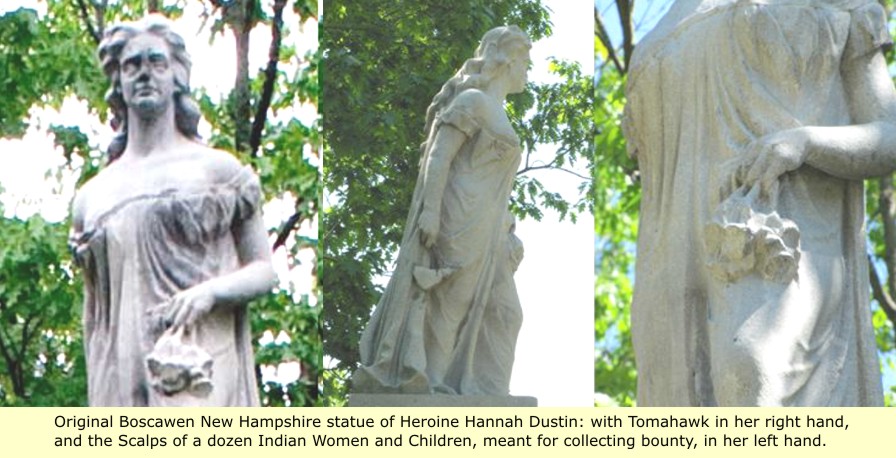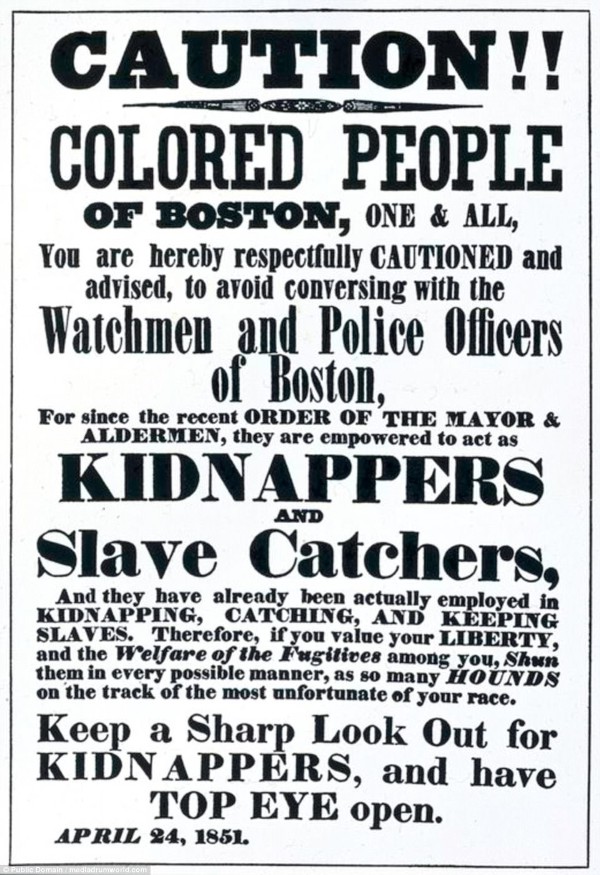Install the app
How to install the app on iOS
Follow along with the video below to see how to install our site as a web app on your home screen.
Note: This feature may not be available in some browsers.
You are using an out of date browser. It may not display this or other websites correctly.
You should upgrade or use an alternative browser.
You should upgrade or use an alternative browser.
Aboriginal Historty Month 2021
- Thread starter roots69
- Start date
United States National Park Service
(self-proclaimed: one of the United States' leading agencies for history and culture).
African Nation Founders
Africans in the Low Country
Work, Marriage, Christianity
Many of these early slaves were American Indians, mostly Algonquian-speakers of coastal Virginia and North Carolina. By the 1680s, English settlers routinely kidnapped Native American women and children in the coastal plains of North Carolina and Virginia. This Native American slave trade involved a number of colonies, including Virginia, Carolina, Pennsylvania, Massachusetts, Jamaica, Barbados, St. Kitts, and Nevis. So many Indian slaves were traded to Pennsylvania that a law was passed in 1705 forbidding the importation of Carolina Indian slaves. This was done in part because many of the slaves were Tuscarora who were aligned militarily with the Iroquois Confederacy, which threatened to intervene to stop the trade.
From 1680 to 1715, the English sold thousands of Indians into slavery, some as far away as the Caribbean. Indian slavery, however, had many problems, not the least of which were Indian attacks, and by 1720, most colonies in North America had abandoned it for African slavery. In 1670, Virginia passed a law defining slavery as a lifelong inheritable “racial” status. After the passage of this law many “black Indians” found themselves classified as black and forced into slavery.
In the fields and homes of colonial plantations, mutually enslaved African Americans and American Indians forged their first intimate relations. In spite of a later tendency in the Southern colonies to differentiate the African slave from the Indian, chattel slavery was built on a preexisting system of Indian slavery. Even though the arrival of Africans in 1619 began to change the face of slavery in North America from “tawny” Indian to “blackamoor” African, Indian slaves were exported throughout the Caribbean often in trade for Africans. As the 18th century dawned the slave trade in American Indians was so serious that it eclipsed the trade for furs and skins and had become the primary source of commerce between the English and the South Carolina colonials (Minges 2002:454).
During this transitional period, Africans and Americans Indians shared the common experience of enslavement. They worked together, lived together in communal quarters, produced collective recipes for food, shared herbal remedies, myths and legends and in the end they intermarried. Africans had a disproportionate numbers of males in their population while Native American women and children were disproportionately enslaved. American Indians males were shipped to the Caribbean, died in wars or of European diseases. As traditional societies in the Southeast were primarily matrilineal, African males who married American Indians women often became members of the wife’s clan and of her nation
The 1740 slave codes of South Carolina served to blur the distinction between African, American Indian and the children of their intermarriage, declaring: All negroes and Indians, (free Indians in amity with this government, and negroes, mulattoes, and mustezoses, who are now free, excepted) mullatoes and mustezoes who are now, or shall hereafter be in this province, and all their issue and offspring…shall be and they are hereby declared to be, and remain hereafter absolute slaves (Hurd 1862:303 as cited in Minges 2002:455)
https://www.nps.gov/ethnography/aah/aaheritage/lowCountry_furthRdg1.htm
(self-proclaimed: one of the United States' leading agencies for history and culture).
African Nation Founders
Africans in the Low Country
Work, Marriage, Christianity
Many of these early slaves were American Indians, mostly Algonquian-speakers of coastal Virginia and North Carolina. By the 1680s, English settlers routinely kidnapped Native American women and children in the coastal plains of North Carolina and Virginia. This Native American slave trade involved a number of colonies, including Virginia, Carolina, Pennsylvania, Massachusetts, Jamaica, Barbados, St. Kitts, and Nevis. So many Indian slaves were traded to Pennsylvania that a law was passed in 1705 forbidding the importation of Carolina Indian slaves. This was done in part because many of the slaves were Tuscarora who were aligned militarily with the Iroquois Confederacy, which threatened to intervene to stop the trade.
From 1680 to 1715, the English sold thousands of Indians into slavery, some as far away as the Caribbean. Indian slavery, however, had many problems, not the least of which were Indian attacks, and by 1720, most colonies in North America had abandoned it for African slavery. In 1670, Virginia passed a law defining slavery as a lifelong inheritable “racial” status. After the passage of this law many “black Indians” found themselves classified as black and forced into slavery.
In the fields and homes of colonial plantations, mutually enslaved African Americans and American Indians forged their first intimate relations. In spite of a later tendency in the Southern colonies to differentiate the African slave from the Indian, chattel slavery was built on a preexisting system of Indian slavery. Even though the arrival of Africans in 1619 began to change the face of slavery in North America from “tawny” Indian to “blackamoor” African, Indian slaves were exported throughout the Caribbean often in trade for Africans. As the 18th century dawned the slave trade in American Indians was so serious that it eclipsed the trade for furs and skins and had become the primary source of commerce between the English and the South Carolina colonials (Minges 2002:454).
During this transitional period, Africans and Americans Indians shared the common experience of enslavement. They worked together, lived together in communal quarters, produced collective recipes for food, shared herbal remedies, myths and legends and in the end they intermarried. Africans had a disproportionate numbers of males in their population while Native American women and children were disproportionately enslaved. American Indians males were shipped to the Caribbean, died in wars or of European diseases. As traditional societies in the Southeast were primarily matrilineal, African males who married American Indians women often became members of the wife’s clan and of her nation
The 1740 slave codes of South Carolina served to blur the distinction between African, American Indian and the children of their intermarriage, declaring: All negroes and Indians, (free Indians in amity with this government, and negroes, mulattoes, and mustezoses, who are now free, excepted) mullatoes and mustezoes who are now, or shall hereafter be in this province, and all their issue and offspring…shall be and they are hereby declared to be, and remain hereafter absolute slaves (Hurd 1862:303 as cited in Minges 2002:455)
https://www.nps.gov/ethnography/aah/aaheritage/lowCountry_furthRdg1.htm
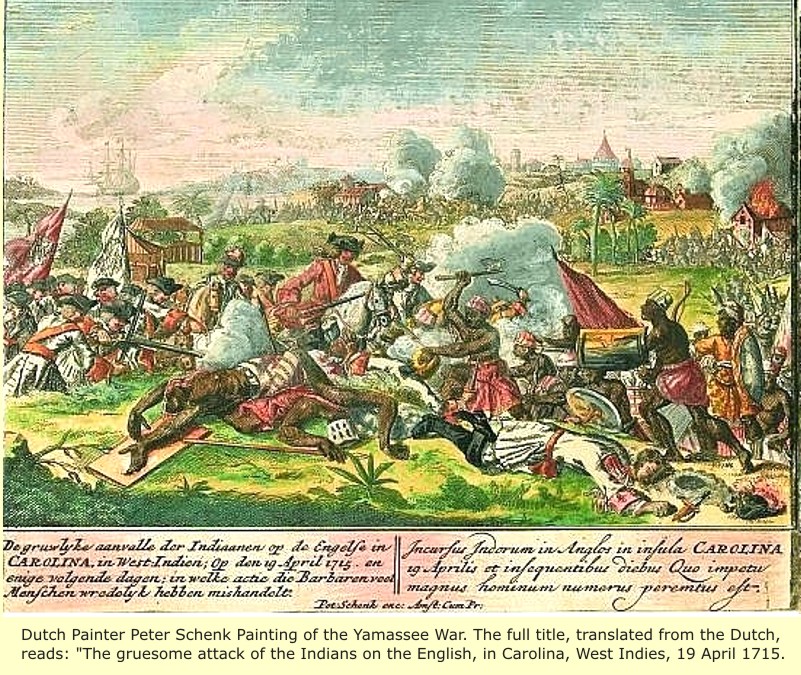
The Yamasee War
The Yamasee Indians were part of the Muskhogean language group. Their traditional homelands lay in present-day northern Florida and southern Georgia. The advent of the Spanish in the late 16th century forced the Yamasee to migrate north into what would become South Carolina. Relations between the tribe and English settlers in that region were generally positive during the latter half of the 17th century.
Not surprisingly, problems between the races developed. The continuing influx of white settlers put pressure on Indian agricultural and hunting lands. The relationship was further complicated in that the tribe had become dependent on English firearms and other manufactured items, and had incurred a large debt, typically payable in deerskins. White fur traders acted on their displeasure by enslaving a number of Yamasee women and children to cover portions of the outstanding debt.
In the spring of 1715, the Yamasee formed a confederation with other tribes and struck at the white settlements in South Carolina. Several hundred settlers were killed, homes burned and livestock slaughtered. The frontier regions were emptied; some fled to the relative safety of North Carolina and others pushed on to even more secure Virginia. Charleston also received large numbers of frightened settlers.
At the height of the fighting, it appeared that the tribal confederation's overwhelming numerical superiority would end in the white settlements' complete destruction in the region. This would have been a virtual certainty if the confederacy had successfully drawn the Cherokee into their cause. Instead, the Cherokee gave in to the lure of English weapons and other goods, and chose to aid the Carolinians. In a further stroke of good fortune, the besieged settlers also managed to gain support from Virginia ~ez_mdash~ an event not assured in this age of intense colonial rivalries.
The tide turned against the Yamasee, who were slowly pushed south through Georgia back into their ancestral lands in northern Florida. There, the tribe was virtually annihilated by protracted warfare with the Creeks, but some members were absorbed by the Seminole.
The Yamasee War took a heavy toll in South Carolina. Such terror had been instilled in the minds of the frontiersmen that it would take nearly 10 years for resettlement to occur in many areas. The warfare also brought a sharp change to the region's economy. Originally, farming had been the settlers' primary occupation, but the livestock supply had been so drastically depleted that many farms disappeared. In their absence, enterprising South Carolinians turned to the forests as a source of naval stores (tar, pitch and turpentine) and soon developed a lucrative trade with England. Later, the economy would develop rice and indigo as its primary products.
| Preferring Fantasy over Science Something to ponder as you read these pages: We know of no source which insists Native Americans were exclusively the Mongol mulatto we know so well, like Geronimo and the like, except American Television and Movies. All other sources, like period ARTIFACTS and SCIENTIFIC studies, clearly show that Blacks were THE major component of the PaleoAmerican demographic. Yet we see supposedly serious people, even some with a scholastic background, "Blow-off" these truths, to cling to the Hollywood fantasy of Tonto. That is where the term "Albino in Denial" comes in. It is not easy to see the lies which formed your reality, crumble before your eyes. Even some Negroes have the problem too, their reality has been shaped by the lies the Albinos taught them, so they too find it hard to grapple with the truth. May they all, one day find the strength to accept the truth. |
| The United Nations Declaration on the Rights of Indigenous Peoples (UNDRIP), says in part: Article 7 1. Indigenous individuals have the rights to life, physical and mental integrity, liberty and security of person. 2. Indigenous peoples have the collective right to live in freedom, peace and security as distinct peoples and shall not be subjected to any act of genocide or any other act of violence, including forcibly removing children of the group to another group. The declaration was adopted by the General Assembly on Thursday, 13 September 2007, by a majority of 144 states in favor, with 4 votes against: those against were Australia, Canada, New Zealand and the United States: all of which had institutionally committed those very crimes against Indigenous Peoples since the arrival of the Albino people. |
This is a long read!! But enjoy
How the Cherokee Indians became White and mulatto:
And then cheated Black Indians out of their Birthrights
The is the typical tale of Albinos conquering a land and killing off it's people: mixing with the survivors, and taking over and assuming the identities and cultures of Black people worldwide. It is most prevalent in the Middle east and Latin America, but in reality, it is all over the world.
Here we involve ourselves with the plight of the descendants of the original settlers, the Black Paleoamerican, or so-called Black Indians. As shown on the main page, Black Indians were the majority Native Americans, with the Mongol Indians a later arriving people and a lessor population. The Albino Europeans hatred of Blacks being constant, naturally most of the Black paleoamericans were killed-off. But while Black and Mongol Indians were rulers of their lands, their relationship was as follows (wiki):
Many Native American tribes practiced some form of slavery before the European introduction of African slavery into North America; but none exploited slave labor on a large scale. Native American tribes often enslaved war captives whom they primarily used for small-scale labor. Some, however, were used in ritual sacrifice. While little is known, there is little evidence that the slaveholder's considered the slaves as racially inferior; they came from other Native American tribes and were casualties of war. Native Americans did not buy and sell captives in the pre-colonial era, although they sometimes exchanged enslaved individuals with other tribes in peace gestures or in exchange for redeeming their own members. The word "slave" may not accurately apply to such captive people. Most of these so-called Native American slaves tended to live on the fringes of Native American society and were slowly integrated into the tribe. In many cases, new tribes adopted captives to replace warriors killed during a raid. Warrior captives were sometimes made to undergo ritual mutilation or torture that could end in death as part of a grief ritual for relatives slain in battle. That relationship between Black Indians and Mongol Indians is confirmed in the Cherokee treaty of 1866.
INDIAN AFFAIRS: LAWS AND TREATIES
Vol. II, Treaties
Compiled and edited by Charles J. Kappler. Washington : Government Printing Office, 1904.
TREATY WITH THE CHEROKEE, 1866.
July 19, 1866. | 14 Stats., 799. | Ratified July 27, 1866. | Proclaimed Aug. 11, 1866
ARTICLE 4.
All the Cherokees and freed persons who were formerly slaves to any Cherokee, and all free negroes not having been such slaves, who resided in the Cherokee Nation prior to June first, eighteen hundred and sixty-one, who may within two years elect not to reside northeast of the Arkansas River and southeast of Grand River, shall have the right to settle in and occupy the Canadian district southwest of the Arkansas River, and also all that tract of country lying northwest of Grand River, and bounded on the southeast by Grand River and west by the Creek reservation to the northeast corner thereof; from thence west on the north line of the Creek reservation to the ninety-sixth degree of west longitude; and thence north on said line of longitude so far that a line due east to Grand River will include a quantity of land equal to one hundred and sixty acres for each person who may so elect to reside in the territory above-described in this article: Provided, That that part of said district north of the Arkansas River shall not be set apart until it shall be found that the Canadian district is not sufficiently large to allow one hundred and sixty acres to each person desiring to obtain settlement under the provisions of this article.
Repeating ARTICLE 4.
All the Cherokees and freed persons who were formerly slaves to any Cherokee, and all free negroes not having been such slaves, who resided in the Cherokee Nation prior to June first.
This paragraph establishes that who was a slave (including Cherokees) was entirely FLUID, and was not dependent on RACE! It also established that ALL/SOME "Free Negroes" had never been slaves.
But unfortunately, Black native Americans, or any U.S. Indians, did not keep a written history. Their history was kept as "Oral" history, but sadly, oral history is pretty worthless after the third generation - each time the stories are told, they change a little bit, until they are useless except as myth. Thus like the rest of us, the Indians had to depend on Albino history to tell them what happened and when, and even worst: WHO THEY ARE! Thus many Black Native Americans have simply been ROBBED of their history - they don't know who they really are, because they don't know who or what their ancestors were. This was a particularly bad piece of luck because Albinos are particularly fond of ALWAYS depicting Blacks as Slaves. As a matter of fact, the Albinos have managed to make BLACK synonymous with slave, when in fact it was the Albino Slavic peoples who were originally synonymous with slave (Slav = Slave)." So of course, Albino history says that the Black Indians were African Slaves, and not really Indians. Which of course is quickly taken up by so-called Indians who are now WHITE, and their Mulattoes who are well on their way to becoming WHITE!
PART 1
How the Cherokee Indians became White and mulatto:
And then cheated Black Indians out of their Birthrights
The is the typical tale of Albinos conquering a land and killing off it's people: mixing with the survivors, and taking over and assuming the identities and cultures of Black people worldwide. It is most prevalent in the Middle east and Latin America, but in reality, it is all over the world.
Here we involve ourselves with the plight of the descendants of the original settlers, the Black Paleoamerican, or so-called Black Indians. As shown on the main page, Black Indians were the majority Native Americans, with the Mongol Indians a later arriving people and a lessor population. The Albino Europeans hatred of Blacks being constant, naturally most of the Black paleoamericans were killed-off. But while Black and Mongol Indians were rulers of their lands, their relationship was as follows (wiki):
Many Native American tribes practiced some form of slavery before the European introduction of African slavery into North America; but none exploited slave labor on a large scale. Native American tribes often enslaved war captives whom they primarily used for small-scale labor. Some, however, were used in ritual sacrifice. While little is known, there is little evidence that the slaveholder's considered the slaves as racially inferior; they came from other Native American tribes and were casualties of war. Native Americans did not buy and sell captives in the pre-colonial era, although they sometimes exchanged enslaved individuals with other tribes in peace gestures or in exchange for redeeming their own members. The word "slave" may not accurately apply to such captive people. Most of these so-called Native American slaves tended to live on the fringes of Native American society and were slowly integrated into the tribe. In many cases, new tribes adopted captives to replace warriors killed during a raid. Warrior captives were sometimes made to undergo ritual mutilation or torture that could end in death as part of a grief ritual for relatives slain in battle. That relationship between Black Indians and Mongol Indians is confirmed in the Cherokee treaty of 1866.
INDIAN AFFAIRS: LAWS AND TREATIES
Vol. II, Treaties
Compiled and edited by Charles J. Kappler. Washington : Government Printing Office, 1904.
TREATY WITH THE CHEROKEE, 1866.
July 19, 1866. | 14 Stats., 799. | Ratified July 27, 1866. | Proclaimed Aug. 11, 1866
ARTICLE 4.
All the Cherokees and freed persons who were formerly slaves to any Cherokee, and all free negroes not having been such slaves, who resided in the Cherokee Nation prior to June first, eighteen hundred and sixty-one, who may within two years elect not to reside northeast of the Arkansas River and southeast of Grand River, shall have the right to settle in and occupy the Canadian district southwest of the Arkansas River, and also all that tract of country lying northwest of Grand River, and bounded on the southeast by Grand River and west by the Creek reservation to the northeast corner thereof; from thence west on the north line of the Creek reservation to the ninety-sixth degree of west longitude; and thence north on said line of longitude so far that a line due east to Grand River will include a quantity of land equal to one hundred and sixty acres for each person who may so elect to reside in the territory above-described in this article: Provided, That that part of said district north of the Arkansas River shall not be set apart until it shall be found that the Canadian district is not sufficiently large to allow one hundred and sixty acres to each person desiring to obtain settlement under the provisions of this article.
Repeating ARTICLE 4.
All the Cherokees and freed persons who were formerly slaves to any Cherokee, and all free negroes not having been such slaves, who resided in the Cherokee Nation prior to June first.
This paragraph establishes that who was a slave (including Cherokees) was entirely FLUID, and was not dependent on RACE! It also established that ALL/SOME "Free Negroes" had never been slaves.
But unfortunately, Black native Americans, or any U.S. Indians, did not keep a written history. Their history was kept as "Oral" history, but sadly, oral history is pretty worthless after the third generation - each time the stories are told, they change a little bit, until they are useless except as myth. Thus like the rest of us, the Indians had to depend on Albino history to tell them what happened and when, and even worst: WHO THEY ARE! Thus many Black Native Americans have simply been ROBBED of their history - they don't know who they really are, because they don't know who or what their ancestors were. This was a particularly bad piece of luck because Albinos are particularly fond of ALWAYS depicting Blacks as Slaves. As a matter of fact, the Albinos have managed to make BLACK synonymous with slave, when in fact it was the Albino Slavic peoples who were originally synonymous with slave (Slav = Slave)." So of course, Albino history says that the Black Indians were African Slaves, and not really Indians. Which of course is quickly taken up by so-called Indians who are now WHITE, and their Mulattoes who are well on their way to becoming WHITE!
PART 1
PART 2
Blood Feud
Stick Ross Mountain is an unimpressive peak. It's more of a gentle hill, really, poking out from behind the Wal-Mart just west of Tahlequah, the capital of the Cherokee Nation of Oklahoma.
But to the Cherokee, the 900-foot crest was remarkable enough to be named for a revered 19th-century member of the tribal council. Stick Ross is thought to be the illegitimate grandson of Chief John Ross, who led the tribe along the Trail of Tears. Ross the younger was a respected Native American and a skilled diplomat who acted as a liaison between tribes and local townsfolk. "He knew sign language and spoke Cherokee and Seminole. He was a trapper and a farmer and a rancher," says Stick's great-grandson, Leslie Ross, a 56-year-old retired civil servant whose greatest joy is recounting the Stick trivia he learned from his family in Muskogee. "And he was sheriff at one time, too. He was pretty renowned in Tahlequah."
Stick may have died an exemplary citizen of the Cherokee Nation, but he was born into slavery. The Cherokee kept black slaves until 1866, when an emancipation treaty freed them from bondage and granted them full tribal citizenship. Known as the Freedmen, these men and women were embraced by the Cherokee as equals, and often married the offspring of their former masters. Like Stick, they identified with local cultures, spoke tribal languages, and took part in tribal religious rites.
And yet, three-quarters of a century after the death of Cherokee legend Stick Ross, there's no room for his great-grandson in the Cherokee Nation.
Leslie Ross has been denied citizenship in the tribe on the grounds that he is not truly Indian. "They said I don't have any Indian blood. They say blacks have never had a part in the Cherokee Nation," says Ross, his usually calm voice swelling with anger. "The thing is, there wouldn't be a Cherokee Nation if it weren't for my great-grandfather. Jesus, he was more Indian than the Indians!"
Ross is just one of at least 25,000 direct descendants of Freedmen who cannot join Oklahoma's largest tribes. Once paragons of racial inclusion and assimilation, the Native American sovereign nations have done an about-face and systematically pushed out people of African descent. "There's never been any stigma about intermarriage," says Stu Phillips, editor of The Seminole Producer, a local newspaper in central Oklahoma. "You've got Indians marrying whites, Indians marrying blacks. It was never a problem until they got some money."
These are boom times for the Five Civilized Tribes of Oklahoma – the Cherokee, Chickasaw, Choctaw, Creek, and Seminole – due in no small part to the 1988 Indian Gaming Regulatory Act that allowed the tribes to construct their own casinos. The Chickasaw's net assets have more than doubled to $315 million in the two years since it opened the mammoth WinStar Casinos complex in Thackerville. The corporate arm of the Cherokee Nation, Cherokee Nation Enterprises, is on track to make nearly $70 million this year thanks to a new casino in Catoosa. Then there's the government reparations fund. In 1990, the Seminoles received a $56 million settlement as compensation for the seizure of the tribe's ancestral lands in Florida almost 200 years ago.
The casino profits and make-good money have increased the standard of living for the recognized members of the tribes who make their homes in some of the poorest areas in the US. Cherokee Nation Enterprises allocates 25 percent of profits to the Cherokee government, which distributes the money in ways designed to help end the cycle of poverty – college scholarships, health care, and low-interest home loans. And the Seminole Nation offers grants for home repairs, which many of the ramshackle structures in Seminole County can sorely use. On the outskirts of Wewoka, the county seat, families loll on wooden porches that seem one gust of wind away from collapse.
And so, in recent years, a rush of Indians has come forward to claim tribal citizenship and get their share of the benefits. In 1980, there were 50,000 members of the Cherokee Nation of Oklahoma; today, there are more than a quarter million. But even as the official ranks of the Five Civilized Tribes have swelled, they've revised membership guidelines to exclude the Freedmen.
For the better part of the 20th century, black Indians were permitted to vote in elections, sit on tribal councils, and receive benefits. Tribal leaders now insist that the Freedmen were never actually citizens and that they will never attain the honor of membership because they don't have Native American blood. In 1983, the Cherokee tribe established a rule requiring citizens to carry a Certificate of Degree of Indian Blood. This federal document is available to anyone whose ancestors are listed on the Dawes Roll – a 1906 Indian census that excludes Freedmen. In 2000, the Seminoles expelled all 2,000 black members and denied their families a cut of the reparations money – never mind that their ancestors joined the tribe in the 18th century, endured the march from Florida to Oklahoma in the 1830s, and have considered themselves Indian for generations.
Outraged, numerous Freedmen have turned to the courts for help. In the most celebrated case, a black tribal leader named Sylvia Davis filed suit against the Seminole tribe in 1994 to get her son a $125 clothing stipend from the Seminole reparations money. But US courts have repeatedly refused to meddle in Indian affairs, noting that the sovereign nations determine their own membership criteria. Davis suffered a serious – and perhaps final – setback last year, when the Supreme Court refused to consider her appeal of a lower court's ruling that the Seminoles could not be sued in federal court. (The Bush administration filed a brief on behalf of the tribe.)
Now, just as the Freedmen's struggle appears all but lost, new hope is emerging from an unlikely place – the front lines of genetic science. Last year, several Freedmen leaders were approached by a molecular biology professor named Rick Kittles. As head of African Ancestry, a company he had recently founded to sell DNA testing services to amateur genealogists, Kittles promised to reveal any customer's preslavery roots, whether they stretch to the Tikar of Cameroon or the Mende of Sierra Leone.
Kittles heard about the Freedmen's plight from a friend at the University of Oklahoma and wondered how the black Indians' genetic makeup would compare to other subsets of the African-American population, such as the isolated residents of South Carolina's Gullah Islands. He visited the 2004 conference of the Descendants of the Freedmen of the Five Civilized Tribes, an organization dedicated to ending "discrimination against people of mixed Indian African descent," and offered free DNA tests. There are many light-skinned tribal citizens with less than 1 percent Indian genetic material; most Freedmen claim to have at least that much. So they began taking Kittles' test in hopes that science would succeed where rhetoric, litigation, and historical documents have failed.
"It's important that we be able to establish that we are Indian people, not just African people who were adopted into the tribe," says Marilyn Vann, who is suing the Cherokee Nation for citizenship. "If you're the average tribal member, you don't want to be discriminated against because you look Indian. So how can you discriminate against other people just because they have some African features?"
"I have something for you."
A linebacker-sized man with a shaved head and a disarming smile, Ron Graham is holding a manila envelope stuffed with hundreds of fuzzy photocopies bearing lists of names and numbers in chicken-scratch script. He ushers me to an empty table in Dale Hall, on the University of Oklahoma campus in Norman. We're here for the third annual meeting of the Descendants, the highlight of which will be Kittles' presentation on the results of last year's DNA tests.
When he's not working in a nearby xanthan gum factory, Graham moonlights as a genealogist-for-hire and vice president of the Descendants. He specializes in helping African-Americans who believe their Native American roots have been obscured by a combination of government racism and tribal avarice. Like Vann, Ross, and Davis, Graham took a DNA test to help prove his heritage and is in the midst of suing the Creeks to gain membership. In the final days of August, just as this issue of Wired hits newsstands, he will present his case, complete with DNA test results, to the tribal council. Graham believes that, in the face of scientific evidence, the Creeks will return his birthright.
Graham admits that money is a factor in his crusade: His three college-age sons could benefit from federal scholarships reserved for Native Americans. But he's not just looking for a handout. He seeks recognition as a Creek because that's how he has always identified himself. Graham fondly remembers his late father, Theodore "Blue" Graham, dancing at the stomp grounds near the town of Arbeka, where Creeks in traditional dress would gather for sacred ceremonies. Blue spoke Creek fluently and handed down some knowledge of the language to his son. During one of his citizenship hearings with Creek Nation officials, Ron was shocked to learn that he was one of the only people in the room who could recognize the word for girl written in the tribe's ancestral language. "My nation won't accept me because of skin color," he says, shaking his head.
Graham leafs through documents that he believes will demonstrate his ancestors had considerable Creek blood. He shows me a handwritten testimonial from Keeper Johnson, a full-blooded Creek and member of the Creek National Council, recognizing Blue as a fellow citizen. "I have known Theodore Graham since 1946 as a Creek Indian," the note reads. "He was traditional and spoke our language fluently. I always assumed he was Creek decent [sic]." Graham also dredged up documents known as Proofs of Death and Heirship, which list his father as one-eighth Indian – 12.5 percent.
Then he flips to his trump card. It reads, "Creek Nation, Creek Roll, Card No. 191." The date stamp: Approved by the Secretary of the Interior March 3, 1902. Above the seal is the name Rose McGilbray. When it was completed, likely by a clerk working for the Department of the Interior, McGilbray was 35 years old. In a column headed "Blood," the notation says "Full." "See, this is my great-great-grandmother on my mother's side," Graham says.
It's official recognition of McGilbray as a member of the Dawes Roll, a 1906 tally of Oklahoma Indians that is, according to the tribes, the only acceptable way to document Native American heritage. The Dawes Roll was the brainchild of a patrician Massachusetts senator, Henry Laurens Dawes, who wanted to "civilize" Indian territory by ending communal land ownership and allotting 160-acre plots to individual members of each tribe. At first, the tribes resisted the white man's efforts to destroy a centuries-old way of life. One Creek official compared the Dawes Commission, which oversaw the roll's creation, to the plague of locusts the Egyptians faced in the Bible. But the tribes relented, if only to avoid a conflict with the US government.
The task of enrolling the Indians was assigned to white clerks dispatched from Washington. They set up vast tent villages in Oklahoma towns and sent word through tribal officials that anyone interested in claiming their land had to register. Once the news spread, the tents were deluged with applicants, including scores of Caucasians claiming to have a sliver of Indian blood. More surprising for the clerks were the thousands of African-Americans who showed up. The 1890 census counted 18,636 people "of Negro descent in the Five Tribes." With no ability to speak any Native American language, the clerks often relied on the eyeball test. Those who fit the stereotype – ruddy skin, straight hair, high cheekbones – were placed on the "blood roll." The roll noted each person's "blood quantum," the fraction of their parentage that was ostensibly Native American. That number was sometimes based on documentation, but often, given the lack of accurate records and the language barrier, it was nothing more than crude guesswork.
Those with obvious African roots were sent to a different set of tents. There, they were added to the Freedmen Roll, which had no listing of blood quantum. Contemporary Freedmen believe the segregation was part of a government conspiracy to steal Indian land. Freedmen, unlike their peers on the blood roll, were permitted to sell their land without clearing the transaction through the Indian Bureau. That made the poorly educated Freedmen easy marks for white settlers migrating from the Deep South. Stories abound of Freedmen, unable to read the contracts they were signing, selling their 160-acre plots for as little as $15.
Even when a man had an Indian grandparent and should have been assigned a blood quantum of one-fourth, he might well have been placed on the Freedmen Roll. The eyeball test sometimes assigned siblings to separate rolls simply because one was born with less melanin. Full-blooded women married to black males suddenly became Freedmen with no blood quantum. It was a wholly arbitrary process, but it didn't matter much. Freedmen and Indians continued to live in relative harmony – until money and politics entered the picture.
Now the Oklahoma Freedmen find themselves haunted by a 99-year-old clerical error motivated by racism or incompetence, or both. "To this day, in Oklahoma, we don't exist, our history doesn't exist. Everyone should have the right to reclaim their heritage," says Anissia Vo. Her grandfather, a Creek Freedman, said his dying wish was for his entire family to become recognized members of the tribe. Vo, who lives in Muskogee, has spent the last four years documenting her heritage and struggling to get recognition from the Creek government. "My great-grandfather was born Creek, his birth certificate says he was Creek. But when he died, he died a black man. It's upsetting to deal with someone telling you, 'We don't care what you were yesterday – from now on you're going to have to be someone else.' We want them to acknowledge our existence."
Even in the rare case that a Freedman can trace an ancestor to the Dawes Roll, as with Ron Graham and his great-great-grandmother Rose McGilbray, the tribes find a new way to ensure that the Freedmen are always the odd men out. The Creek tribal council has so far refused to believe that Graham is related to McGilbray. Which is why Graham turned to science in search of irrefutable evidence. His test reveals that he's genetically 9 percent Native American. If the tribes insist that they'll only accept members who are Indian by blood, he'll show them what's in his blood.
Searching for obscure ancestors once meant combing through the bowels of the National Archives or sending shot-in-the-dark letters to strangers who share a last name. Now anyone with a budding interest in their family tree can order a DNA test kit. Swab the inside of your cheek, mail the sample to a lab, which searches for variations that appear in certain ethnicities, and in a few weeks you'll receive a CD telling you your great-great-grandmother was born in Senegal. For those who obsess over matters such as whether their heavy tooth enamel indicates Creole roots, genetic tests are a quick way to separate scientific fact from family fiction.
Many of the early adopters shell out a few hundred dollars just to prove to themselves that their cells are more exotic than their faces. "Ninety percent of the people interested in Native American ancestry are people who look as European as could be," says Tony Frudakis, chief scientific officer of DNAPrint Genomics, a Sarasota, Florida, genetic testing company. "They think they might have a Native American ancestor three or four generations back. We call it the American Indian Great-Grandmother Princess."
DNA tests works fine for amateur genealogists, but they're hardly foolproof. Two of the three on the market – Y chromosome and mitochondrial DNA – are limited in scope. The Y chromosome test looks for variations on just 1.5 percent of a male's genes. The mtDNA test reads a mere 0.005 percent of the subject's genome. While these tests have shown an ability to identify Native American gene lines, false negatives are a big problem.
The third type, known as the genome-wide test, has proven more useful to the Freedmen. DNAPrint's AncestryByDNA looks across all 23 pairs of chromosomes for mutations that seem to indicate one ancestry or another. The company uses proprietary statistical software to estimate what percentage of a person's genetic material originated where – 85 percent European and 15 percent East Asian, say, or 60 percent African, 20 percent Native American, and 20 percent European. "Chief John Ross was between one-eighth and one-sixteenth Cherokee [12.5 and 6.25 percent]," Leslie Ross says, "and my DNA test said I'm 3 or 4 percent."
But even the best tests have large margins of error. "If you show a positive result of 4 or 5 or 6 percentage points, there's a possibility that it isn't indicating Native American ancestry," Frudakis says. People with these levels of Indian blood may simply have genetic roots in places like Greece or Turkey, whose natives can convey Indian-ness in their DNA. Pakistanis, meanwhile, typically show 30 percent Native American heritage, for reasons that are not yet totally clear to scientists.
The more tests that DNA companies conduct, the more data they'll have for comparison, which should lead to more accurate results. As the DNA databases grow, it may be possible to identify ancestry by region – say, a Southwestern Navajo or a New England Pequot. Kittles' database can already name the African tribes an African-American customer descends from. Still, linking Freedmen to particular tribes remains tricky because of all the intermarrying that has occurred over the years.
Even if the testing companies could narrow a person's origins to a specific tribe, would it matter? The science might be improving, but the Indian tribes show no inclination to accept it – or even consider it. "Our citizenship laws require you to have a Cherokee ancestor who was on the Dawes Roll. Can a DNA sample prove that?" says Cherokee spokesperson Mike Miller. "If I did a DNA test, it might show that I have some German DNA. That doesn't mean I could go back to Germany and say, I have German ancestry and I would like to be a German citizen."
It's a crude analogy. Germany's citizenship laws don't require applicants to prove that a relative was listed on a flawed census of people with purported Teutonic blood. And if Miller so desired, he could become a naturalized German citizen someday. The Freedmen have no such chance.
Other tribes are just as closed-minded. When I ask Jerry Haney, the Seminole chief who expelled the tribe's black members in 2000, whether he might reconsider his stance based on DNA tests, he huffs. "They can claim all the Indian they want," he says, "but they cannot become a member of the Seminole Nation by blood. They're down there [on the roll] as Freedmen. They're separate."
Not all tribal members reject the merits of the Freedmen's cause. Seventy-year-old John Cornsilk, who is seven-eighths Cherokee, opposed the 1983 decision to rescind Freedmen's voting rights – which he said happened because many Freedmen were backing a progressive candidate running for chief. Tribal leaders, he says, "colluded and drew up a new set of rules that said only people that could produce one of those cards could be a member. What the Cherokee Nation of Oklahoma has been doing in regard to disenfranchising the Freedmen is all totally illegal."
Cornsilk's son, David, has taken up his father's cause. While working in the tribe's enrollment office in the 1980s, he found that about a third of the Freedmen applications had some documented Native American ancestry. When higher-ups told him that these people could not be enrolled, he became an advocate for the Freedmen from the inside, helping black plaintiffs prepare to file suit in tribal courts. "I came to realize that this was a deep-rooted problem, that racism in my tribe was profound," he says. "They were perpetrating a genocide, a paper genocide."
Rick Kittles is one of the last speakers at the Descendants conference. When he steps up to address the crowd, he speaks briefly about the underlying science. He describes how African genealogy is relatively easy to trace because of the population's high number of polymorphisms – genetic variations unique to a particular group. Then he gets down to business. He shows charts indicating that African ancestry in the 95 Freedmen he tested ranged from 4 to 76 percent, while European ancestry varied from 0 to 62 percent. "Native American was surprising," Kittles says as he presses the slide clicker to bring up the figures that everyone's waiting for. The range of Indian blood was from 0 to 30 percent, for an average of just 6 percent – almost identical to an East Coast African-American population.
The chatter in the crowd stops. Kittles is telling attendees that, genetically, they are no more Indian than blacks in New York City or Baltimore. "I expected it to be higher because of the experiences you've had," he admits. Then he offers a consolation.
He explains that many Freedmen display high levels of European ancestry, with the group average at 18 percent. He suggests that, ironically, this might be exactly what links them genetically to the Five Civilized Tribes. Indians, he explains, were in contact with white colonists starting in the 17th century, and there has been significant gene flow between the two groups. As a result, many people who identify themselves as Native American have very high percentages of European DNA. East Coast African-Americans show much weaker links to Europe. So the Freedmen's levels of white genetic material may, in fact, be the very proof of Indian-ness that they're looking for.
To prove this hypothesis, Kittles tells the attendees that more testing is in order. "If genetics is going to help this cause, we really need to do tests on so-called purebloods, to assess their European ancestry," he says, theorizing that they, too, will have high levels of European blood. "I think that many of those so-called purebloods aren't so pure."
It's not the definitive result the audience expected. And yet, some find good news in the message. The first woman to raise her hand is an elderly lady in the very last row, wearing a flowing kente cloth dress. She leans forward in her seat. "I just want to thank you," she says as loudly as she can muster. Her test revealed 11 percent Indian ancestry. "It's true what my grandmother said, that I did have Native American blood."
As I wait for the day's final speaker, Sharon Lindsay Scott stops by my seat to say hello. An attractive woman with light skin and prominent cheekbones, Scott has the sort of face that might have convinced a Dawes clerk to place her on the blood roll. She tells me she's a descendant of the Perrymans, an illustrious Creek family with a lineage that included a chief in the 1880s, Legus C. Perryman. But for reasons that are lost to time, her ancestors were made Freedmen. "You know, the Dawes Commission would take brothers and sisters and divide them up," she says. "They went by how you looked, and a lot of the Creeks are darker-skinned. So you might be a full-blood and …" Scott trails off in a sad laugh. "I mean, they had no DNA testing back then."
With Graham's assistance, she has pulled together copious documents that attest to her family's Creek lineage and plans to submit her application for membership soon. The final piece she'd been waiting for was Kittles' DNA test. Now she has it: 79 percent African-American, 19 percent European, and 2 percent Native American. Which means her Indian DNA results could very well be just the result of genetic noise.
The results leave me wondering whether the Freedmen are caught up in a false hope. Will the intersection of Rick Kittles and a group of desperate would-be Indians mark a turning point in their struggle for recognition? Or just another twist in a sad tale? I ask Scott whether she expects her application to be rejected, considering that her percentage of Indian blood is smaller than the test's margin of error. She seems both surprised and slightly offended: "I don't see how they can."
Race is a loaded word that genetic testing companies avoid in favor of phrases like biogeographical ancestry. No wonder. For centuries, science has been hijacked to validate racist beliefs. Scientific journals from the 19th century are replete with discussions of cranial capacity and brain weight, measurements used to explain why blacks would never be as intelligent as whites. Then there are eugenics and social Darwinism, used to twist Darwin's findings and shape Nazi ideology.
But if the young discipline of DNA testing has taught us anything, it's that the very notion of race is fading, at least from a genetic perspective. The world is populated by mongrels and half-breeds. Even those who base their self-worth on being of "pure" racial stock probably aren't. Every family tree has a thousand branches. "The technology will show how mixed we are," Kittles says. "There is no line of distinction you can draw between groups. There will be people who say they have 100 percent African blood. I can show them that they have significant European ancestry, too."
So far, reams of historical documents and legal briefs have gotten the Freedmen nowhere against a century-old document created by clueless white bureaucrats and enforced by men the Freedmen once considered brothers. The question is whether a tool created by molecular biologists will have any more luck.
Testing Bloodlines
There are three types of DNA test designed to pinpoint genetic heritage. Ranging in price from $99 to $299, all three start with a swab of the inner cheek and provide results in two to eight weeks. Here's what happens along the way.
The Y chromosome method searches for genetic markers on the Y chromosome. A particular polymorphism, or variation, on the DYS199 locus, for example, is unique to those indigenous to the Western hemisphere. So anyone with that polymorphism has Native American ancestry. This test has two problems: It measures only 1.5 percent of the genome – so you may have Indian genes that don't show up – and it works only on males.
To determine maternal lineage, the mitochondrial DNA test looks for polymorphisms in mitochondrial DNA. All humans have mtDNA, which is inherited from the mother, so anyone can take the test. But since it measures just 0.005 percent of the genome, false negatives are a big problem. Also, mtDNA results will show the presence of, say, European and Native American genes along the maternal line, but not the percentages of each.
The genome-wide technique scours the entire genome for "ancestry informative markers" that indicate "biogeographical ancestry." Statistical software then analyzes the data to determine what percentage of genes comes from where. This is the test of choice for the Freedmen. The good news is that it's exhaustive. But it's also the most expensive option, and it still can't trace a Native American's roots back to a particular tribe.
The Cherokee tribal council also rejected Marilyn Vann,
even though she has ancestors who walked the Trail of Tears.
BUT THESE ALBINO MEN($5 indians) ARE INDIANS!!!


Blood Feud
Stick Ross Mountain is an unimpressive peak. It's more of a gentle hill, really, poking out from behind the Wal-Mart just west of Tahlequah, the capital of the Cherokee Nation of Oklahoma.
But to the Cherokee, the 900-foot crest was remarkable enough to be named for a revered 19th-century member of the tribal council. Stick Ross is thought to be the illegitimate grandson of Chief John Ross, who led the tribe along the Trail of Tears. Ross the younger was a respected Native American and a skilled diplomat who acted as a liaison between tribes and local townsfolk. "He knew sign language and spoke Cherokee and Seminole. He was a trapper and a farmer and a rancher," says Stick's great-grandson, Leslie Ross, a 56-year-old retired civil servant whose greatest joy is recounting the Stick trivia he learned from his family in Muskogee. "And he was sheriff at one time, too. He was pretty renowned in Tahlequah."
Stick may have died an exemplary citizen of the Cherokee Nation, but he was born into slavery. The Cherokee kept black slaves until 1866, when an emancipation treaty freed them from bondage and granted them full tribal citizenship. Known as the Freedmen, these men and women were embraced by the Cherokee as equals, and often married the offspring of their former masters. Like Stick, they identified with local cultures, spoke tribal languages, and took part in tribal religious rites.
And yet, three-quarters of a century after the death of Cherokee legend Stick Ross, there's no room for his great-grandson in the Cherokee Nation.
Leslie Ross |
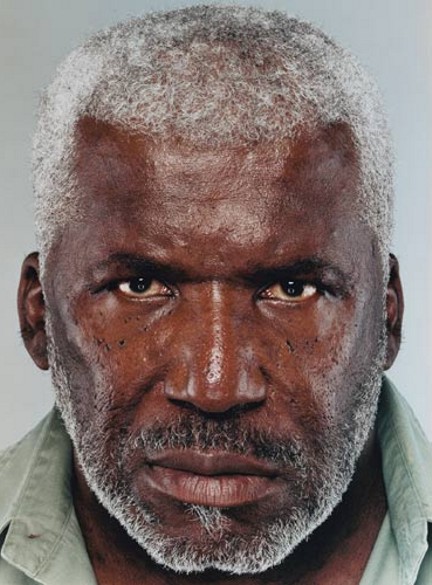
|
Leslie Ross has been denied citizenship in the tribe on the grounds that he is not truly Indian. "They said I don't have any Indian blood. They say blacks have never had a part in the Cherokee Nation," says Ross, his usually calm voice swelling with anger. "The thing is, there wouldn't be a Cherokee Nation if it weren't for my great-grandfather. Jesus, he was more Indian than the Indians!"
Ross is just one of at least 25,000 direct descendants of Freedmen who cannot join Oklahoma's largest tribes. Once paragons of racial inclusion and assimilation, the Native American sovereign nations have done an about-face and systematically pushed out people of African descent. "There's never been any stigma about intermarriage," says Stu Phillips, editor of The Seminole Producer, a local newspaper in central Oklahoma. "You've got Indians marrying whites, Indians marrying blacks. It was never a problem until they got some money."
These are boom times for the Five Civilized Tribes of Oklahoma – the Cherokee, Chickasaw, Choctaw, Creek, and Seminole – due in no small part to the 1988 Indian Gaming Regulatory Act that allowed the tribes to construct their own casinos. The Chickasaw's net assets have more than doubled to $315 million in the two years since it opened the mammoth WinStar Casinos complex in Thackerville. The corporate arm of the Cherokee Nation, Cherokee Nation Enterprises, is on track to make nearly $70 million this year thanks to a new casino in Catoosa. Then there's the government reparations fund. In 1990, the Seminoles received a $56 million settlement as compensation for the seizure of the tribe's ancestral lands in Florida almost 200 years ago.
The casino profits and make-good money have increased the standard of living for the recognized members of the tribes who make their homes in some of the poorest areas in the US. Cherokee Nation Enterprises allocates 25 percent of profits to the Cherokee government, which distributes the money in ways designed to help end the cycle of poverty – college scholarships, health care, and low-interest home loans. And the Seminole Nation offers grants for home repairs, which many of the ramshackle structures in Seminole County can sorely use. On the outskirts of Wewoka, the county seat, families loll on wooden porches that seem one gust of wind away from collapse.
And so, in recent years, a rush of Indians has come forward to claim tribal citizenship and get their share of the benefits. In 1980, there were 50,000 members of the Cherokee Nation of Oklahoma; today, there are more than a quarter million. But even as the official ranks of the Five Civilized Tribes have swelled, they've revised membership guidelines to exclude the Freedmen.
For the better part of the 20th century, black Indians were permitted to vote in elections, sit on tribal councils, and receive benefits. Tribal leaders now insist that the Freedmen were never actually citizens and that they will never attain the honor of membership because they don't have Native American blood. In 1983, the Cherokee tribe established a rule requiring citizens to carry a Certificate of Degree of Indian Blood. This federal document is available to anyone whose ancestors are listed on the Dawes Roll – a 1906 Indian census that excludes Freedmen. In 2000, the Seminoles expelled all 2,000 black members and denied their families a cut of the reparations money – never mind that their ancestors joined the tribe in the 18th century, endured the march from Florida to Oklahoma in the 1830s, and have considered themselves Indian for generations.
Outraged, numerous Freedmen have turned to the courts for help. In the most celebrated case, a black tribal leader named Sylvia Davis filed suit against the Seminole tribe in 1994 to get her son a $125 clothing stipend from the Seminole reparations money. But US courts have repeatedly refused to meddle in Indian affairs, noting that the sovereign nations determine their own membership criteria. Davis suffered a serious – and perhaps final – setback last year, when the Supreme Court refused to consider her appeal of a lower court's ruling that the Seminoles could not be sued in federal court. (The Bush administration filed a brief on behalf of the tribe.)
Now, just as the Freedmen's struggle appears all but lost, new hope is emerging from an unlikely place – the front lines of genetic science. Last year, several Freedmen leaders were approached by a molecular biology professor named Rick Kittles. As head of African Ancestry, a company he had recently founded to sell DNA testing services to amateur genealogists, Kittles promised to reveal any customer's preslavery roots, whether they stretch to the Tikar of Cameroon or the Mende of Sierra Leone.

|
Kittles heard about the Freedmen's plight from a friend at the University of Oklahoma and wondered how the black Indians' genetic makeup would compare to other subsets of the African-American population, such as the isolated residents of South Carolina's Gullah Islands. He visited the 2004 conference of the Descendants of the Freedmen of the Five Civilized Tribes, an organization dedicated to ending "discrimination against people of mixed Indian African descent," and offered free DNA tests. There are many light-skinned tribal citizens with less than 1 percent Indian genetic material; most Freedmen claim to have at least that much. So they began taking Kittles' test in hopes that science would succeed where rhetoric, litigation, and historical documents have failed.
"It's important that we be able to establish that we are Indian people, not just African people who were adopted into the tribe," says Marilyn Vann, who is suing the Cherokee Nation for citizenship. "If you're the average tribal member, you don't want to be discriminated against because you look Indian. So how can you discriminate against other people just because they have some African features?"
"I have something for you."
A linebacker-sized man with a shaved head and a disarming smile, Ron Graham is holding a manila envelope stuffed with hundreds of fuzzy photocopies bearing lists of names and numbers in chicken-scratch script. He ushers me to an empty table in Dale Hall, on the University of Oklahoma campus in Norman. We're here for the third annual meeting of the Descendants, the highlight of which will be Kittles' presentation on the results of last year's DNA tests.
When he's not working in a nearby xanthan gum factory, Graham moonlights as a genealogist-for-hire and vice president of the Descendants. He specializes in helping African-Americans who believe their Native American roots have been obscured by a combination of government racism and tribal avarice. Like Vann, Ross, and Davis, Graham took a DNA test to help prove his heritage and is in the midst of suing the Creeks to gain membership. In the final days of August, just as this issue of Wired hits newsstands, he will present his case, complete with DNA test results, to the tribal council. Graham believes that, in the face of scientific evidence, the Creeks will return his birthright.
Graham admits that money is a factor in his crusade: His three college-age sons could benefit from federal scholarships reserved for Native Americans. But he's not just looking for a handout. He seeks recognition as a Creek because that's how he has always identified himself. Graham fondly remembers his late father, Theodore "Blue" Graham, dancing at the stomp grounds near the town of Arbeka, where Creeks in traditional dress would gather for sacred ceremonies. Blue spoke Creek fluently and handed down some knowledge of the language to his son. During one of his citizenship hearings with Creek Nation officials, Ron was shocked to learn that he was one of the only people in the room who could recognize the word for girl written in the tribe's ancestral language. "My nation won't accept me because of skin color," he says, shaking his head.
Graham leafs through documents that he believes will demonstrate his ancestors had considerable Creek blood. He shows me a handwritten testimonial from Keeper Johnson, a full-blooded Creek and member of the Creek National Council, recognizing Blue as a fellow citizen. "I have known Theodore Graham since 1946 as a Creek Indian," the note reads. "He was traditional and spoke our language fluently. I always assumed he was Creek decent [sic]." Graham also dredged up documents known as Proofs of Death and Heirship, which list his father as one-eighth Indian – 12.5 percent.
Then he flips to his trump card. It reads, "Creek Nation, Creek Roll, Card No. 191." The date stamp: Approved by the Secretary of the Interior March 3, 1902. Above the seal is the name Rose McGilbray. When it was completed, likely by a clerk working for the Department of the Interior, McGilbray was 35 years old. In a column headed "Blood," the notation says "Full." "See, this is my great-great-grandmother on my mother's side," Graham says.
It's official recognition of McGilbray as a member of the Dawes Roll, a 1906 tally of Oklahoma Indians that is, according to the tribes, the only acceptable way to document Native American heritage. The Dawes Roll was the brainchild of a patrician Massachusetts senator, Henry Laurens Dawes, who wanted to "civilize" Indian territory by ending communal land ownership and allotting 160-acre plots to individual members of each tribe. At first, the tribes resisted the white man's efforts to destroy a centuries-old way of life. One Creek official compared the Dawes Commission, which oversaw the roll's creation, to the plague of locusts the Egyptians faced in the Bible. But the tribes relented, if only to avoid a conflict with the US government.
The task of enrolling the Indians was assigned to white clerks dispatched from Washington. They set up vast tent villages in Oklahoma towns and sent word through tribal officials that anyone interested in claiming their land had to register. Once the news spread, the tents were deluged with applicants, including scores of Caucasians claiming to have a sliver of Indian blood. More surprising for the clerks were the thousands of African-Americans who showed up. The 1890 census counted 18,636 people "of Negro descent in the Five Tribes." With no ability to speak any Native American language, the clerks often relied on the eyeball test. Those who fit the stereotype – ruddy skin, straight hair, high cheekbones – were placed on the "blood roll." The roll noted each person's "blood quantum," the fraction of their parentage that was ostensibly Native American. That number was sometimes based on documentation, but often, given the lack of accurate records and the language barrier, it was nothing more than crude guesswork.
Those with obvious African roots were sent to a different set of tents. There, they were added to the Freedmen Roll, which had no listing of blood quantum. Contemporary Freedmen believe the segregation was part of a government conspiracy to steal Indian land. Freedmen, unlike their peers on the blood roll, were permitted to sell their land without clearing the transaction through the Indian Bureau. That made the poorly educated Freedmen easy marks for white settlers migrating from the Deep South. Stories abound of Freedmen, unable to read the contracts they were signing, selling their 160-acre plots for as little as $15.
Even when a man had an Indian grandparent and should have been assigned a blood quantum of one-fourth, he might well have been placed on the Freedmen Roll. The eyeball test sometimes assigned siblings to separate rolls simply because one was born with less melanin. Full-blooded women married to black males suddenly became Freedmen with no blood quantum. It was a wholly arbitrary process, but it didn't matter much. Freedmen and Indians continued to live in relative harmony – until money and politics entered the picture.
Now the Oklahoma Freedmen find themselves haunted by a 99-year-old clerical error motivated by racism or incompetence, or both. "To this day, in Oklahoma, we don't exist, our history doesn't exist. Everyone should have the right to reclaim their heritage," says Anissia Vo. Her grandfather, a Creek Freedman, said his dying wish was for his entire family to become recognized members of the tribe. Vo, who lives in Muskogee, has spent the last four years documenting her heritage and struggling to get recognition from the Creek government. "My great-grandfather was born Creek, his birth certificate says he was Creek. But when he died, he died a black man. It's upsetting to deal with someone telling you, 'We don't care what you were yesterday – from now on you're going to have to be someone else.' We want them to acknowledge our existence."
Even in the rare case that a Freedman can trace an ancestor to the Dawes Roll, as with Ron Graham and his great-great-grandmother Rose McGilbray, the tribes find a new way to ensure that the Freedmen are always the odd men out. The Creek tribal council has so far refused to believe that Graham is related to McGilbray. Which is why Graham turned to science in search of irrefutable evidence. His test reveals that he's genetically 9 percent Native American. If the tribes insist that they'll only accept members who are Indian by blood, he'll show them what's in his blood.
Searching for obscure ancestors once meant combing through the bowels of the National Archives or sending shot-in-the-dark letters to strangers who share a last name. Now anyone with a budding interest in their family tree can order a DNA test kit. Swab the inside of your cheek, mail the sample to a lab, which searches for variations that appear in certain ethnicities, and in a few weeks you'll receive a CD telling you your great-great-grandmother was born in Senegal. For those who obsess over matters such as whether their heavy tooth enamel indicates Creole roots, genetic tests are a quick way to separate scientific fact from family fiction.
Many of the early adopters shell out a few hundred dollars just to prove to themselves that their cells are more exotic than their faces. "Ninety percent of the people interested in Native American ancestry are people who look as European as could be," says Tony Frudakis, chief scientific officer of DNAPrint Genomics, a Sarasota, Florida, genetic testing company. "They think they might have a Native American ancestor three or four generations back. We call it the American Indian Great-Grandmother Princess."
DNA tests works fine for amateur genealogists, but they're hardly foolproof. Two of the three on the market – Y chromosome and mitochondrial DNA – are limited in scope. The Y chromosome test looks for variations on just 1.5 percent of a male's genes. The mtDNA test reads a mere 0.005 percent of the subject's genome. While these tests have shown an ability to identify Native American gene lines, false negatives are a big problem.
The third type, known as the genome-wide test, has proven more useful to the Freedmen. DNAPrint's AncestryByDNA looks across all 23 pairs of chromosomes for mutations that seem to indicate one ancestry or another. The company uses proprietary statistical software to estimate what percentage of a person's genetic material originated where – 85 percent European and 15 percent East Asian, say, or 60 percent African, 20 percent Native American, and 20 percent European. "Chief John Ross was between one-eighth and one-sixteenth Cherokee [12.5 and 6.25 percent]," Leslie Ross says, "and my DNA test said I'm 3 or 4 percent."
But even the best tests have large margins of error. "If you show a positive result of 4 or 5 or 6 percentage points, there's a possibility that it isn't indicating Native American ancestry," Frudakis says. People with these levels of Indian blood may simply have genetic roots in places like Greece or Turkey, whose natives can convey Indian-ness in their DNA. Pakistanis, meanwhile, typically show 30 percent Native American heritage, for reasons that are not yet totally clear to scientists.
The more tests that DNA companies conduct, the more data they'll have for comparison, which should lead to more accurate results. As the DNA databases grow, it may be possible to identify ancestry by region – say, a Southwestern Navajo or a New England Pequot. Kittles' database can already name the African tribes an African-American customer descends from. Still, linking Freedmen to particular tribes remains tricky because of all the intermarrying that has occurred over the years.
Even if the testing companies could narrow a person's origins to a specific tribe, would it matter? The science might be improving, but the Indian tribes show no inclination to accept it – or even consider it. "Our citizenship laws require you to have a Cherokee ancestor who was on the Dawes Roll. Can a DNA sample prove that?" says Cherokee spokesperson Mike Miller. "If I did a DNA test, it might show that I have some German DNA. That doesn't mean I could go back to Germany and say, I have German ancestry and I would like to be a German citizen."
It's a crude analogy. Germany's citizenship laws don't require applicants to prove that a relative was listed on a flawed census of people with purported Teutonic blood. And if Miller so desired, he could become a naturalized German citizen someday. The Freedmen have no such chance.
Other tribes are just as closed-minded. When I ask Jerry Haney, the Seminole chief who expelled the tribe's black members in 2000, whether he might reconsider his stance based on DNA tests, he huffs. "They can claim all the Indian they want," he says, "but they cannot become a member of the Seminole Nation by blood. They're down there [on the roll] as Freedmen. They're separate."
Not all tribal members reject the merits of the Freedmen's cause. Seventy-year-old John Cornsilk, who is seven-eighths Cherokee, opposed the 1983 decision to rescind Freedmen's voting rights – which he said happened because many Freedmen were backing a progressive candidate running for chief. Tribal leaders, he says, "colluded and drew up a new set of rules that said only people that could produce one of those cards could be a member. What the Cherokee Nation of Oklahoma has been doing in regard to disenfranchising the Freedmen is all totally illegal."
Cornsilk's son, David, has taken up his father's cause. While working in the tribe's enrollment office in the 1980s, he found that about a third of the Freedmen applications had some documented Native American ancestry. When higher-ups told him that these people could not be enrolled, he became an advocate for the Freedmen from the inside, helping black plaintiffs prepare to file suit in tribal courts. "I came to realize that this was a deep-rooted problem, that racism in my tribe was profound," he says. "They were perpetrating a genocide, a paper genocide."
Rick Kittles is one of the last speakers at the Descendants conference. When he steps up to address the crowd, he speaks briefly about the underlying science. He describes how African genealogy is relatively easy to trace because of the population's high number of polymorphisms – genetic variations unique to a particular group. Then he gets down to business. He shows charts indicating that African ancestry in the 95 Freedmen he tested ranged from 4 to 76 percent, while European ancestry varied from 0 to 62 percent. "Native American was surprising," Kittles says as he presses the slide clicker to bring up the figures that everyone's waiting for. The range of Indian blood was from 0 to 30 percent, for an average of just 6 percent – almost identical to an East Coast African-American population.
The chatter in the crowd stops. Kittles is telling attendees that, genetically, they are no more Indian than blacks in New York City or Baltimore. "I expected it to be higher because of the experiences you've had," he admits. Then he offers a consolation.
He explains that many Freedmen display high levels of European ancestry, with the group average at 18 percent. He suggests that, ironically, this might be exactly what links them genetically to the Five Civilized Tribes. Indians, he explains, were in contact with white colonists starting in the 17th century, and there has been significant gene flow between the two groups. As a result, many people who identify themselves as Native American have very high percentages of European DNA. East Coast African-Americans show much weaker links to Europe. So the Freedmen's levels of white genetic material may, in fact, be the very proof of Indian-ness that they're looking for.
To prove this hypothesis, Kittles tells the attendees that more testing is in order. "If genetics is going to help this cause, we really need to do tests on so-called purebloods, to assess their European ancestry," he says, theorizing that they, too, will have high levels of European blood. "I think that many of those so-called purebloods aren't so pure."
It's not the definitive result the audience expected. And yet, some find good news in the message. The first woman to raise her hand is an elderly lady in the very last row, wearing a flowing kente cloth dress. She leans forward in her seat. "I just want to thank you," she says as loudly as she can muster. Her test revealed 11 percent Indian ancestry. "It's true what my grandmother said, that I did have Native American blood."
As I wait for the day's final speaker, Sharon Lindsay Scott stops by my seat to say hello. An attractive woman with light skin and prominent cheekbones, Scott has the sort of face that might have convinced a Dawes clerk to place her on the blood roll. She tells me she's a descendant of the Perrymans, an illustrious Creek family with a lineage that included a chief in the 1880s, Legus C. Perryman. But for reasons that are lost to time, her ancestors were made Freedmen. "You know, the Dawes Commission would take brothers and sisters and divide them up," she says. "They went by how you looked, and a lot of the Creeks are darker-skinned. So you might be a full-blood and …" Scott trails off in a sad laugh. "I mean, they had no DNA testing back then."
With Graham's assistance, she has pulled together copious documents that attest to her family's Creek lineage and plans to submit her application for membership soon. The final piece she'd been waiting for was Kittles' DNA test. Now she has it: 79 percent African-American, 19 percent European, and 2 percent Native American. Which means her Indian DNA results could very well be just the result of genetic noise.
The results leave me wondering whether the Freedmen are caught up in a false hope. Will the intersection of Rick Kittles and a group of desperate would-be Indians mark a turning point in their struggle for recognition? Or just another twist in a sad tale? I ask Scott whether she expects her application to be rejected, considering that her percentage of Indian blood is smaller than the test's margin of error. She seems both surprised and slightly offended: "I don't see how they can."
Race is a loaded word that genetic testing companies avoid in favor of phrases like biogeographical ancestry. No wonder. For centuries, science has been hijacked to validate racist beliefs. Scientific journals from the 19th century are replete with discussions of cranial capacity and brain weight, measurements used to explain why blacks would never be as intelligent as whites. Then there are eugenics and social Darwinism, used to twist Darwin's findings and shape Nazi ideology.
But if the young discipline of DNA testing has taught us anything, it's that the very notion of race is fading, at least from a genetic perspective. The world is populated by mongrels and half-breeds. Even those who base their self-worth on being of "pure" racial stock probably aren't. Every family tree has a thousand branches. "The technology will show how mixed we are," Kittles says. "There is no line of distinction you can draw between groups. There will be people who say they have 100 percent African blood. I can show them that they have significant European ancestry, too."
So far, reams of historical documents and legal briefs have gotten the Freedmen nowhere against a century-old document created by clueless white bureaucrats and enforced by men the Freedmen once considered brothers. The question is whether a tool created by molecular biologists will have any more luck.
Testing Bloodlines
There are three types of DNA test designed to pinpoint genetic heritage. Ranging in price from $99 to $299, all three start with a swab of the inner cheek and provide results in two to eight weeks. Here's what happens along the way.
The Y chromosome method searches for genetic markers on the Y chromosome. A particular polymorphism, or variation, on the DYS199 locus, for example, is unique to those indigenous to the Western hemisphere. So anyone with that polymorphism has Native American ancestry. This test has two problems: It measures only 1.5 percent of the genome – so you may have Indian genes that don't show up – and it works only on males.
To determine maternal lineage, the mitochondrial DNA test looks for polymorphisms in mitochondrial DNA. All humans have mtDNA, which is inherited from the mother, so anyone can take the test. But since it measures just 0.005 percent of the genome, false negatives are a big problem. Also, mtDNA results will show the presence of, say, European and Native American genes along the maternal line, but not the percentages of each.
The genome-wide technique scours the entire genome for "ancestry informative markers" that indicate "biogeographical ancestry." Statistical software then analyzes the data to determine what percentage of genes comes from where. This is the test of choice for the Freedmen. The good news is that it's exhaustive. But it's also the most expensive option, and it still can't trace a Native American's roots back to a particular tribe.
The Cherokee tribal council also rejected Marilyn Vann,
even though she has ancestors who walked the Trail of Tears.
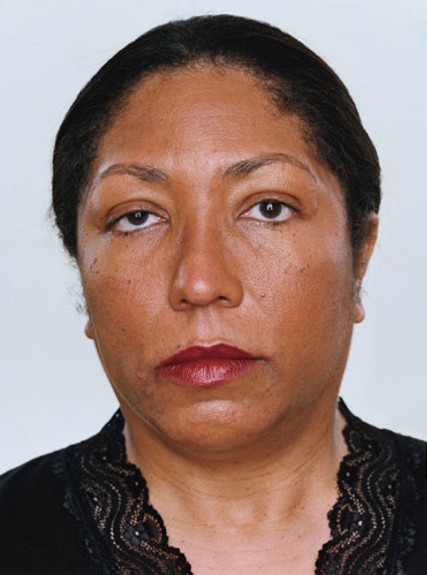
|
BUT THESE ALBINO MEN($5 indians) ARE INDIANS!!!


As it turns out, the White man was just using our
ignorance and dependence upon him for information:
to teach us fantastic lies about him and us,
just to reinforce his power and control over us.
Being totally dependant on the Albinos/colonist/euro's for information about ourselves,
our history, and the World:
is it any wonder then that American Blacks/copper color people make huge mistakes - even rich ones!!
ignorance and dependence upon him for information:
to teach us fantastic lies about him and us,
just to reinforce his power and control over us.
Being totally dependant on the Albinos/colonist/euro's for information about ourselves,
our history, and the World:
is it any wonder then that American Blacks/copper color people make huge mistakes - even rich ones!!
So you might ask...
If American Indians were Blacks and Mongols...
Then where did the term "REDMAN" or "RED INDIAN" come from?
If American Indians were Blacks and Mongols...
Then where did the term "REDMAN" or "RED INDIAN" come from?
| Benjamin Franklin said Native Americans were Tawny=BROWN; See his essay - Title: America as a Land of Opportunity Author: Benjamin Franklin - 1751 so where did "Redman or Redskin" come from?As is typical with all Albino history - THEY LIE! The Albinos teach that it was Indians who did the SCALPING, but they don't tell you that it was THEM who taught it to the Indians, and the Indians were only returning the FAVOR! Scalping had been known in Europe, according to accounts, as far back as ancient Greece. More often, though, the European manner of execution involved beheading. Enemies captured in battle - or people accused of political crimes - might have their heads chopped off by victorious warriors or civil authorities. In some places and times in European history, leaders in power offered to pay "bounties" (cash payments) to put down popular uprisings. In Ireland, for instance, the occupying English once paid bounties for the heads of their enemies brought to them. Europeans brought this cruel custom of paying for killings to the American frontier. Here they were willing to pay for just the scalp, instead of the whole head. The first documented instance in the American colonies of paying bounties for native scalps is credited to Governor Kieft of New Netherlands. By 1703, the Massachusetts Bay Colony was offering $60 for each native scalp. And in 1756, Pennsylvania Governor Morris, in his Declaration of War against the Lenni Lenape (Delaware) people, offered "130 Pieces of Eight [a type of coin], for the Scalp of Every Male Indian > Enemy, above the Age of > Twelve Years, " and "50 Pieces of Eight for the Scalp of Every Indian Woman, produced as evidence of their being killed." Massachusetts by that time was offering a bounty of 40 pounds (again, a unit of currency) for a male Indian scalp, and 20 pounds for scalps of females or of children under 12 years old. Albinos tell of the "Blood Thirsty" Indians, but in fact, it was the "Blood Thirsty" Albinos! BOSCAWEN, N.H. Monument depicting Colonial heroine Hannah Dustin, In her left hand she holds a fistful of human scalps. The inscription underneath tells of her 1697 capture in an Indian raid, and how she slew her captors as they slept -12 women and children. Later she returned for their scalps, having remembered they could fetch a bounty. (There are many statues of Dustin, this is the only one showing the scalps. The others are typical Albino lie statues).
So where did the terms "Redman or Redskin" come from? Historian Professor Roxanne Dunbar-Ortiz states that the American settlers were paid bounties for killing Indians, and they gave a name to the mutilated and bloody corpses they left in the wake of their scalp hunts: REDSKINS! |
Something to really think about!!
Whites tell us that just 12.5% (37 million) is the Black population of the United States – yet Obama couldn't be stopped by Whites. The actual number is more like 85-90 million. (If you really thought that Whites would have told you the truth about your numerical strength - you are an idiot).
This applies to 90% of U.S. Blacks: WHO taught you that your ancestors were imported from Africa as Slaves? Was it the Southern Cracker alone? Hell no, you would never have believed him. As you can see, only 308,005 African Slaves were landed in North America. How can you get 85-90 million from 308,005? You can't! Most Black North Americans are derived from Black native Americans or Expelled Black Europeans.
Whites tell us that just 12.5% (37 million) is the Black population of the United States – yet Obama couldn't be stopped by Whites. The actual number is more like 85-90 million. (If you really thought that Whites would have told you the truth about your numerical strength - you are an idiot).
This applies to 90% of U.S. Blacks: WHO taught you that your ancestors were imported from Africa as Slaves? Was it the Southern Cracker alone? Hell no, you would never have believed him. As you can see, only 308,005 African Slaves were landed in North America. How can you get 85-90 million from 308,005? You can't! Most Black North Americans are derived from Black native Americans or Expelled Black Europeans.
The Albinos use of Schools and Television/Media to Miseducate us.
As an example of the Albinos duplicitous nature: in current times American Albinos constantly refer to Blacks as "Minorities". This is of course to instill the thought that Albinos are numerous and powerful. They use their monopoly over media to reinforce this by constantly showing images from all parts of the World of only other Albinos and their Mulattoes. Except for Africa, rarely are Blacks shown in international News Stories, or travelogs. But their Make-believe "Black free World" is just like their histories; pure fantasy.
Here is another example of how the Albinos use their power over what we are taught to miseducate us: if you Google "What race has the largest population in the world?" The answer you are given is Quote: "The world's largest ethnic group is Han Chinese". Notice they replaced "Ethnic Group" with "Race". That's like saying that Germans are the largest racial population. Germans are of course NOT a Race! Just like Han Chinese are NOT a Race! Han Chinese, Japanese, Koreans, Twainese, Cambodians, Thais, Vietnamese, etc. are of the "MONGOL" Race. All together Mongols account for a little less that Two Billion people.
Do this: Google – “White World Population” Being very care with the syntax, remember you are asking an Albino source for truth. Naturally they will find any number of ways to lie to you if you use the wrong search words.
Answer from Wikipedia section titled “White People”:
850,000,000+ (which is about) 11.5% of the total world population (world population of 7.5 - 7.7 billion).
(This is not counting partial European descent) – Meaning the millions of Black/Albino Mulattoes in Latin America and the Middle-East.
Regions with significant (White) populations | United States = 252,784,000, Russia = 132,516,000
(Of course there is nowhere near 252,784,000 Albinos in the United States, (typical Albino race lie): Russia - is a lie too – but who cares?).
Facts and Figures:
The current population of Japan is 126,766,566 as of 2019, based on Worldometers elaboration of the latest United Nations data.
The current population of the Republic of Korea is 51,236,002 as of 2019,
North Korea population is estimated at 25,666,161 people at mid-year according to UN data.
The current population of China in 2019 is estimated at 1,433,783,686 people at mid-year according to UN data.
For a total East-Asian Mongol population of 1,637,452,415 people: which is about 21% of the Human population.
The current world population is 7.7 billion as of September 2019 according to the most recent United Nations estimates elaborated by Worldometers.
Here is the “Cold Water” of reality Albinos and Mongols: “YOUR” 21% + 11.5% = 32.5% of the Human population.
THE “OTHER” 67.5% or 5.19 BILLION IS BLACK!!! (or Mulatto).
Assuming about 540,000,000 (0.54 billion) Mulattoes world-wide, that means the "Pure-Black" population of the world is about 4.65 Billion.
Therefore YOU Albinos and Mongols are the "Minority": "YOU" are the outliers: "YOU" are the "Others".
Please try to remember
Addendum – the Southeast Asia countries of Cambodia, Burma, Malaysia, Thailand, Vietnam, the Philippines, and Indonesia are a 645 million person part of the World population. These are all formerly Black countries (like Hawaii) which were invaded by Mongols (sometimes by war, sometimes by migration). They are all ruled now by “Light-skinned” Mongols (who are of course Mulattoes themselves). But “Unlike Hawaii”: populations of native Blacks still survive, and then there are the descendants of the “Light-skinned” Mongol invaders, plus the Mulattoes produced by the two. In Vietnam and the Philippine’s, French and Spanish colonizers also added to the gene pool, making it impossible to categorize these countries as Black, Mongol, Albino, or Mulatto.
As an example of the Albinos duplicitous nature: in current times American Albinos constantly refer to Blacks as "Minorities". This is of course to instill the thought that Albinos are numerous and powerful. They use their monopoly over media to reinforce this by constantly showing images from all parts of the World of only other Albinos and their Mulattoes. Except for Africa, rarely are Blacks shown in international News Stories, or travelogs. But their Make-believe "Black free World" is just like their histories; pure fantasy.
Here is another example of how the Albinos use their power over what we are taught to miseducate us: if you Google "What race has the largest population in the world?" The answer you are given is Quote: "The world's largest ethnic group is Han Chinese". Notice they replaced "Ethnic Group" with "Race". That's like saying that Germans are the largest racial population. Germans are of course NOT a Race! Just like Han Chinese are NOT a Race! Han Chinese, Japanese, Koreans, Twainese, Cambodians, Thais, Vietnamese, etc. are of the "MONGOL" Race. All together Mongols account for a little less that Two Billion people.
Do this: Google – “White World Population” Being very care with the syntax, remember you are asking an Albino source for truth. Naturally they will find any number of ways to lie to you if you use the wrong search words.
Answer from Wikipedia section titled “White People”:
850,000,000+ (which is about) 11.5% of the total world population (world population of 7.5 - 7.7 billion).
(This is not counting partial European descent) – Meaning the millions of Black/Albino Mulattoes in Latin America and the Middle-East.
Regions with significant (White) populations | United States = 252,784,000, Russia = 132,516,000
(Of course there is nowhere near 252,784,000 Albinos in the United States, (typical Albino race lie): Russia - is a lie too – but who cares?).
Facts and Figures:
The current population of Japan is 126,766,566 as of 2019, based on Worldometers elaboration of the latest United Nations data.
The current population of the Republic of Korea is 51,236,002 as of 2019,
North Korea population is estimated at 25,666,161 people at mid-year according to UN data.
The current population of China in 2019 is estimated at 1,433,783,686 people at mid-year according to UN data.
For a total East-Asian Mongol population of 1,637,452,415 people: which is about 21% of the Human population.
The current world population is 7.7 billion as of September 2019 according to the most recent United Nations estimates elaborated by Worldometers.
Here is the “Cold Water” of reality Albinos and Mongols: “YOUR” 21% + 11.5% = 32.5% of the Human population.
THE “OTHER” 67.5% or 5.19 BILLION IS BLACK!!! (or Mulatto).
Assuming about 540,000,000 (0.54 billion) Mulattoes world-wide, that means the "Pure-Black" population of the world is about 4.65 Billion.
Therefore YOU Albinos and Mongols are the "Minority": "YOU" are the outliers: "YOU" are the "Others".
Please try to remember
Addendum – the Southeast Asia countries of Cambodia, Burma, Malaysia, Thailand, Vietnam, the Philippines, and Indonesia are a 645 million person part of the World population. These are all formerly Black countries (like Hawaii) which were invaded by Mongols (sometimes by war, sometimes by migration). They are all ruled now by “Light-skinned” Mongols (who are of course Mulattoes themselves). But “Unlike Hawaii”: populations of native Blacks still survive, and then there are the descendants of the “Light-skinned” Mongol invaders, plus the Mulattoes produced by the two. In Vietnam and the Philippine’s, French and Spanish colonizers also added to the gene pool, making it impossible to categorize these countries as Black, Mongol, Albino, or Mulatto.
The almost Mythical "African-American"
Exactly how much of the Black American population is derived from Black Asians (Black Indians), as opposed to Black Europeans, will not be known until Blacks do their own scientific research.
But as a "Point of fact" this modern nonsense of the ignorant: equating Black Americans with Africans, is totally NEW!
The term African-American has crept steadily into the nation's vocabulary since 1988, when the Rev. Jesse Jackson held a news conference to urge Americans to use it to refer to blacks. "It puts us in our proper historical context," Jackson said. Then adding in a recent interview that he still favored the term. "Every ethnic group in this country has a reference to some land base, some historical cultural base. African-Americans have hit that level of cultural maturity he said." (This is the same Jesse Jackson who went all over the World getting Black children to chant: "I AM SOMEBODY"). Clearly he felt they were "Nobodies" before he came along.
The truth of the matter can be found in Albino documents regarding Blacks: In the very first census in 1790, the population was categorized as "Free White: Males, Females (sub. adult and under 16), and "All other Free Persons", and Slaves. In the 1850 census, Americas "Free inhabitants" are categorized by age, sex, White, Black, or Mulatto. The Slave population was categorized by age, sex, and color (Yes - there were "White" Slaves). By the 1860 census Blacks and Mulattoes were categorized as "Colored". One would expect that if there were large numbers of Africans, the census would have a category for them, as it did for the nativity of Europeans and all others.
But please note: Only 308,005 African Slaves were imported into the United States. The "PIP" Replacement level fertility number, is a scientific calculation of needed "Live Births". This is the level of fertility at which a population exactly replaces itself from one generation to the next in "DEVELOPED Industrialized Countries" it is 2.1 children per woman". (Provided they live to adulthood and produce children of their own) .
(Fertility rate is generally expressed as the number of births per 1,000 women aged 15 to 44 in a calendar year).
As an example, the birth rate in Japan is 1.44 births per woman (2016).
Thus each year the Japanese population declines by 0.1% each year.
However, because of the horrible conditions of Slavery: Poor Food, little Rest, Over-work, Short life-span, High Infant mortality, Beatings etc. Logically then, one can safely assume that for ill-fed, overworked, high infant mortality Slaves, with none or minimal medical attention; the number would be much higher, perhaps 6 or 7 children would need to be born - JUST TO MAINTAIN THE SLAVE POPULATION AT CURRENT LEVELS. Thus we calculate that the U.S. population of Blacks derived from those African Slaves imported into the United States from 1651 to 1875, would be less than 280,000 people today.
Exactly how much of the Black American population is derived from Black Asians (Black Indians), as opposed to Black Europeans, will not be known until Blacks do their own scientific research.
But as a "Point of fact" this modern nonsense of the ignorant: equating Black Americans with Africans, is totally NEW!
The term African-American has crept steadily into the nation's vocabulary since 1988, when the Rev. Jesse Jackson held a news conference to urge Americans to use it to refer to blacks. "It puts us in our proper historical context," Jackson said. Then adding in a recent interview that he still favored the term. "Every ethnic group in this country has a reference to some land base, some historical cultural base. African-Americans have hit that level of cultural maturity he said." (This is the same Jesse Jackson who went all over the World getting Black children to chant: "I AM SOMEBODY"). Clearly he felt they were "Nobodies" before he came along.
The truth of the matter can be found in Albino documents regarding Blacks: In the very first census in 1790, the population was categorized as "Free White: Males, Females (sub. adult and under 16), and "All other Free Persons", and Slaves. In the 1850 census, Americas "Free inhabitants" are categorized by age, sex, White, Black, or Mulatto. The Slave population was categorized by age, sex, and color (Yes - there were "White" Slaves). By the 1860 census Blacks and Mulattoes were categorized as "Colored". One would expect that if there were large numbers of Africans, the census would have a category for them, as it did for the nativity of Europeans and all others.
But please note: Only 308,005 African Slaves were imported into the United States. The "PIP" Replacement level fertility number, is a scientific calculation of needed "Live Births". This is the level of fertility at which a population exactly replaces itself from one generation to the next in "DEVELOPED Industrialized Countries" it is 2.1 children per woman". (Provided they live to adulthood and produce children of their own) .
(Fertility rate is generally expressed as the number of births per 1,000 women aged 15 to 44 in a calendar year).
As an example, the birth rate in Japan is 1.44 births per woman (2016).
Thus each year the Japanese population declines by 0.1% each year.
However, because of the horrible conditions of Slavery: Poor Food, little Rest, Over-work, Short life-span, High Infant mortality, Beatings etc. Logically then, one can safely assume that for ill-fed, overworked, high infant mortality Slaves, with none or minimal medical attention; the number would be much higher, perhaps 6 or 7 children would need to be born - JUST TO MAINTAIN THE SLAVE POPULATION AT CURRENT LEVELS. Thus we calculate that the U.S. population of Blacks derived from those African Slaves imported into the United States from 1651 to 1875, would be less than 280,000 people today.
Black Inventors
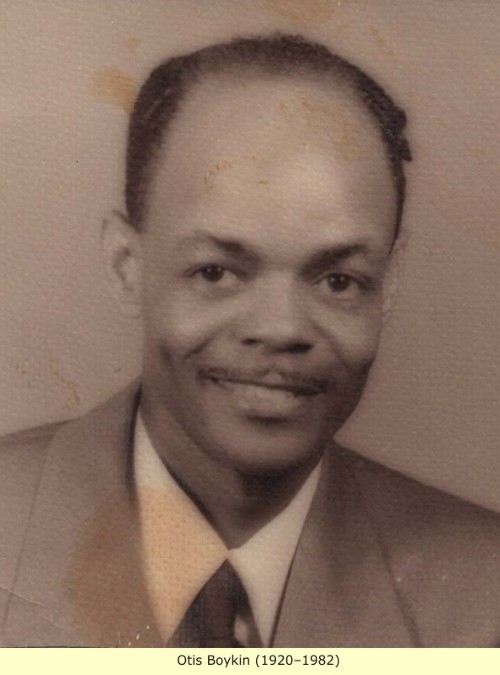
One of the most pervasive inventions of modern history on which virtually ALL electrical/electronics is dependent is an invention by black inventor; OTIS BOYKIN.
Mr. Boykin is the inventor of the RESISTOR, a basic electrical component which can be found used in electrical equipment like Microwave ovens, clocks, computers, radios, TVs.
None of these products would be able to work without the use of Otis Boykin's resistor.
Few inventors have had the lasting impact of Otis Boykin. Look around the house today and you'll see a variety of devices that utilize components made by Boykin – including computers, radios and TV sets. Boykin's inventions are all the more impressive when one considers he was an African American in a time of segregation and the field of electronics was not as well-established as it is today.
Though he attended the Illinois Institute of Technology for a time, Otis Boykin never made it to graduation because he couldn't afford tuition. Instead, Boykin went to work as an inventor. He received his first patent in 1959 for a wire resistor that allowed a precise amount of electricity to flow to a component. Two year later, he created an even better resistor that could be manufactured inexpensively and withstand extreme temperature changes and shock. A low-cost product that was more reliable, the invention brought Otis Boykin to the forefront of American electronics.
Consumer electronics manufacturers, the United States military and IBM all placed orders for the resistor. It would come to be used in household appliances, computers and guided missiles – and is still used in many of those devices to this very day. But, perhaps most importantly, a version of his resistor was used in the invention of the pacemaker. That device, which keeps the heart beating regularly through electronic pulses, has helped to extend the lives of hundreds of thousands of individuals.
And Otis Boykin's accomplishments didn't stop there. He continued to invent throughout the duration of his life (which ended in 1982), working as a consultant for firms in America and Europe. All in all, he earned 11 patents and invented 28 different electronic devices.
To observe how important and pervasive Mr. Boykin's resistor is used throughout all electronics, even the simple LED circuit below must use two resistors to work. A modern computer will literally use millions or perhaps billions of resistors. Why the basic resistor isn't mentioned in Nat'l Geo's list is telling since none of the listed electrical/electronics mentioned would be possible without the resistor.

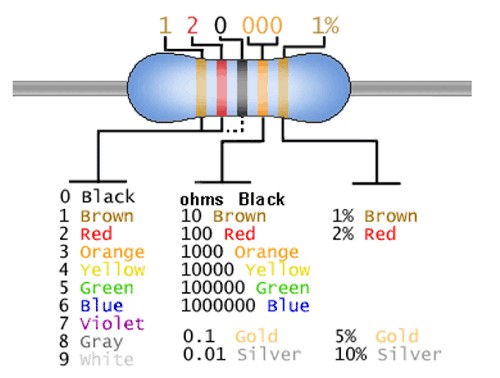
Otis Boykin
Biography
Otis Frank Boykin was born in 1920 in Dallas, Texas. His mother Sarah was a maid, who died when Otis was only a year old, of heart failure, which inspired him to make the control unit. His father Walter was a carpenter, who later became a minister. Otis Boykin attended Booker T. Washington High School in Dallas, where he was the valedictorian, graduating in 1938. He attended Fisk University on a scholarship and worked as a laboratory assistant at the university's nearby aerospace laboratory. He then moved to Chicago, where he studied at Illinois Institute of Technology but dropped out after two years; some sources say it was because he could not afford his tuition, but he later told Julia Scott Reed of the Dallas Morning News that he left for an employment opportunity and did not have time to return to finish his degree. He was discovered and mentored by Dr. Denton Deere, an engineer and inventor with his own laboratory.
He graduated from Fisk University in 1941 and got a job as a laboratory assistant, testing automatic aircraft controls. In 1944, he moved on to work for the P.J. Nilsen Research Labs in Illinois. Shortly thereafter, he started his own company, Boykin-Fruth Inc. The firm Boykin-Fruth, Inc., would collaborate on a number of projects.
Boykin patented 28 electronic devices. One of his early inventions was an improved wire resistor, which had reduced inductance and reactance, due to the physical arrangement of the wire. Other notable inventions include a variable resistor used in guided missiles and small component thick-film resistors for computers.
Boykin's most famous invention was likely a control unit for the artificial cardiac pacemaker. The device essentially uses electrical impulses to maintain a regular heartbeat.
Boykin died of a heart failure in Chicago in 1982.
Alan Emtage
Top 10 Search Engines In The World
Alan Emtage is responsible for THESE!
Google
Bing
Yahoo
Ask.com
AOL.com
Baidu
Wolframalpha
DuckDuckGo
Internet Archive
ChaCha.com
Alan Emtage was born in Barbados, the son of Sir Stephen and Lady Emtage. He attended high school at Harrison College from 1975 to 1983 (and in 1981 became the owner of a Sinclair ZX81 with 1K of memory), where he graduated at the top of his class, winning the Barbados Scholarship.
In 1983 Emtage entered McGill University in Montreal, Quebec, Canada, studying for an honors Bachelor's degree in computer science which was followed by a Master's degree in 1987 from which he graduated in 1991. Emtage was part of the team that brought the first Internet link to eastern Canada (and only the second link in the country) in 1986. In 1989 while a student and working as a systems administrator for the School of Computer Science, Emtage conceived and implemented the original version of the Archie search engine, the world's first Internet search engine.
In 1992, Emtage along with Peter J. Deutsch formed Bunyip Information Systems the world's first company expressly founded for and dedicated to providing Internet information services with a licensed commercial version of the Archie search engine.
Emtage was a founding member of the Internet Society and went on to create and chair several working groups at the Internet Engineering Task Force (IETF), the standard-setting body for the Internet. Working with other pioneers such as Tim Berners-Lee, Marc Andreessen, Mark McCahill (creator of Gopher) and Jon Postel, Emtage co-chaired the Uniform Resource Identifier working group which created the standard for Uniform Resource Locators (URLs).
Emtage has spoken and lectured on Internet Information Systems.
Emtage is chief technical officer at Mediapolis, a web engineering company in New York City.

One of the most pervasive inventions of modern history on which virtually ALL electrical/electronics is dependent is an invention by black inventor; OTIS BOYKIN.
Mr. Boykin is the inventor of the RESISTOR, a basic electrical component which can be found used in electrical equipment like Microwave ovens, clocks, computers, radios, TVs.
None of these products would be able to work without the use of Otis Boykin's resistor.
Few inventors have had the lasting impact of Otis Boykin. Look around the house today and you'll see a variety of devices that utilize components made by Boykin – including computers, radios and TV sets. Boykin's inventions are all the more impressive when one considers he was an African American in a time of segregation and the field of electronics was not as well-established as it is today.
Though he attended the Illinois Institute of Technology for a time, Otis Boykin never made it to graduation because he couldn't afford tuition. Instead, Boykin went to work as an inventor. He received his first patent in 1959 for a wire resistor that allowed a precise amount of electricity to flow to a component. Two year later, he created an even better resistor that could be manufactured inexpensively and withstand extreme temperature changes and shock. A low-cost product that was more reliable, the invention brought Otis Boykin to the forefront of American electronics.
Consumer electronics manufacturers, the United States military and IBM all placed orders for the resistor. It would come to be used in household appliances, computers and guided missiles – and is still used in many of those devices to this very day. But, perhaps most importantly, a version of his resistor was used in the invention of the pacemaker. That device, which keeps the heart beating regularly through electronic pulses, has helped to extend the lives of hundreds of thousands of individuals.
And Otis Boykin's accomplishments didn't stop there. He continued to invent throughout the duration of his life (which ended in 1982), working as a consultant for firms in America and Europe. All in all, he earned 11 patents and invented 28 different electronic devices.
To observe how important and pervasive Mr. Boykin's resistor is used throughout all electronics, even the simple LED circuit below must use two resistors to work. A modern computer will literally use millions or perhaps billions of resistors. Why the basic resistor isn't mentioned in Nat'l Geo's list is telling since none of the listed electrical/electronics mentioned would be possible without the resistor.


Otis Boykin
Otis Bobby Boykin (August 29, 1920, Dallas, Texas – March 13, 1982, Chicago, Illinois) was an American inventor and engineer.
Biography
Otis Frank Boykin was born in 1920 in Dallas, Texas. His mother Sarah was a maid, who died when Otis was only a year old, of heart failure, which inspired him to make the control unit. His father Walter was a carpenter, who later became a minister. Otis Boykin attended Booker T. Washington High School in Dallas, where he was the valedictorian, graduating in 1938. He attended Fisk University on a scholarship and worked as a laboratory assistant at the university's nearby aerospace laboratory. He then moved to Chicago, where he studied at Illinois Institute of Technology but dropped out after two years; some sources say it was because he could not afford his tuition, but he later told Julia Scott Reed of the Dallas Morning News that he left for an employment opportunity and did not have time to return to finish his degree. He was discovered and mentored by Dr. Denton Deere, an engineer and inventor with his own laboratory.
He graduated from Fisk University in 1941 and got a job as a laboratory assistant, testing automatic aircraft controls. In 1944, he moved on to work for the P.J. Nilsen Research Labs in Illinois. Shortly thereafter, he started his own company, Boykin-Fruth Inc. The firm Boykin-Fruth, Inc., would collaborate on a number of projects.
Boykin patented 28 electronic devices. One of his early inventions was an improved wire resistor, which had reduced inductance and reactance, due to the physical arrangement of the wire. Other notable inventions include a variable resistor used in guided missiles and small component thick-film resistors for computers.
Boykin's most famous invention was likely a control unit for the artificial cardiac pacemaker. The device essentially uses electrical impulses to maintain a regular heartbeat.
Boykin died of a heart failure in Chicago in 1982.
Alan Emtage
Alan Emtage (born November 27, 1964) conceived and implemented the first version of "Archie,"
a pre-Web internet search engine for locating material in public FTP archives.
a pre-Web internet search engine for locating material in public FTP archives.
Top 10 Search Engines In The World
Alan Emtage is responsible for THESE!
Bing
Yahoo
Ask.com
AOL.com
Baidu
Wolframalpha
DuckDuckGo
Internet Archive
ChaCha.com
Alan Emtage was born in Barbados, the son of Sir Stephen and Lady Emtage. He attended high school at Harrison College from 1975 to 1983 (and in 1981 became the owner of a Sinclair ZX81 with 1K of memory), where he graduated at the top of his class, winning the Barbados Scholarship.
In 1983 Emtage entered McGill University in Montreal, Quebec, Canada, studying for an honors Bachelor's degree in computer science which was followed by a Master's degree in 1987 from which he graduated in 1991. Emtage was part of the team that brought the first Internet link to eastern Canada (and only the second link in the country) in 1986. In 1989 while a student and working as a systems administrator for the School of Computer Science, Emtage conceived and implemented the original version of the Archie search engine, the world's first Internet search engine.
In 1992, Emtage along with Peter J. Deutsch formed Bunyip Information Systems the world's first company expressly founded for and dedicated to providing Internet information services with a licensed commercial version of the Archie search engine.
Emtage was a founding member of the Internet Society and went on to create and chair several working groups at the Internet Engineering Task Force (IETF), the standard-setting body for the Internet. Working with other pioneers such as Tim Berners-Lee, Marc Andreessen, Mark McCahill (creator of Gopher) and Jon Postel, Emtage co-chaired the Uniform Resource Identifier working group which created the standard for Uniform Resource Locators (URLs).
Emtage has spoken and lectured on Internet Information Systems.
Emtage is chief technical officer at Mediapolis, a web engineering company in New York City.
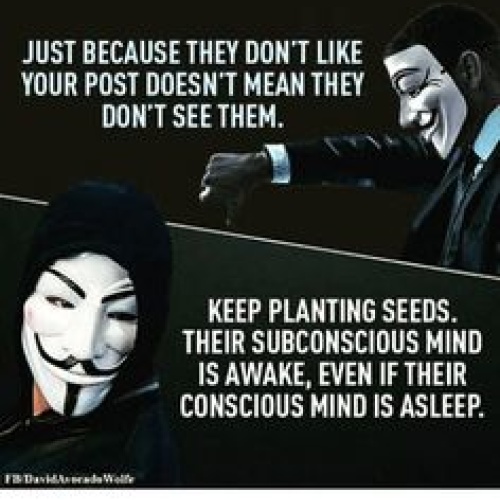
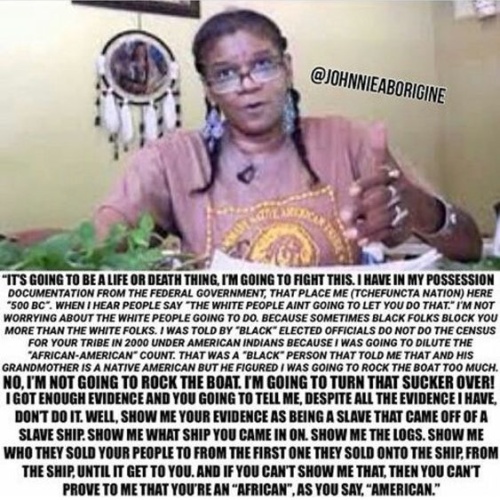
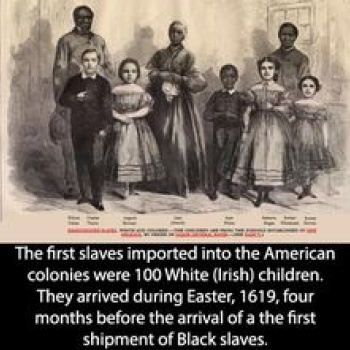
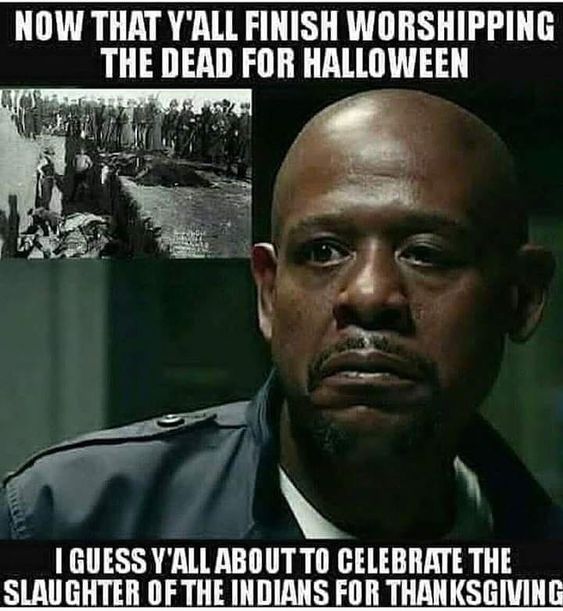
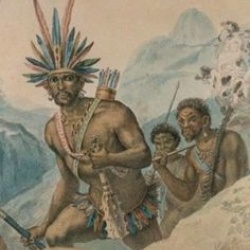
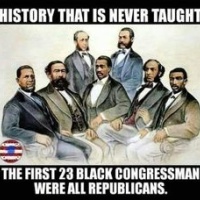
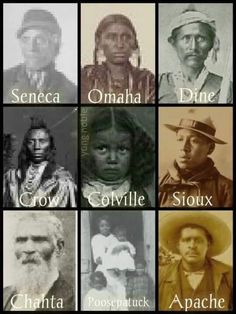
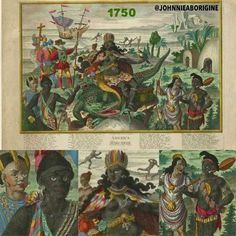
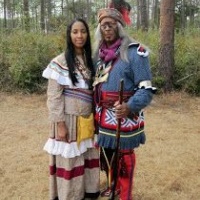
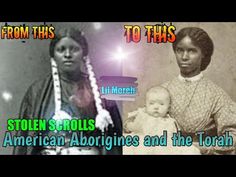
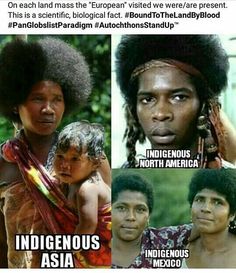
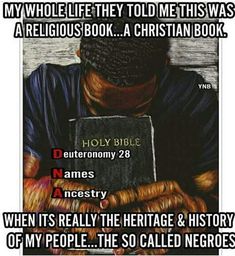
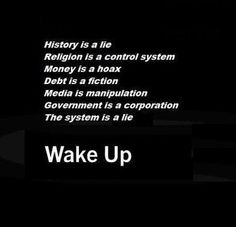
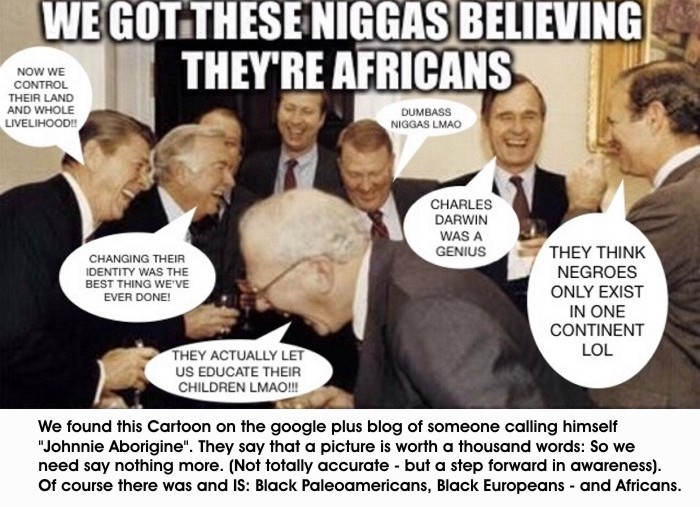
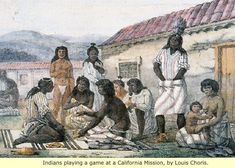
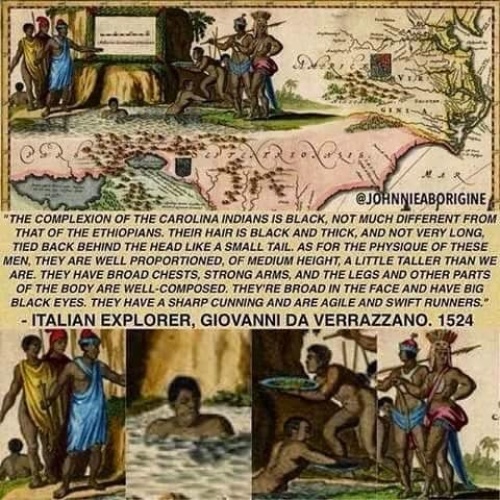
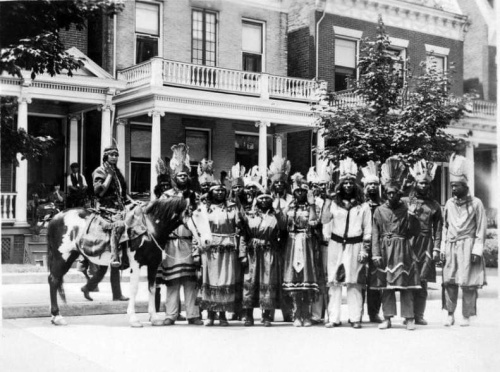
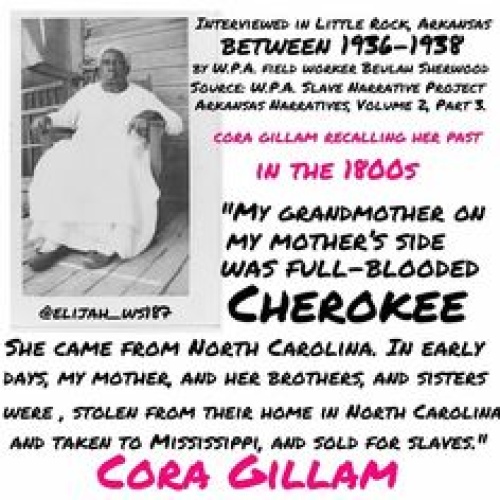

Again, something to think about!! Then again, dont!!
Whites tell us that just 12.5% (37 million) is the Black population of the United States – yet Obama couldn't be stopped by Whites. The actual number is more like 85-90 million. (If you really thought that Whites would have told you the truth about your numerical strength - you are an idiot).
If your a music lover, this should move you!! Rock, country, jazz, r&b and so on, is our music!! These talentless euro didnt invent this, they stole it and put their name on it(just like everything else)!! But aint nobody listening
The History of Rock-n-Roll (formerly Rhythm and Blues)
As usual Blacks don't often keep or know their own history,
so here again we use Albino reports to Frame our presentation of Black history
Dictionary.com - Etymology of Rock-n-Roll
Trixie Smith's 1922 blues ballad, “My Man Rocks Me (With One Steady Roll)” may be the first use of the phrase in song. Alan Freed, a disc jockey in Cleveland, Ohio used the phrase, “The Rock and Roll Session” to describe the amalgamation of rhythm and blues and country music he played during his show.
Albert James "Alan" Freed (December 15, 1921 – January 20, 1965) was an American disc jockey. He became internationally known for promoting the mix of blues, country, rhythm and blues music on the radio in the United States and Europe under the name of rock and roll. His career was destroyed by the payola scandal that hit the broadcasting industry in the early 1960s.
Freed was born to a Russian-Jewish immigrant father, Charles S. Freed, and Welsh-American mother, Maude Palmer, in Windber, Pennsylvania. In 1933, Freed's family moved to Salem, Ohio, where Freed attended Salem High School, graduating in 1940. While Freed was in high school, he formed a band called the Sultans of Swing in which he played the trombone. Freed's initial ambition was to be a bandleader; however, an ear infection put an end to this dream.
In the late 1940s, while working at WAKR (1590 AM) in Akron, Ohio, Freed met Cleveland record store owner Leo Mintz. Record Rendezvous, one of Cleveland's largest record stores, had begun selling rhythm and blues records. Mintz told Freed that he had noticed increased interest in the records at his store, and encouraged him to play them on the radio. Freed moved to Cleveland in 1951, still under a non-compete clause with WAKR. However, in April, through the help of William Shipley, RCA's Northern Ohio distributor, he was released from the non-compete clause. He was then hired by WJW radio for a midnight program sponsored by Main Line, the RCA Distributor, and Record Rendezvous. Freed peppered his speech with hipster language, and, with a rhythm and blues record called "Moondog" as his theme song, broadcast R&B hits into the night.
Mintz proposed buying airtime on Cleveland radio station WJW (850 AM), which would be devoted entirely to R&B recordings, with Freed as host. On July 11, 1951, Freed began playing rhythm and blues records on WJW. While R&B records were played for many years on lower powered, inner city radio stations aimed at African-Americans, this is arguably the first time that authentic R&B was featured regularly on a major, mass audience station. Freed called his show "The Moondog House" and billed himself as "The King of the Moondoggers".
His on-air manner was energetic, in contrast to many contemporary radio presenters of traditional pop music, who tended to sound more subdued and low-key in manner. He addressed his listeners as if they were all part of a make-believe kingdom of hipsters, united in their love for black music. He also began popularizing the phrase "rock and roll" to describe the music he played.
Later that year, Freed promoted dances and concerts featuring the music he was playing on the radio. He was one of the organizers of a five-act show called "The Moondog Coronation Ball" on March 21, 1952, at the Cleveland Arena. This event is known as the first rock and roll concert. Crowds attended in numbers far beyond the arena's capacity, and the concert was shut down early due to overcrowding and a near-riot. Freed gained a priceless notoriety from the incident. WJW immediately increased the airtime allotted to Freed's program, and his popularity soared.
In those days, Cleveland was considered by the music industry to be a "breakout" city, where national trends first appeared in a regional market. Freed's popularity made the pop music business take notice. Soon, tapes of Freed's program began to air in the New York City area over station WNJR 1430 (now WNSW), in Newark, New Jersey.
Although still at Cleveland radio station WJW in 1954, by August of that year, Freed took his R&B revue show to New York. Around this time he had also begun talking with radio station WINS in New York about joining their station. On August 1, 1954, Freed’s “Moondog Jubilee Of Stars Under the Stars” was held at Brooklyn’s Ebbets Field Ebbets, then still home of baseball’s Brooklyn Dodgers. On the bill at that concert were the Dominoes, the Clovers, the Orioles, Fats Domino, Little Walter, Muddy Waters, Count Basie’s Orchestra, and Buddy Johnson’s Orchestra.
A large, racially mixed crowd came out for this concert, like others Freed had helped organize or emcee. Back on his radio show, Freed had been forced to stop using his DJ name, “Moondog” in 1954 after a lawsuit was filed by the blind New York city street musician who had recorded the song “Moondog Symphony.” Freed renamed his show “Alan Freed’s Rock and Roll Party.” Freed had also tried to copyright the term “rock `n roll,” which wasn’t widely used at the time. He took out a copyright on the term in partnership with music businessman Morris Levy, veteran promoter Lew Platt, and radio station WINS. But soon, the tidal wave of rock ’n roll music made the term common parlance, and Freed’s claim went for naught.
Sounds nice but of course it's only "Partly" true.
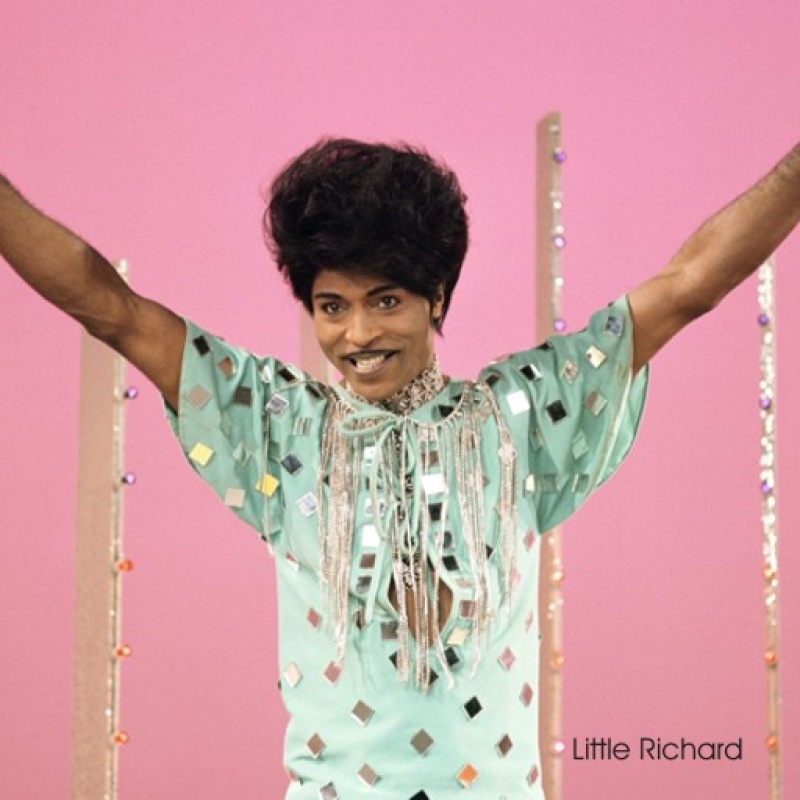
As Little Richard related in an interview, Albino Parents knew Rhythm and Blues was Black music: and they were very upset with the thought of their young daughters swooning at the gyrations of Black dudes on stage at Rhythm and Blues Concerts. So to make the whole package more palatable to Albino parents, Alan Freed coined the phase "ROCK-N-ROLL"!
Of course a nice Albino Boy like Elvis, SINGING and DANCING Black, made Black music acceptable to Albinos.
Five Candidates for the First Rock 'n' Roll Song
BY Bill DeMain
March 23, 2012
Though commercially successful singles like Bill Haley & The Comets’ “Rock Around The Clock” (1954), Little Richard’s “Tutti Frutti” (1955) and Elvis Presley’s “Hound Dog” (1956) were among the songs that popularized the genre and made it a household word, (among Albinos) they didn’t invent it.
To find the birth cry of rock ‘n’ roll, we have to go a little further back.
And if we define rock ‘n’ roll as the collision of blues, country and Tin Pan Alley pop, with a manic spirit and, as Chuck Berry put it, a backbeat you can’t lose, then the following are all leading contenders for the song that changed popular music forever.
1. “That’s All Right, Mama” – Arthur “Big Boy” Crudup (1946)
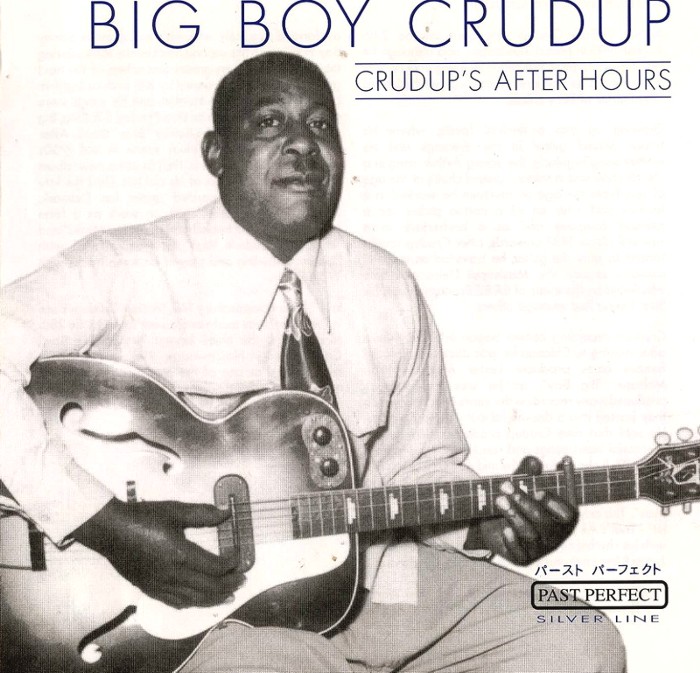
In 1940, Arthur Crudup was reportedly living in a packing crate near an L train station in Chicago, playing songs on the street for tips. Things got better for him as the decade went on, and he landed a recording contract that led to a career as a well-known blues singer and songwriter. In 1946, Crudup recorded his song “That’s All Right, Mama.” Though it wasn’t a hit at the time, it stands as a convincing front-runner for rock ‘n’ roll’s ground zero. With a tight combo of guitar, upright bass and drums bashing out accompaniment behind Crudup’s raw, powerful voice, it sounds a decade ahead of its time. There’s even a wild guitar solo, prefaced by Crudup shouting, “Yeah, man.” Very rock ‘n’ roll. And the last thirty seconds of the record pick up steam with the kind of unhinged energy that would become an essential element of all great rock records.
Eight years later, a 19-year old Elvis Presley did a cover record of it for his first single. Soon, Crudup was being called “the Father of Rock ‘n’ Roll.”
2. “Good Rockin’ Tonight” – Wynonie Harris (1948)

Well, I heard the news, there’s good rockin’ tonight. . .” With an opening line that could double as a rallying call for rock ‘n’ roll, this song was written and recorded in 1947 by R & B artist Roy Brown. Brown had originally offered the tune to raspy-voiced singer Wynonie “Mr. Blues” Harris, but Harris turned it down. After Brown had a hit with it, Harris reconsidered, cutting a version that upped the ante. Bouncing boogie woogie piano, honking tenor sax, drums and handclaps accenting the backbeat, and Harris shouting “Hoy, hoy, hoy!” – it all adds up to a raucous glimpse into the future. Again, a young Elvis Presley was listening. In 1954, he released his version of the song. He was also watching. Harris’s stage moves included pelvic jabs, lip curls and evangelical wavings of his arms and hands. All would become part of Elvis’s stage persona.
3. “Rock This Joint” – Jimmy Preston and his Prestonians (1949)
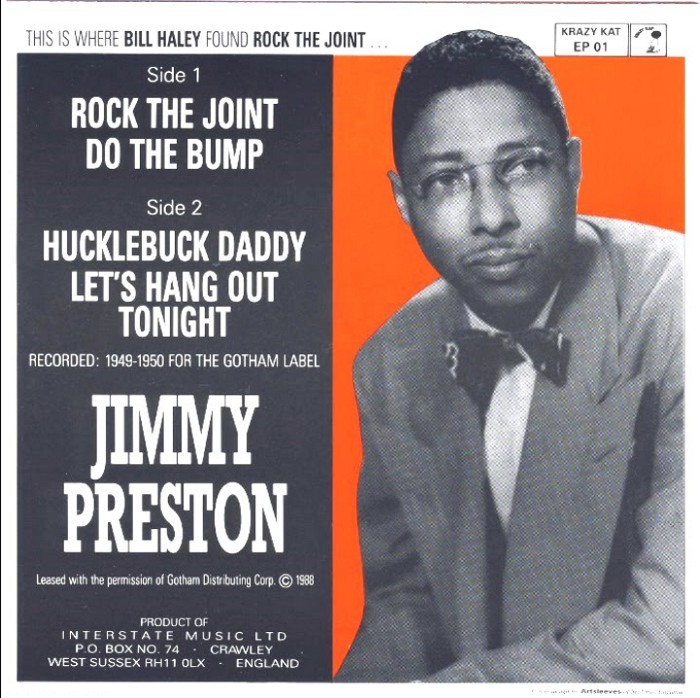
This record has the prerequisite driving beat, boogie bass line and blues-based melody, but what really sets it apart is the party atmosphere. The whole tune is punctuated by screams, shouts and yelps that conjure up young couples dancing and spinning in a smoky nightclub “until the law come knockin’ at the door.” Preston was a sax-playing band leader who cut some minor hits in the ‘40s, then ditched music in the early ‘50s for the church. In the chorus of this song (“We’re gonna rock, we’re gonna rock”), you can clearly hear the inspiration for Bill Haley’s recording of “Rock Around The Clock” (written by Max Freedman and James Myers). In fact, it had been The Comets’ beefed-up arrangement of “Rock This Joint” in 1952 that convinced Haley to move away from his western swing sound towards rock ‘n’ roll.
4. “Saturday Night Fish Fry” – Louis Jordan & The Tympany Five (1949)
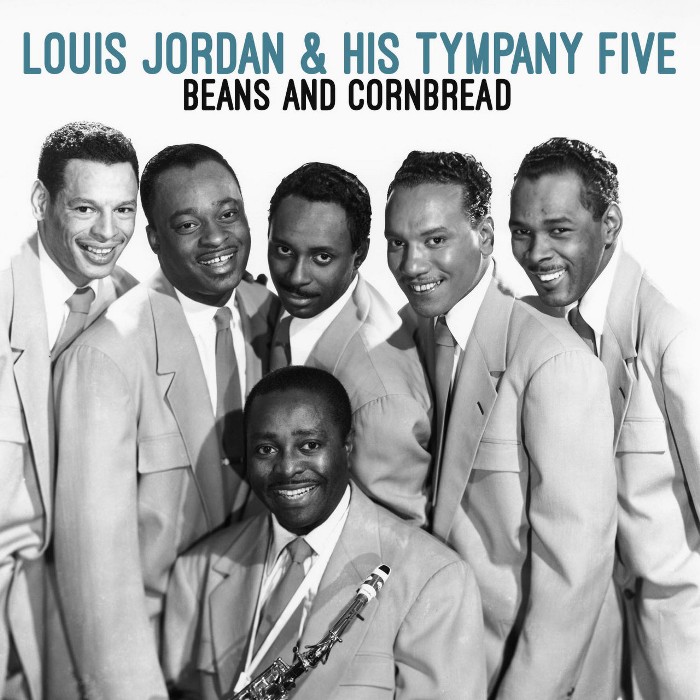
I’ve written about Jordan for mental_floss before, as I believe he’s one of the most important – and overlooked - figures in modern popular music. Two of his favorite subjects for songs were eating and partying. This huge hit from 1949 (it was one of the first “race” records to cross over to the national charts) combined both, with a lively jump rhythm, call-and response chorus and double-string electric guitar riffs that Chuck Berry would later admit to copping. Milt Gabler, who produced many of Jordan’s best records, also went on to work with Bill Haley and The Comets. “All the tricks I used with Louis Jordan, I used with Bill Haley,” he said.
5. “Rocket 88” - Jackie Brenston and his Delta Cats (1951)
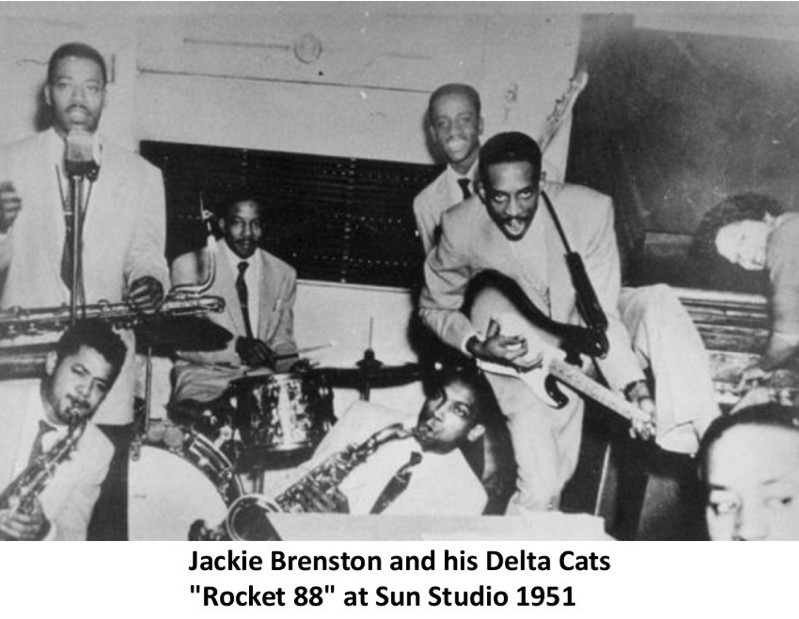
In 1951, while driving to Memphis for a recording session, Ike Turner and The Kings of Rhythm wrote this song about the fastest car on the road - the Hydra Matic Drive V-8 Oldsmobile 88, nicknamed the Rocket 88. In the studio, the band cut the song with sax player Jackie Brenston singing lead. The record’s main innovation? The guitarist’s amplifier had a torn speaker, and producer Sam Phillips (who a few years later, would discover Elvis) jerry-rigged it, stuffing some packing paper in the speaker cone. The unexpected result was a fuzzy sound that defined the song’s raw vibe, and became a blueprint for the guitar tone of everyone from Chuck Berry to the Rolling Stones. Though Ike Turner claimed he wrote the song, it was credited to Jackie Brenston. It went to #1 on the R & B charts and gave Brenston a brief moment of stardom. Oldsmobile presented him with a brand new Rocket 88 in appreciation.
The Rock-n-Roll "Hall of Fame"
Another Albino opportunity to use their Monopoly over Media to create a "Fantasy Reality" for themselves.
The Rock and Roll Hall of Fame, located on the shore of Lake Erie in downtown Cleveland, Ohio, recognizes and archives the history of the best-known and most influential artists, producers, engineers, and other notable figures who have had some major influence on the development of rock and roll.
Rock and roll (often written as rock & roll or rock 'n' roll) is a genre of popular music that originated and evolved in the United States during the late 1940s and early 1950s from musical styles such as gospel, jump blues, jazz, boogie woogie, and rhythm and blues, along with country music. While elements of what was to become rock and roll can be heard in blues records from the 1920s and in country records of the 1930s,
The Rock and Roll Hall of Fame Foundation was established on April 20, 1983, by Atlantic Records founder and chairman Ahmet Ertegun (born to a wealthy Turkish family in Istanbul). In 1986, Cleveland was chosen as the Hall of Fame's permanent home.
Atlantic Recording Corporation (simply known as Atlantic Records) is an American major record label founded in October 1947 by Ahmet Ertegün and Herb Abramson (born in 1916 to a Jewish family in Brooklyn). Over its first 20 years of operation, Atlantic Records earned a reputation as one of the most important American recording labels, specializing in jazz, R&B and soul recordings by African-American musicians including Aretha Franklin, Ray Charles, Wilson Pickett, Sam and Dave, Ruth Brown and Otis Redding. Its position was greatly improved by its distribution deal with Stax Records. In 1967, Atlantic Records became a wholly owned subsidiary of Warner Bros.-Seven Arts, now the Warner Music Group, and expanded into rock and pop music with releases by bands such as Led Zeppelin and Yes. In 2004, Atlantic Records and its sister label Elektra Records merged into Atlantic Records Group (still owned by Warner Music Group). Craig Kallman is currently the chairman of Atlantic Records. Ahmet Ertegün served as founding chairman until his death on December 14, 2006, at age 83.
Founder Ahmet Ertegun assembled a team that included attorney Suzan Evans, Rolling Stone magazine editor and publisher Jann S. Wenner, attorney Allen Grubman, and record executives Seymour Stein, Bob Krasnow, and Noreen Woods. The Foundation began inducting artists in 1986, but the Hall of Fame still had no home. The search committee considered several cities, including Philadelphia (home of Bill Haley and American Bandstand), Memphis (home of Sun Studios and Stax Records), Detroit (home of Motown Records), Cincinnati (home of King Records), New York City, and Cleveland.
Cleveland lobbied for the museum, citing that WJW disc jockey Alan Freed both coined the term "rock and roll" and heavily promoted the new genre—and that Cleveland was the location of Freed's Moondog Coronation Ball, the first major rock and roll concert. In addition, Cleveland cited radio station WMMS, which played a key role in breaking several major acts in the U.S. during the 1970s and 80s, including artist David Bowie, who began his first U.S. tour in the city, Bruce Springsteen, Roxy Music, and Rush among many others. Cleveland was also one of the premier tour stops for most rock bands.
Civic leaders in Cleveland pledged $65 million in public money to fund the construction. A petition drive was signed by 600,000 fans favoring Cleveland over Memphis, and Cleveland ranked first in a 1986 USA Today poll asking where the Hall of Fame should be located. On May 5, 1986, the Hall of Fame Foundation chose Cleveland as the permanent home of the Rock and Roll Hall of Fame and Museum. Sam Phillips of Sun Studios fame and many others were stunned and disappointed that it ended up in Cleveland. "The hall of fame should've been in Memphis, certainly," wrote Peter Guralnick, author of an acclaimed two-volume Elvis Presley biography.
Since 1997, the Rock and Roll Hall of Fame has featured numerous temporary exhibits that range in size from major exhibits that fill the top two floors of the museum to smaller exhibits that are often installed in the main exhibition hall on the lower level. The museum's first major exhibit opened on May 10, 1997. It was called I Want to Take You Higher: The Psychedelic Era, 1965 – 1969. It included artifacts from numerous artists, including John Lennon, Eric Clapton, John Sebastian, the Jefferson Airplane, and Janis Joplin, as well as artifacts related to the Monterey International Pop Festival and Woodstock.
That exhibit was followed by Elvis is in the Building, an exhibit about the "King of Rock and Roll", which ran from August 8, 1998, to September 5, 1999. This year-long tribute was the first ever special exhibit devoted to a single artist, Elvis Presley, the first inductee into the RRHOF in 1986. Graceland supplied a significant selection of representative artifacts for this special tribute spanning Elvis' life and legendary career. Next, the museum curated Roots, Rhymes and Rage: The Hip-Hop Story. That was the first major museum exhibit to focus on hip-hop. It ran from November 11, 1999, to August 6, 2000. It was followed by Rock Style, an exhibit that focused on rock and roll and fashion. It featured clothing from Buddy Holly to Alice Cooper, from Ray Charles to David Bowie and from Smokey Robinson to Sly Stone. After it closed in Cleveland, Rock Style traveled to other museums in the U.S.
Other temporary exhibits have included Lennon: His Life and Work, which ran from October 20, 2000, to January 1, 2003. It was followed by In the Name of Love: Two Decades of U2 and then Reflections: The Mary Wilson Supreme Legacy Collection. A major exhibition on display during the Republican National Convention in Cleveland in 2016 was Louder than Words: Rock, Power, Politics.
Other large temporary exhibits have focused on the Clash (Revolution Rock: The Story of the Clash), the Doors (Break on Through: The Lasting Legacy of the Doors), the Who's Tommy (Tommy: The Amazing Journey), and Bruce Springsteen (From Asbury Park to the Promised Land: The Life and Music of Bruce Springsteen). Another thematic temporary exhibit focused on the role of women in rock and roll (Women Who Rock: Vision, Passion, Power). Many of these exhibits travel to other museums after closing in Cleveland. The museum's current major temporary exhibit is about the history of the magazine Rolling Stone.
The Rock and Roll Hall of Fame also curates many smaller temporary exhibits. Over the years, these exhibits have focused on such topics as the Vans Warped Tour, the Concert for Bangladesh, Woodstock's 40th anniversary, Austin City Limits, the Monterey International Pop Festival, Roy Orbison, Tom Petty and the Heartbreakers, Marty Stuart, Paul Simon, Graham Nash, and John Mellencamp.
The museum also devotes exhibits to photography and artwork related to rock and roll. Among the photographers whose work has been featured at the Hall of Fame are George Kalinsky, Alfred Wertheimer, Tommy Edwards, Kevin Mazur, Janet Macoska, Lynn Goldsmith, Mike McCartney, Robert Alford, and George Shuba. The museum also featured the artwork of Philip Burke in one of its temporary exhibits, and a later exhibit featured Herb Ritts.
The History of Rock-n-Roll (formerly Rhythm and Blues)
As usual Blacks don't often keep or know their own history,
so here again we use Albino reports to Frame our presentation of Black history
Dictionary.com - Etymology of Rock-n-Roll
Trixie Smith's 1922 blues ballad, “My Man Rocks Me (With One Steady Roll)” may be the first use of the phrase in song. Alan Freed, a disc jockey in Cleveland, Ohio used the phrase, “The Rock and Roll Session” to describe the amalgamation of rhythm and blues and country music he played during his show.
Albert James "Alan" Freed (December 15, 1921 – January 20, 1965) was an American disc jockey. He became internationally known for promoting the mix of blues, country, rhythm and blues music on the radio in the United States and Europe under the name of rock and roll. His career was destroyed by the payola scandal that hit the broadcasting industry in the early 1960s.
Freed was born to a Russian-Jewish immigrant father, Charles S. Freed, and Welsh-American mother, Maude Palmer, in Windber, Pennsylvania. In 1933, Freed's family moved to Salem, Ohio, where Freed attended Salem High School, graduating in 1940. While Freed was in high school, he formed a band called the Sultans of Swing in which he played the trombone. Freed's initial ambition was to be a bandleader; however, an ear infection put an end to this dream.
In the late 1940s, while working at WAKR (1590 AM) in Akron, Ohio, Freed met Cleveland record store owner Leo Mintz. Record Rendezvous, one of Cleveland's largest record stores, had begun selling rhythm and blues records. Mintz told Freed that he had noticed increased interest in the records at his store, and encouraged him to play them on the radio. Freed moved to Cleveland in 1951, still under a non-compete clause with WAKR. However, in April, through the help of William Shipley, RCA's Northern Ohio distributor, he was released from the non-compete clause. He was then hired by WJW radio for a midnight program sponsored by Main Line, the RCA Distributor, and Record Rendezvous. Freed peppered his speech with hipster language, and, with a rhythm and blues record called "Moondog" as his theme song, broadcast R&B hits into the night.
Mintz proposed buying airtime on Cleveland radio station WJW (850 AM), which would be devoted entirely to R&B recordings, with Freed as host. On July 11, 1951, Freed began playing rhythm and blues records on WJW. While R&B records were played for many years on lower powered, inner city radio stations aimed at African-Americans, this is arguably the first time that authentic R&B was featured regularly on a major, mass audience station. Freed called his show "The Moondog House" and billed himself as "The King of the Moondoggers".
His on-air manner was energetic, in contrast to many contemporary radio presenters of traditional pop music, who tended to sound more subdued and low-key in manner. He addressed his listeners as if they were all part of a make-believe kingdom of hipsters, united in their love for black music. He also began popularizing the phrase "rock and roll" to describe the music he played.
Later that year, Freed promoted dances and concerts featuring the music he was playing on the radio. He was one of the organizers of a five-act show called "The Moondog Coronation Ball" on March 21, 1952, at the Cleveland Arena. This event is known as the first rock and roll concert. Crowds attended in numbers far beyond the arena's capacity, and the concert was shut down early due to overcrowding and a near-riot. Freed gained a priceless notoriety from the incident. WJW immediately increased the airtime allotted to Freed's program, and his popularity soared.
In those days, Cleveland was considered by the music industry to be a "breakout" city, where national trends first appeared in a regional market. Freed's popularity made the pop music business take notice. Soon, tapes of Freed's program began to air in the New York City area over station WNJR 1430 (now WNSW), in Newark, New Jersey.
Although still at Cleveland radio station WJW in 1954, by August of that year, Freed took his R&B revue show to New York. Around this time he had also begun talking with radio station WINS in New York about joining their station. On August 1, 1954, Freed’s “Moondog Jubilee Of Stars Under the Stars” was held at Brooklyn’s Ebbets Field Ebbets, then still home of baseball’s Brooklyn Dodgers. On the bill at that concert were the Dominoes, the Clovers, the Orioles, Fats Domino, Little Walter, Muddy Waters, Count Basie’s Orchestra, and Buddy Johnson’s Orchestra.
A large, racially mixed crowd came out for this concert, like others Freed had helped organize or emcee. Back on his radio show, Freed had been forced to stop using his DJ name, “Moondog” in 1954 after a lawsuit was filed by the blind New York city street musician who had recorded the song “Moondog Symphony.” Freed renamed his show “Alan Freed’s Rock and Roll Party.” Freed had also tried to copyright the term “rock `n roll,” which wasn’t widely used at the time. He took out a copyright on the term in partnership with music businessman Morris Levy, veteran promoter Lew Platt, and radio station WINS. But soon, the tidal wave of rock ’n roll music made the term common parlance, and Freed’s claim went for naught.
Sounds nice but of course it's only "Partly" true.

As Little Richard related in an interview, Albino Parents knew Rhythm and Blues was Black music: and they were very upset with the thought of their young daughters swooning at the gyrations of Black dudes on stage at Rhythm and Blues Concerts. So to make the whole package more palatable to Albino parents, Alan Freed coined the phase "ROCK-N-ROLL"!
Of course a nice Albino Boy like Elvis, SINGING and DANCING Black, made Black music acceptable to Albinos.
| It should not need to be said: but the reason it was Albinos who put on these shows featuring Black artists, is simply because Blacks did not have the Money to bankroll these shows. And even if they did, Albinos would likely NOT rent them the venues. |
Five Candidates for the First Rock 'n' Roll Song
BY Bill DeMain
March 23, 2012
It’s a question that music historians have been fighting over for decades: What was the first rock ‘n’ roll song?Though commercially successful singles like Bill Haley & The Comets’ “Rock Around The Clock” (1954), Little Richard’s “Tutti Frutti” (1955) and Elvis Presley’s “Hound Dog” (1956) were among the songs that popularized the genre and made it a household word, (among Albinos) they didn’t invent it.
To find the birth cry of rock ‘n’ roll, we have to go a little further back.
And if we define rock ‘n’ roll as the collision of blues, country and Tin Pan Alley pop, with a manic spirit and, as Chuck Berry put it, a backbeat you can’t lose, then the following are all leading contenders for the song that changed popular music forever.
1. “That’s All Right, Mama” – Arthur “Big Boy” Crudup (1946)

In 1940, Arthur Crudup was reportedly living in a packing crate near an L train station in Chicago, playing songs on the street for tips. Things got better for him as the decade went on, and he landed a recording contract that led to a career as a well-known blues singer and songwriter. In 1946, Crudup recorded his song “That’s All Right, Mama.” Though it wasn’t a hit at the time, it stands as a convincing front-runner for rock ‘n’ roll’s ground zero. With a tight combo of guitar, upright bass and drums bashing out accompaniment behind Crudup’s raw, powerful voice, it sounds a decade ahead of its time. There’s even a wild guitar solo, prefaced by Crudup shouting, “Yeah, man.” Very rock ‘n’ roll. And the last thirty seconds of the record pick up steam with the kind of unhinged energy that would become an essential element of all great rock records.
Eight years later, a 19-year old Elvis Presley did a cover record of it for his first single. Soon, Crudup was being called “the Father of Rock ‘n’ Roll.”
2. “Good Rockin’ Tonight” – Wynonie Harris (1948)

Well, I heard the news, there’s good rockin’ tonight. . .” With an opening line that could double as a rallying call for rock ‘n’ roll, this song was written and recorded in 1947 by R & B artist Roy Brown. Brown had originally offered the tune to raspy-voiced singer Wynonie “Mr. Blues” Harris, but Harris turned it down. After Brown had a hit with it, Harris reconsidered, cutting a version that upped the ante. Bouncing boogie woogie piano, honking tenor sax, drums and handclaps accenting the backbeat, and Harris shouting “Hoy, hoy, hoy!” – it all adds up to a raucous glimpse into the future. Again, a young Elvis Presley was listening. In 1954, he released his version of the song. He was also watching. Harris’s stage moves included pelvic jabs, lip curls and evangelical wavings of his arms and hands. All would become part of Elvis’s stage persona.
3. “Rock This Joint” – Jimmy Preston and his Prestonians (1949)

This record has the prerequisite driving beat, boogie bass line and blues-based melody, but what really sets it apart is the party atmosphere. The whole tune is punctuated by screams, shouts and yelps that conjure up young couples dancing and spinning in a smoky nightclub “until the law come knockin’ at the door.” Preston was a sax-playing band leader who cut some minor hits in the ‘40s, then ditched music in the early ‘50s for the church. In the chorus of this song (“We’re gonna rock, we’re gonna rock”), you can clearly hear the inspiration for Bill Haley’s recording of “Rock Around The Clock” (written by Max Freedman and James Myers). In fact, it had been The Comets’ beefed-up arrangement of “Rock This Joint” in 1952 that convinced Haley to move away from his western swing sound towards rock ‘n’ roll.
4. “Saturday Night Fish Fry” – Louis Jordan & The Tympany Five (1949)

I’ve written about Jordan for mental_floss before, as I believe he’s one of the most important – and overlooked - figures in modern popular music. Two of his favorite subjects for songs were eating and partying. This huge hit from 1949 (it was one of the first “race” records to cross over to the national charts) combined both, with a lively jump rhythm, call-and response chorus and double-string electric guitar riffs that Chuck Berry would later admit to copping. Milt Gabler, who produced many of Jordan’s best records, also went on to work with Bill Haley and The Comets. “All the tricks I used with Louis Jordan, I used with Bill Haley,” he said.
5. “Rocket 88” - Jackie Brenston and his Delta Cats (1951)

In 1951, while driving to Memphis for a recording session, Ike Turner and The Kings of Rhythm wrote this song about the fastest car on the road - the Hydra Matic Drive V-8 Oldsmobile 88, nicknamed the Rocket 88. In the studio, the band cut the song with sax player Jackie Brenston singing lead. The record’s main innovation? The guitarist’s amplifier had a torn speaker, and producer Sam Phillips (who a few years later, would discover Elvis) jerry-rigged it, stuffing some packing paper in the speaker cone. The unexpected result was a fuzzy sound that defined the song’s raw vibe, and became a blueprint for the guitar tone of everyone from Chuck Berry to the Rolling Stones. Though Ike Turner claimed he wrote the song, it was credited to Jackie Brenston. It went to #1 on the R & B charts and gave Brenston a brief moment of stardom. Oldsmobile presented him with a brand new Rocket 88 in appreciation.
The Rock-n-Roll "Hall of Fame"
Another Albino opportunity to use their Monopoly over Media to create a "Fantasy Reality" for themselves.
The Rock and Roll Hall of Fame, located on the shore of Lake Erie in downtown Cleveland, Ohio, recognizes and archives the history of the best-known and most influential artists, producers, engineers, and other notable figures who have had some major influence on the development of rock and roll.
Rock and roll (often written as rock & roll or rock 'n' roll) is a genre of popular music that originated and evolved in the United States during the late 1940s and early 1950s from musical styles such as gospel, jump blues, jazz, boogie woogie, and rhythm and blues, along with country music. While elements of what was to become rock and roll can be heard in blues records from the 1920s and in country records of the 1930s,
The Rock and Roll Hall of Fame Foundation was established on April 20, 1983, by Atlantic Records founder and chairman Ahmet Ertegun (born to a wealthy Turkish family in Istanbul). In 1986, Cleveland was chosen as the Hall of Fame's permanent home.
Atlantic Recording Corporation (simply known as Atlantic Records) is an American major record label founded in October 1947 by Ahmet Ertegün and Herb Abramson (born in 1916 to a Jewish family in Brooklyn). Over its first 20 years of operation, Atlantic Records earned a reputation as one of the most important American recording labels, specializing in jazz, R&B and soul recordings by African-American musicians including Aretha Franklin, Ray Charles, Wilson Pickett, Sam and Dave, Ruth Brown and Otis Redding. Its position was greatly improved by its distribution deal with Stax Records. In 1967, Atlantic Records became a wholly owned subsidiary of Warner Bros.-Seven Arts, now the Warner Music Group, and expanded into rock and pop music with releases by bands such as Led Zeppelin and Yes. In 2004, Atlantic Records and its sister label Elektra Records merged into Atlantic Records Group (still owned by Warner Music Group). Craig Kallman is currently the chairman of Atlantic Records. Ahmet Ertegün served as founding chairman until his death on December 14, 2006, at age 83.
Founder Ahmet Ertegun assembled a team that included attorney Suzan Evans, Rolling Stone magazine editor and publisher Jann S. Wenner, attorney Allen Grubman, and record executives Seymour Stein, Bob Krasnow, and Noreen Woods. The Foundation began inducting artists in 1986, but the Hall of Fame still had no home. The search committee considered several cities, including Philadelphia (home of Bill Haley and American Bandstand), Memphis (home of Sun Studios and Stax Records), Detroit (home of Motown Records), Cincinnati (home of King Records), New York City, and Cleveland.
Cleveland lobbied for the museum, citing that WJW disc jockey Alan Freed both coined the term "rock and roll" and heavily promoted the new genre—and that Cleveland was the location of Freed's Moondog Coronation Ball, the first major rock and roll concert. In addition, Cleveland cited radio station WMMS, which played a key role in breaking several major acts in the U.S. during the 1970s and 80s, including artist David Bowie, who began his first U.S. tour in the city, Bruce Springsteen, Roxy Music, and Rush among many others. Cleveland was also one of the premier tour stops for most rock bands.
Civic leaders in Cleveland pledged $65 million in public money to fund the construction. A petition drive was signed by 600,000 fans favoring Cleveland over Memphis, and Cleveland ranked first in a 1986 USA Today poll asking where the Hall of Fame should be located. On May 5, 1986, the Hall of Fame Foundation chose Cleveland as the permanent home of the Rock and Roll Hall of Fame and Museum. Sam Phillips of Sun Studios fame and many others were stunned and disappointed that it ended up in Cleveland. "The hall of fame should've been in Memphis, certainly," wrote Peter Guralnick, author of an acclaimed two-volume Elvis Presley biography.
Since 1997, the Rock and Roll Hall of Fame has featured numerous temporary exhibits that range in size from major exhibits that fill the top two floors of the museum to smaller exhibits that are often installed in the main exhibition hall on the lower level. The museum's first major exhibit opened on May 10, 1997. It was called I Want to Take You Higher: The Psychedelic Era, 1965 – 1969. It included artifacts from numerous artists, including John Lennon, Eric Clapton, John Sebastian, the Jefferson Airplane, and Janis Joplin, as well as artifacts related to the Monterey International Pop Festival and Woodstock.
That exhibit was followed by Elvis is in the Building, an exhibit about the "King of Rock and Roll", which ran from August 8, 1998, to September 5, 1999. This year-long tribute was the first ever special exhibit devoted to a single artist, Elvis Presley, the first inductee into the RRHOF in 1986. Graceland supplied a significant selection of representative artifacts for this special tribute spanning Elvis' life and legendary career. Next, the museum curated Roots, Rhymes and Rage: The Hip-Hop Story. That was the first major museum exhibit to focus on hip-hop. It ran from November 11, 1999, to August 6, 2000. It was followed by Rock Style, an exhibit that focused on rock and roll and fashion. It featured clothing from Buddy Holly to Alice Cooper, from Ray Charles to David Bowie and from Smokey Robinson to Sly Stone. After it closed in Cleveland, Rock Style traveled to other museums in the U.S.
Other temporary exhibits have included Lennon: His Life and Work, which ran from October 20, 2000, to January 1, 2003. It was followed by In the Name of Love: Two Decades of U2 and then Reflections: The Mary Wilson Supreme Legacy Collection. A major exhibition on display during the Republican National Convention in Cleveland in 2016 was Louder than Words: Rock, Power, Politics.
Other large temporary exhibits have focused on the Clash (Revolution Rock: The Story of the Clash), the Doors (Break on Through: The Lasting Legacy of the Doors), the Who's Tommy (Tommy: The Amazing Journey), and Bruce Springsteen (From Asbury Park to the Promised Land: The Life and Music of Bruce Springsteen). Another thematic temporary exhibit focused on the role of women in rock and roll (Women Who Rock: Vision, Passion, Power). Many of these exhibits travel to other museums after closing in Cleveland. The museum's current major temporary exhibit is about the history of the magazine Rolling Stone.
The Rock and Roll Hall of Fame also curates many smaller temporary exhibits. Over the years, these exhibits have focused on such topics as the Vans Warped Tour, the Concert for Bangladesh, Woodstock's 40th anniversary, Austin City Limits, the Monterey International Pop Festival, Roy Orbison, Tom Petty and the Heartbreakers, Marty Stuart, Paul Simon, Graham Nash, and John Mellencamp.
The museum also devotes exhibits to photography and artwork related to rock and roll. Among the photographers whose work has been featured at the Hall of Fame are George Kalinsky, Alfred Wertheimer, Tommy Edwards, Kevin Mazur, Janet Macoska, Lynn Goldsmith, Mike McCartney, Robert Alford, and George Shuba. The museum also featured the artwork of Philip Burke in one of its temporary exhibits, and a later exhibit featured Herb Ritts.
Right on... There were millions of white slaves, that they try so damn hard to keep covered up to this day!!!
A lot of them were Irish. England had been warring with the Irish for many years. Vast numbers of Irish were also indentured to servitude which was very hard to be free of.

List of conflicts in Ireland - Wikipedia
Correct me if I am wrong (I will do some research to try and validate this claim).
Originally the KKK was not a racist organisation but a classist organisation. They did not differentiate between black, white, Chinese, Indian (native and Asian) who worked the land. Their original campaign was to segregate the low class working manual labour and upper class who ultimately controlled them. I do not know at what point in time they became viewed as a racist organisation, it could have been shortly after their conception because most of their heinous crimes were seen to have been against people of colour.
The KKK Act of 1871: racist and classist U.S. laws and policy.
The KKK Act of 1871: racist and classist U.S. laws and policy. | Poor Magazine
Ku Klux Klan

Ku Klux Klan - Wikipedia
A lot of them were Irish. England had been warring with the Irish for many years. Vast numbers of Irish were also indentured to servitude which was very hard to be free of.

List of conflicts in Ireland - Wikipedia
en.wikipedia.org
Correct me if I am wrong (I will do some research to try and validate this claim).
Originally the KKK was not a racist organisation but a classist organisation. They did not differentiate between black, white, Chinese, Indian (native and Asian) who worked the land. Their original campaign was to segregate the low class working manual labour and upper class who ultimately controlled them. I do not know at what point in time they became viewed as a racist organisation, it could have been shortly after their conception because most of their heinous crimes were seen to have been against people of colour.
The KKK Act of 1871: racist and classist U.S. laws and policy.
The KKK Act of 1871: racist and classist U.S. laws and policy. | Poor Magazine
www.poormagazine.org
Ku Klux Klan

Ku Klux Klan - Wikipedia
en.wikipedia.org
Your right about the irish.. There was a black tribe down south in mississippi that sent them money to help them out or one of those euro country..
The us gov gave the klan the green light to protect those freed white slaves down south.. This story has been flipped flopped and twisted all the way around!!
Brotha, thanks for jumpin in!!!
Songs that Shaped Rock and Roll (According to the Albinos)
Hall of Fame museum curator James Henke, along with "the museum's curatorial staff and numerous rock critics and music experts", created an unordered list of "500 Songs That Shaped Rock and Roll". The list is part of a permanent exhibit at the museum, and was envisioned as part of the museum from its opening in 1995. It contains songs recorded from the 1920s through the 1990s. The Beatles with seven songs was the most represented on the 500-song list. The oldest song on the list is "Wabash Cannonball", written circa 1882 and credited to J. A. Roff. Since then, however, an additional 160 songs have been added, and the list is now simply referred to as "The Songs That Shaped Rock and Roll". The most recent songs on the list are Gnarls Barkley's "Crazy" and My Chemical Romance's "Welcome to the Black Parade", both released in 2006. The Beatles and the Rolling Stones are the most represented on the 660-song list, with eight songs each.
Artists with four or more songs
8 The Beatles
8 The Rolling Stones
7 Elvis Presley
5 The Beach Boys
5 Chuck Berry
5 Bob Dylan
5 Led Zeppelin
5 Bruce Springsteen
4 Stevie Wonder
4 David Bowie
4 James Brown
4 Ray Charles
4 The Drifters
4 Aretha Franklin
4 Jimi Hendrix
4 Robert Johnson
4 The Kinks
4 Bob Marley
4 The Miracles
4 Prince
4 Muddy Waters
Dick Clark was asked to describe the type of music he played on "American Bandstand". He described it as "Bubblegum" Music, intended for "Teenyboppers" (Preteen and early teen girls). Most of the Beatles early Music was Bubblegum junk, yet the Albinos want to tell us that crap DEFINED "OUR" Music - what unmitigated Gall!
You will note that in order to claim some type of participation in the creation of R&B, the Albinos have included "Country" music as one of the influences of R&B. However, perhaps feeling that might be a bridge too-far even for Albino liars, they have limited country artists to only a few.
But that is not to say that R&B wasn't influenced by Country Music - it certainly was - Just not Albino Country Music.
It should be remembered that the Banjo is an African instrument, and Black people have been "Pickin" Guitars, Banjos, and the like, for thousands of years.
Sly and the Family Stone
Sly and the Family Stone was an American band from San Francisco. Active from 1966 to 1983, it was pivotal in the development of funk, soul, rock, and psychedelic music. Its core line-up was led by singer-songwriter, producer, and multi-instrumentalist Sly Stone, and included Stone's brother and singer/guitarist Freddie Stone, sister and singer/keyboardist Rose Stone, trumpeter Cynthia Robinson, drummer Greg Errico, saxophonist Jerry Martini, and bassist Larry Graham. It was the first major American rock group to have a racially integrated, male and female lineup.
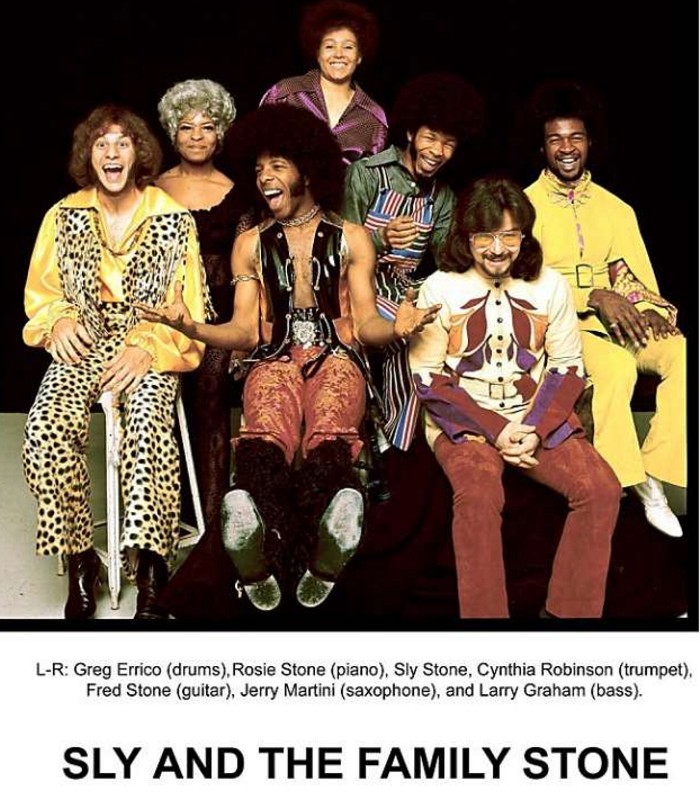
Formed in 1966, the group's music synthesized a variety of disparate musical genres to help pioneer the emerging "psychedelic soul" sound. They released a series of Top 10 Billboard Hot 100 hits such as "Dance to the Music" (1968), "Everyday People" (1968), and "Thank You (Falettinme Be Mice Elf Agin)" (1969), as well as critically acclaimed albums such as Stand! (1969), which combined pop sensibility with social commentary. In the 1970s, it transitioned into a darker and less commercial funk sound on releases such as There's a Riot Goin' On (1971) and Fresh (1973), proving as influential as their early work. By 1975, drug problems and interpersonal clashes led to dissolution, though Sly continued to record and tour with a new rotating lineup under the name "Sly and the Family Stone" until drug problems forced his effective retirement in 1987.
The work of Sly and the Family Stone greatly influenced the sound of subsequent American funk, pop, soul, R&B, and hip hop music. Music critic Joel Selvin wrote, "there are two types of black music: black music before Sly Stone, and black music after Sly Stone". In 2010, they were ranked 43rd in Rolling Stone's 100 Greatest Artists of All Time, and three of their albums are included on Rolling Stone's 500 Greatest Albums of All Time. The band was inducted into the Rock and Roll Hall of Fame in 1993
Sly & The Family Stone have only 2 songs on the list: Dance To The Music & Thank You (Falettinme Be Mice Elf Agin).
The Great Percy Sledge has only 1: When A Man Loves A Woman
Hall of Fame museum curator James Henke, along with "the museum's curatorial staff and numerous rock critics and music experts", created an unordered list of "500 Songs That Shaped Rock and Roll". The list is part of a permanent exhibit at the museum, and was envisioned as part of the museum from its opening in 1995. It contains songs recorded from the 1920s through the 1990s. The Beatles with seven songs was the most represented on the 500-song list. The oldest song on the list is "Wabash Cannonball", written circa 1882 and credited to J. A. Roff. Since then, however, an additional 160 songs have been added, and the list is now simply referred to as "The Songs That Shaped Rock and Roll". The most recent songs on the list are Gnarls Barkley's "Crazy" and My Chemical Romance's "Welcome to the Black Parade", both released in 2006. The Beatles and the Rolling Stones are the most represented on the 660-song list, with eight songs each.
Artists with four or more songs
8 The Beatles
8 The Rolling Stones
7 Elvis Presley
5 The Beach Boys
5 Chuck Berry
5 Bob Dylan
5 Led Zeppelin
5 Bruce Springsteen
4 Stevie Wonder
4 David Bowie
4 James Brown
4 Ray Charles
4 The Drifters
4 Aretha Franklin
4 Jimi Hendrix
4 Robert Johnson
4 The Kinks
4 Bob Marley
4 The Miracles
4 Prince
4 Muddy Waters
Dick Clark was asked to describe the type of music he played on "American Bandstand". He described it as "Bubblegum" Music, intended for "Teenyboppers" (Preteen and early teen girls). Most of the Beatles early Music was Bubblegum junk, yet the Albinos want to tell us that crap DEFINED "OUR" Music - what unmitigated Gall!
| 8 - songs by The Beatles | 8 - songs by The Rolling Stones | 7 - songs by Elvis Presley |
| A Day in the Life HELP! Hey Jude I Want to Hold Your Hand In My Life Norwegian Wood Strawberry Fields Forever Yesterday | Honky Tonk Women (I Can't Get No) Satisfaction Jumpin' Jack Flash Miss You Paint It Black Sympathy For The Devil Time Is On My Side The Rolling Stones | Heartbreak Hotel Hound Dog Jailhouse Rock Love Me Tender Mystery Train Suspicious Minds That's All Right |
| In the Albinos magical fantasy world Chuck Berry is the only Black allowed to have 5 songs on the list. | 5 - The Beach Boys | 5 - Led Zeppelin | 4 - The Kinks | 2 - Hank Williams | 2 - Johnny Cash |
| Johnny B. Goode, Maybellene, Brown Eyed Handsome Man, Rock & Roll Music, Roll Over Beethoven | California Girls Don't Worry Baby God Only Knows Good Vibrations Surfin' U.S.A. | Dazed And Confused Kashmir Rock And Roll Stairway To Heaven Whole Lotta Love | A Well Respected Man Lola Waterloo Sunset You Really Got Me | Lovesick Blues Movin’ On Over | Folsom Prison Blues I Walk the Line |
You will note that in order to claim some type of participation in the creation of R&B, the Albinos have included "Country" music as one of the influences of R&B. However, perhaps feeling that might be a bridge too-far even for Albino liars, they have limited country artists to only a few.
But that is not to say that R&B wasn't influenced by Country Music - it certainly was - Just not Albino Country Music.
It should be remembered that the Banjo is an African instrument, and Black people have been "Pickin" Guitars, Banjos, and the like, for thousands of years.
Sly and the Family Stone
Sly and the Family Stone was an American band from San Francisco. Active from 1966 to 1983, it was pivotal in the development of funk, soul, rock, and psychedelic music. Its core line-up was led by singer-songwriter, producer, and multi-instrumentalist Sly Stone, and included Stone's brother and singer/guitarist Freddie Stone, sister and singer/keyboardist Rose Stone, trumpeter Cynthia Robinson, drummer Greg Errico, saxophonist Jerry Martini, and bassist Larry Graham. It was the first major American rock group to have a racially integrated, male and female lineup.

Formed in 1966, the group's music synthesized a variety of disparate musical genres to help pioneer the emerging "psychedelic soul" sound. They released a series of Top 10 Billboard Hot 100 hits such as "Dance to the Music" (1968), "Everyday People" (1968), and "Thank You (Falettinme Be Mice Elf Agin)" (1969), as well as critically acclaimed albums such as Stand! (1969), which combined pop sensibility with social commentary. In the 1970s, it transitioned into a darker and less commercial funk sound on releases such as There's a Riot Goin' On (1971) and Fresh (1973), proving as influential as their early work. By 1975, drug problems and interpersonal clashes led to dissolution, though Sly continued to record and tour with a new rotating lineup under the name "Sly and the Family Stone" until drug problems forced his effective retirement in 1987.
The work of Sly and the Family Stone greatly influenced the sound of subsequent American funk, pop, soul, R&B, and hip hop music. Music critic Joel Selvin wrote, "there are two types of black music: black music before Sly Stone, and black music after Sly Stone". In 2010, they were ranked 43rd in Rolling Stone's 100 Greatest Artists of All Time, and three of their albums are included on Rolling Stone's 500 Greatest Albums of All Time. The band was inducted into the Rock and Roll Hall of Fame in 1993
Sly & The Family Stone have only 2 songs on the list: Dance To The Music & Thank You (Falettinme Be Mice Elf Agin).
The Great Percy Sledge has only 1: When A Man Loves A Woman
Was Elvis a thief?
Yes! No! Maybe?
Music stars weigh in on Presley's legacy
As a reminder - this is the same person the Albinos chose to be the
FIRST person inducted into THEIR Hall of Fame.
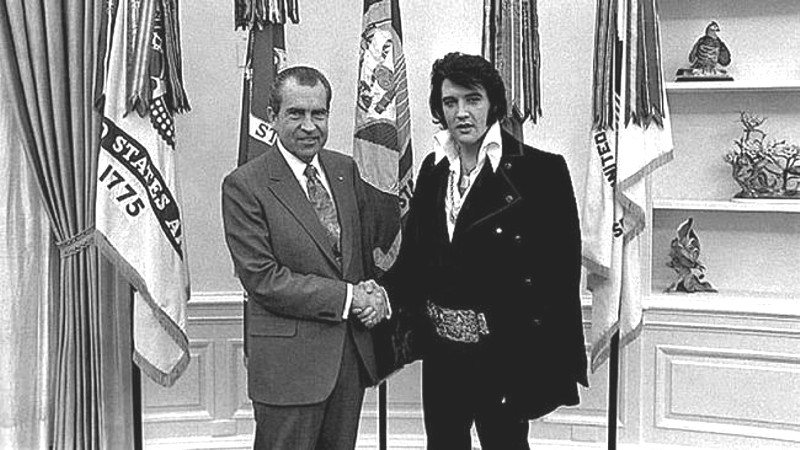
The San Diego Union-Tribune: George Varga, Aug. 2017
Was Elvis Presley a thief?
Absolutely, say Aerosmith singer Steven Tyler.
“If I could sit down with Elvis,” Tyler said, “I'd smack him in the face for not giving credit to all those black musicians.”
Definitely not, counters Boz Scaggs.
“Elvis was no more a thief than any other artist I know,” Scaggs said.
Maybe yes, maybe no, muses Matchbox Twenty singer Rob Thomas.
“I think he was an innocent thief,” Thomas said. “He didn’t realize he wasn’t supposed to steal.”
The full remarks of Thomas, Tyler and Scaggs appear below in this article, along with comments about Elvis from other musicians evaluating his legacy.
Of course, asking if he was a thief is a provocative question. But, 40 years after his death, it’s still a relevant one in the case of this Mississippi-truck-driver-turned-global-superstar, whose career ignited in the mid-1950s.
Three of Elvis’ landmark early recordings — "All Shook Up," "Don't Be Cruel" and "Return to Sender" — were written by Otis Blackwell, who also wrote the Jerry Lee Lewis classics “Great Balls of Fire” and “Breathless.” Elvis’ versions were almost identical to how Blackwell sang them on his demonstration recordings. But Elvis could reach an enormous national audience, and did. African-American artists like Blackwell were relegated to so-called “race music” record labels and radio stations, at a time when much of the U.S. was still segregated.
While Elvis was a fan of country music, he was even more inspired by blues, gospel and rhythm-and-blues, including the Memphis radio shows hosted by such local disc jockeys as B.B. King and Rufus Thomas, both of whom also sang live during their broadcasts. Elvis heard this same music played live at the black nightclubs he frequented as a teenager and young adult.
Ike Turner, a largely unsung rock pioneer, recalled in a 1997 Union-Tribune interview how Presley would come to see him perform in Memphis. "I knew Elvis before he became Elvis," said Turner, a longtime San Diego County resident who died in 2007. In the early 1950s, he recorded for Sun Records, the same label that signed Elvis in 1954.
Sun honcho Sam Phillips had been searching for “a white man with the Negro sound and the Negro feel.” He hit pay-dirt with Elvis, who took plenty of mental notes in the Memphis clubs where Turner and other greats performed for black audiences.
"Elvis used to drive a gravel truck, and park it by the back entrance of the West Memphis club where I was playing,” Turner recalled in his Union-Tribune interview. “He was a nice guy, a likable guy. He would come in, and I'd smile and pull my piano out so he could sit there and people in the club wouldn't see him. I used to hide him behind the piano, because it was a black club and it was segregated.
"He'd come once or twice a week; I didn't even know he was going to other (black Memphis) clubs. Matt Murphy and Little Junior Parker were playing at this same club as me. The way (Elvis) moved his legs when he was singing, he got from me, because I'd do that when I played piano. And a lot of the stuff he and Jerry Lee Lewis did was copied off Pinetop (Perkins) and what we were doing. “It was easier for them (to succeed), because they were white… But everybody, in some way, was influenced by somebody (else)."
Elvis’ first release for Sun Records, in 1954, was his deeply reverent version of “That’s Alright Mama” by bluesman Arthur “Big Boy” Crudup, whose songs “So Glad You’re Mine” and “My Baby Left Me” Elvis recorded soon thereafter. Many of Elvis’ other classic early recordings were also cover versions of songs by great black artists. They included Little Junior Parker's "Mystery Train,” Arthur Gunter's "Baby Let's Play House," Kokomo Arnold's "Milkcow Blues Boogie," “Good Rockin’ Tonight,” Ivory Joe Hunter's "I Need You So," Jesse Stone’s “Money Honey” and Smiley Lewis' “One Night (of Sin)" (whose title was toned down to "One Night With You" in the Elvis version.) The new 3-CD Sony Legacy box set, “A Boy From Tupelo — The Complete 1953-1955 Recordings” features many of these songs and is a treasure trove for those seeking to hear Elvis in his early years.
Bono weighs in on Elvis
"What's interesting to me is the very early Elvis," U2 singer Bono said in a 1997 Union-Tribune interview. "And if you want to be academic about it, he did what the civil-rights movement didn't and couldn't. He jammed together two cultures, and in that spastic dance of his, you could actually see that fusion and that energy.
Typical Albino lying - sounds good, but what's the TWO: Black music and dance, but what is the Albino part?
"And that is, in the end, what's great about America, the sex of the place. To me, as the century ends, that (sexuality) is one of the defining moments of it. And that's why rock 'n' roll is valuable — it has the rhythm and the hips of African music, and the melody of European music." (Albinos are pure lie and delusion, which European melody would that be?).
Those hips — read pelvic thrusts and gyrations — were copied from the black artists Elvis studied so carefully in Memphis nightclubs. And the suggestiveness of those stage moves ensured that Elvis’ 1956 debut performance on the Ed Sullivan show was broadcast to TV viewers with camera angles that only showed Elvis from the waist up.
When he performed his first 1957 concert at the Pan Pacific Auditorium in Los Angeles, reviews described his performance as "a terrible popular twist on darkest Africa's fertility tom-tom displays," and "far too indecent to mention in any detail."
Such narrow-minded reviews notwithstanding, Elvis owed much of his success to the fact that he was a white man performing black music for a mass white audience largely unwilling to accept — let alone support — rock and R&B performed by its black originators.
In a series of new and previous Union-Tribune interviews, we asked an array of artists from across the musical spectrum to evaluate Elvis, his originality (or lack thereof) and his legacy. Here’s what they told us…
Boz Scaggs: “Elvis was no more a thief than any other artist I know. No more, no less. We all come from someplace.”
Aerosmith singer Steven Tyler: "If I could sit down with Elvis, I'd smack him in the face for not giving credit to all those black musicians. For years I've been struggling with that. You know, he was a great man, but he maliciously — or maybe unconsciously — took all the credit."
Matchbox Twenty singer Rob Thomas: “Yeah, but I think he was an innocent thief — he didn’t realize he wasn’t supposed to steal. In his mind, I think he thought he was taking what he loved and paying homage. In some ways, he was a product of a fog of ignorance that existed in the 1950s. Had he been part of a more aware decade, he would have been one of the more aware people.”
Jane’s Addiction guitarist Dave Navarro: "I respect what Elvis did, but I'm pretty much indifferent to the whole thing. There aren't that many artists that have affected me on a deep level and he's not one of them. Even though I'm aware that he's influenced people who influenced people who influenced me, when it comes to feeling connected, I'm just not."
Fleetwood Mac drummer Mick Fleetwood: "The reality is that black R&B and blues was the instigator that sparked this whole fire. You can't listen to any music now without tracing the umbilical cord back to blues and R&B. It's just a fact."
Neo-soul singer Maxwell: “It’s a very touchy subject. Because it’s like it was appropriation, but there was a certain window that was opened that never would have been opened without people like Elvis and The Beatles. They were into the grooves and soul of black music and introduced it to the world at large. And then the world caught on to the original artists Elvis and The Beatles were inspired by. So it was kind of like a civil rights breakthrough, as I see it.”
Jon Bon Jovi: "I loved him, but I don't want to be him. He was the first prisoner of rock 'n' roll and it was self-inflected wounds that he died of at 42... I don't want it to end and I don't want to be the fat guy in the white suit. Elvis died from the inside out."
Former Sex Pistols’ singer John Lydon (a/k/a Johnny Rotten): "Elvis is absolutely irrelevant. He was something my parents liked, so I naturally dismissed him. I've never been overly fond of rock `n' roll anyway, (although) I don't wish death on anyone. I've had far more awful examples (than Elvis) right up close and personal to really bother about someone like him."
Jazz saxophonist Branford Marsalis: “All great music is thievery. Beethoven stole from Haydn, and everybody stole from Bach. Charlie Parker stole from Lester Young, who stole from Frankie Trumbauer. People who like Elvis don’t want to hear the facts.”
Jazz trumpeter Wynton Marsalis: "To me, Elvis represented somebody who — because our country was not ready then to embrace the black artist and make them No. 1 — became No. 1 because of his rendition of what some black people sounded like. What made it distasteful is that we had people who could do it better than him, but who couldn't be accepted at that time because of the color of their skin."
San Diego guitar great Mike Keneally: "It took me forever to even understand his appeal; he was never a topic of study for me. He was so ubiquitous, I figured there were so many other more obscure things I should devote myself to. So I never heard the original Sun recordings until a few years ago and that stuff just kicked my ass completely. Regardless of whether he was an innovator or not, the fact that he was the catalyst for that stuff is enough to put him in the pantheon of giants."
Tony Bennett: "Elvis was the first Coca-Cola bottle, the first human Coca-Cola bottle. He was just marketed that way. I met him once at Paramount Studios. He was a gorgeous Adonis of a man and a great guy, very, very elegant looking. He looked like a Greek statue. More than that, he was very warm and nice. But when you hear him, it's not like Nat King Cole singing a song. When you listen to Elvis, it’s almost like country music, there's a simplistic unreality to it all."
Jethro Tull mastermind Ian Anderson: "Well, I went to see Elvis at one of his comeback dates in Las Vegas in 1969. Seeing him in Vegas, in his white jumpsuit, was very interesting, in terms of seeing how music that starts off with a fire in somebody's belly ends up being an inferno in somebody's wallet. It was pure show-biz. And although he worked hard and well that night, he gave the impression of a man not in total control of his chemical future. He seemed to only give lip service to the essence of his songs."
Alice Cooper: "I think everybody puts a little of Elvis into their show. I was invited to come up and meet him in 1971 in Vegas. I got in this private elevator and it was Chubby Checker, Linda Lovelace, Liza Minnelli and me, going up to see Elvis. He walked in and was really looking good, he wasn't overweight or drugged out. He said, `You're the guy with the snake, aren't you? That's really cool.' Then he takes me in the kitchen, puts a loaded .38 gun in my hand, and says: `I'll show you how to disarm somebody.' He didn't hurt me, but he knocked me to the floor with one of his karate chops."
Quincy Jones: "Before Elvis, white pop music was `The Ballad of Davy Crockett' and `How Much Is That Doggy in the Window?' Then Elvis came on (the Tommy- and Jimmy Dorsey-hosted CBS-TV show) `Stage Time' in 1956, and they wouldn't shoot him below the waist because they still couldn't handle anybody shaking their (rear) — black or white. And the show got 8,000 letters about his performance. I could see it then, I thought: `Things are going to change because they've discovered how to emotionally feel music.' This had been happening with black music forever, but this was the first time young white kids did. It was amazing to watch."
John Oates of Hall & Oates: “I think the story of American music — jazz, blues and how all those styles evolved — is a story of appropriation across the board, from the very beginning. How far do you want to go? Do you want to take it back to Africa, and say American-born slaves appropriated music that they got from their ancestors and re-imagined and re-crafted it as part of their lives and American experience? And, then, the next step was that white Americans heard and re-created and re-imagined the same music. It goes on and on, and I think it’s the history of American popular music. It’s really built upon the shoulders of everything that came before.”
What's it all really about?
Clearly the Rock-n-Roll Hall of Fame isn't really about "Rock-n-Roll" aka Rhythm & Blues, it's just another vehicle for Albinos to create another false history for themselves. Some of the Albinos in their Hall of Fame are laughable, and would be Booed off the Stage at the Apollo (an Albino owned venue btw).
This is how Blacks partied and enjoyed their Music in the early years: the venues were often "Juke" joints and the concert circuit was called the "Chitlin Circuit".
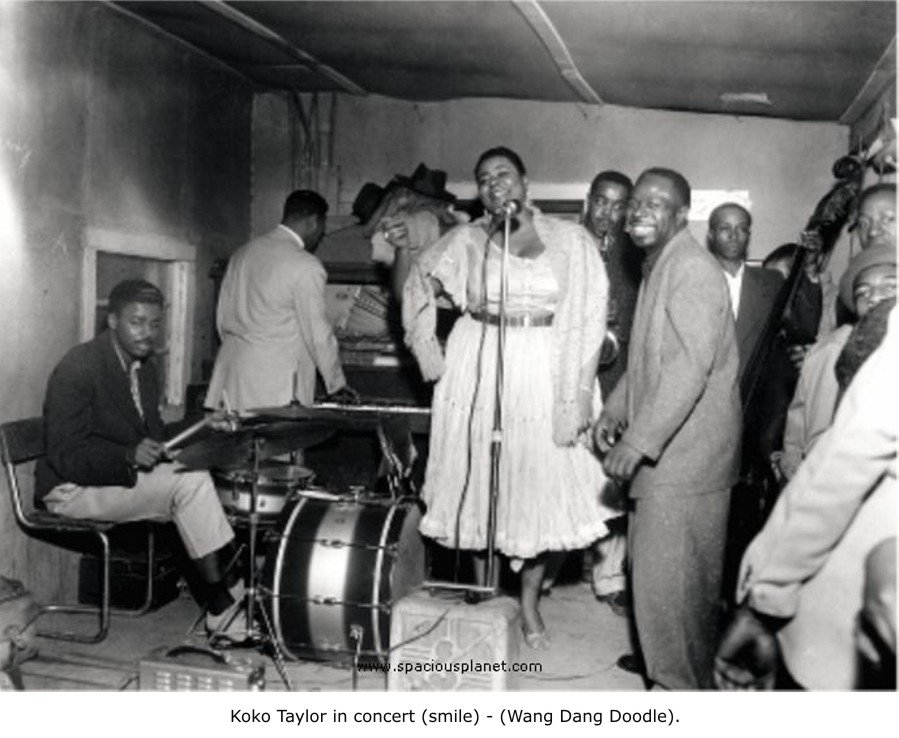
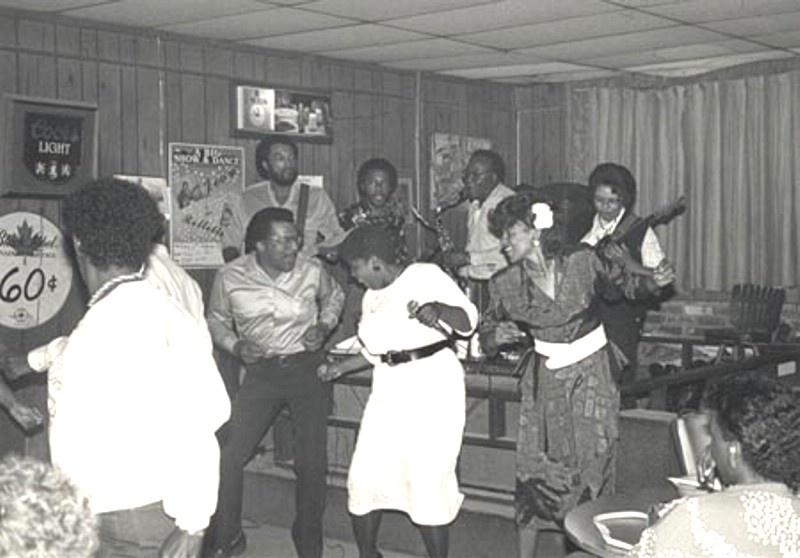
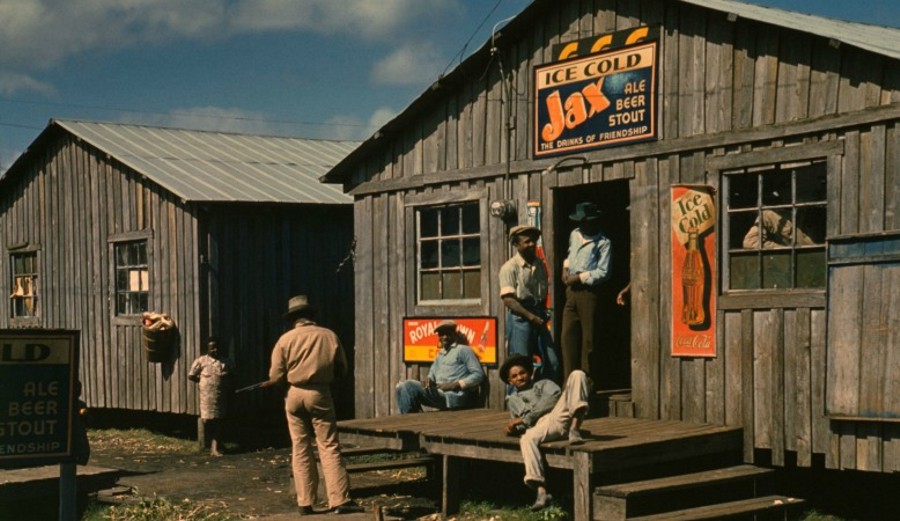
This was also a part of that World!

So when Albinos like Alan Freed and Elvis Presley came along and wanted "in" on our music, meaning large venues and much more Money, Blacks we more than happy to welcome them in. And even took part in "Praising" their talentless performers.
But Albinos being Albinos, soon they found an outlet for their natural Hate: Blacks created a new Genre that their "Spastic" movements just weren't adequate for dancing to, so they had no hope of dancing to it, thus their hatred of "DISCO".
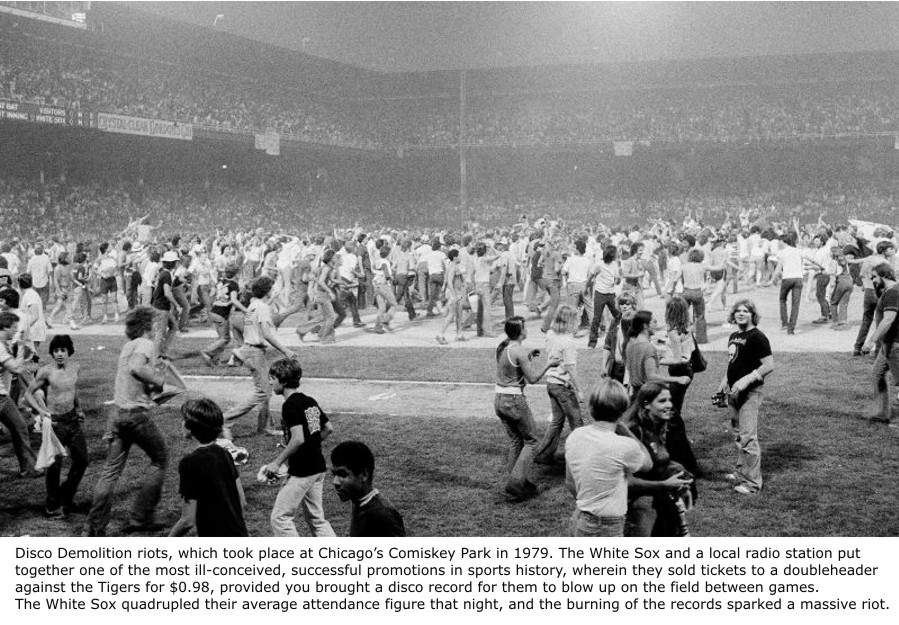
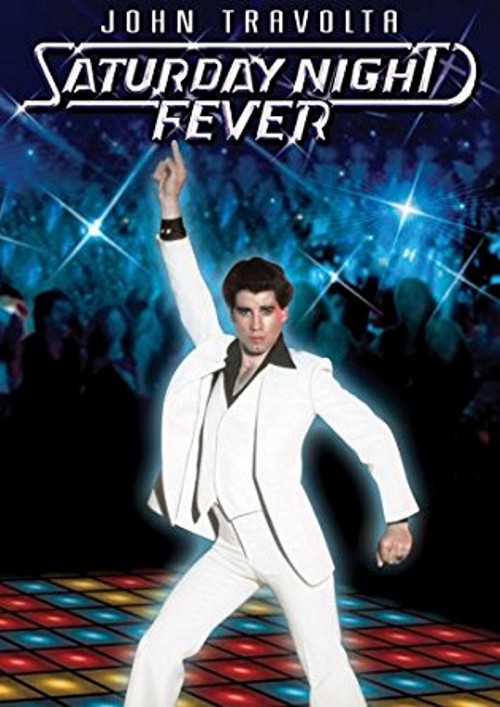
HOPE HE WAS PLAYING THIS SENSATIONS SONG WHILE HE WAS PROTESTING.
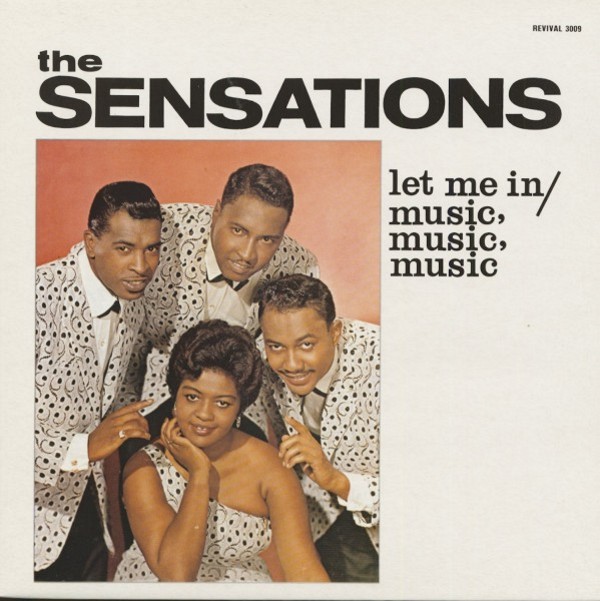
But Rather than protesting,
isn't it time we Blacks stated FIGHTING IN THE COURTS?
LETS TAKE OUR CREATION BACK!!!
ROCK-n-ROLL is the Intellectual Property of the Black American TRIBE or COMMUNITY!
What is Intellectual Property?
Intellectual property (IP) refers to creations of the mind, such as inventions; literary and artistic works; designs; and symbols, names and images used in commerce. IP is protected in law by, for example, patents, copyright and trademarks, which enable people to earn recognition or financial benefit from what they invent or create. By striking the right balance between the interests of innovators and the wider public interest, the IP system aims to foster an environment in which creativity and innovation can flourish.
Tribe - defination
A tribe is a social division in a traditional society consisting of families or communities linked by social, economic, religious, or blood ties, with a common culture and dialect, typically having a recognized leader. There can be no question that Black Americans, whether they originally be Native Indians, or Black Europeans, or less likely, African Slave (only 308,005 of them were imported), coalested into one Social, Economic, and Cultural Group or Tribe. And under that basis can claim Rythm & Blues, or Rock-n-Roll as Tribal "Intelectual Properity" and thus Tribual "Community Properity".
Tribal Property Law and Legal Definition
According to 25 USCS § 564a, tribal property means any real or personal property, including water rights, or any interest in real or personal property, that belongs to the tribe and either is held by the United States in trust for the tribe or is subject to a restriction against alienation imposed by the United States.
Yes! No! Maybe?
Music stars weigh in on Presley's legacy
As a reminder - this is the same person the Albinos chose to be the
FIRST person inducted into THEIR Hall of Fame.

This file photo shows former U.S. President Richard M. Nixon as he shakes hands with Elvis Presley in the White House on Dec. 21, 1970.
The San Diego Union-Tribune: George Varga, Aug. 2017
Was Elvis Presley a thief?
Absolutely, say Aerosmith singer Steven Tyler.
“If I could sit down with Elvis,” Tyler said, “I'd smack him in the face for not giving credit to all those black musicians.”
Definitely not, counters Boz Scaggs.
“Elvis was no more a thief than any other artist I know,” Scaggs said.
Maybe yes, maybe no, muses Matchbox Twenty singer Rob Thomas.
“I think he was an innocent thief,” Thomas said. “He didn’t realize he wasn’t supposed to steal.”
The full remarks of Thomas, Tyler and Scaggs appear below in this article, along with comments about Elvis from other musicians evaluating his legacy.
Of course, asking if he was a thief is a provocative question. But, 40 years after his death, it’s still a relevant one in the case of this Mississippi-truck-driver-turned-global-superstar, whose career ignited in the mid-1950s.
Three of Elvis’ landmark early recordings — "All Shook Up," "Don't Be Cruel" and "Return to Sender" — were written by Otis Blackwell, who also wrote the Jerry Lee Lewis classics “Great Balls of Fire” and “Breathless.” Elvis’ versions were almost identical to how Blackwell sang them on his demonstration recordings. But Elvis could reach an enormous national audience, and did. African-American artists like Blackwell were relegated to so-called “race music” record labels and radio stations, at a time when much of the U.S. was still segregated.
While Elvis was a fan of country music, he was even more inspired by blues, gospel and rhythm-and-blues, including the Memphis radio shows hosted by such local disc jockeys as B.B. King and Rufus Thomas, both of whom also sang live during their broadcasts. Elvis heard this same music played live at the black nightclubs he frequented as a teenager and young adult.
Ike Turner, a largely unsung rock pioneer, recalled in a 1997 Union-Tribune interview how Presley would come to see him perform in Memphis. "I knew Elvis before he became Elvis," said Turner, a longtime San Diego County resident who died in 2007. In the early 1950s, he recorded for Sun Records, the same label that signed Elvis in 1954.
Sun honcho Sam Phillips had been searching for “a white man with the Negro sound and the Negro feel.” He hit pay-dirt with Elvis, who took plenty of mental notes in the Memphis clubs where Turner and other greats performed for black audiences.
"Elvis used to drive a gravel truck, and park it by the back entrance of the West Memphis club where I was playing,” Turner recalled in his Union-Tribune interview. “He was a nice guy, a likable guy. He would come in, and I'd smile and pull my piano out so he could sit there and people in the club wouldn't see him. I used to hide him behind the piano, because it was a black club and it was segregated.
"He'd come once or twice a week; I didn't even know he was going to other (black Memphis) clubs. Matt Murphy and Little Junior Parker were playing at this same club as me. The way (Elvis) moved his legs when he was singing, he got from me, because I'd do that when I played piano. And a lot of the stuff he and Jerry Lee Lewis did was copied off Pinetop (Perkins) and what we were doing. “It was easier for them (to succeed), because they were white… But everybody, in some way, was influenced by somebody (else)."
Elvis’ first release for Sun Records, in 1954, was his deeply reverent version of “That’s Alright Mama” by bluesman Arthur “Big Boy” Crudup, whose songs “So Glad You’re Mine” and “My Baby Left Me” Elvis recorded soon thereafter. Many of Elvis’ other classic early recordings were also cover versions of songs by great black artists. They included Little Junior Parker's "Mystery Train,” Arthur Gunter's "Baby Let's Play House," Kokomo Arnold's "Milkcow Blues Boogie," “Good Rockin’ Tonight,” Ivory Joe Hunter's "I Need You So," Jesse Stone’s “Money Honey” and Smiley Lewis' “One Night (of Sin)" (whose title was toned down to "One Night With You" in the Elvis version.) The new 3-CD Sony Legacy box set, “A Boy From Tupelo — The Complete 1953-1955 Recordings” features many of these songs and is a treasure trove for those seeking to hear Elvis in his early years.
Bono weighs in on Elvis
"What's interesting to me is the very early Elvis," U2 singer Bono said in a 1997 Union-Tribune interview. "And if you want to be academic about it, he did what the civil-rights movement didn't and couldn't. He jammed together two cultures, and in that spastic dance of his, you could actually see that fusion and that energy.
Typical Albino lying - sounds good, but what's the TWO: Black music and dance, but what is the Albino part?
"And that is, in the end, what's great about America, the sex of the place. To me, as the century ends, that (sexuality) is one of the defining moments of it. And that's why rock 'n' roll is valuable — it has the rhythm and the hips of African music, and the melody of European music." (Albinos are pure lie and delusion, which European melody would that be?).
Those hips — read pelvic thrusts and gyrations — were copied from the black artists Elvis studied so carefully in Memphis nightclubs. And the suggestiveness of those stage moves ensured that Elvis’ 1956 debut performance on the Ed Sullivan show was broadcast to TV viewers with camera angles that only showed Elvis from the waist up.
When he performed his first 1957 concert at the Pan Pacific Auditorium in Los Angeles, reviews described his performance as "a terrible popular twist on darkest Africa's fertility tom-tom displays," and "far too indecent to mention in any detail."
Such narrow-minded reviews notwithstanding, Elvis owed much of his success to the fact that he was a white man performing black music for a mass white audience largely unwilling to accept — let alone support — rock and R&B performed by its black originators.
In a series of new and previous Union-Tribune interviews, we asked an array of artists from across the musical spectrum to evaluate Elvis, his originality (or lack thereof) and his legacy. Here’s what they told us…
Boz Scaggs: “Elvis was no more a thief than any other artist I know. No more, no less. We all come from someplace.”
Aerosmith singer Steven Tyler: "If I could sit down with Elvis, I'd smack him in the face for not giving credit to all those black musicians. For years I've been struggling with that. You know, he was a great man, but he maliciously — or maybe unconsciously — took all the credit."
Matchbox Twenty singer Rob Thomas: “Yeah, but I think he was an innocent thief — he didn’t realize he wasn’t supposed to steal. In his mind, I think he thought he was taking what he loved and paying homage. In some ways, he was a product of a fog of ignorance that existed in the 1950s. Had he been part of a more aware decade, he would have been one of the more aware people.”
Jane’s Addiction guitarist Dave Navarro: "I respect what Elvis did, but I'm pretty much indifferent to the whole thing. There aren't that many artists that have affected me on a deep level and he's not one of them. Even though I'm aware that he's influenced people who influenced people who influenced me, when it comes to feeling connected, I'm just not."
Fleetwood Mac drummer Mick Fleetwood: "The reality is that black R&B and blues was the instigator that sparked this whole fire. You can't listen to any music now without tracing the umbilical cord back to blues and R&B. It's just a fact."
Neo-soul singer Maxwell: “It’s a very touchy subject. Because it’s like it was appropriation, but there was a certain window that was opened that never would have been opened without people like Elvis and The Beatles. They were into the grooves and soul of black music and introduced it to the world at large. And then the world caught on to the original artists Elvis and The Beatles were inspired by. So it was kind of like a civil rights breakthrough, as I see it.”
Jon Bon Jovi: "I loved him, but I don't want to be him. He was the first prisoner of rock 'n' roll and it was self-inflected wounds that he died of at 42... I don't want it to end and I don't want to be the fat guy in the white suit. Elvis died from the inside out."
Former Sex Pistols’ singer John Lydon (a/k/a Johnny Rotten): "Elvis is absolutely irrelevant. He was something my parents liked, so I naturally dismissed him. I've never been overly fond of rock `n' roll anyway, (although) I don't wish death on anyone. I've had far more awful examples (than Elvis) right up close and personal to really bother about someone like him."
Jazz saxophonist Branford Marsalis: “All great music is thievery. Beethoven stole from Haydn, and everybody stole from Bach. Charlie Parker stole from Lester Young, who stole from Frankie Trumbauer. People who like Elvis don’t want to hear the facts.”
Jazz trumpeter Wynton Marsalis: "To me, Elvis represented somebody who — because our country was not ready then to embrace the black artist and make them No. 1 — became No. 1 because of his rendition of what some black people sounded like. What made it distasteful is that we had people who could do it better than him, but who couldn't be accepted at that time because of the color of their skin."
San Diego guitar great Mike Keneally: "It took me forever to even understand his appeal; he was never a topic of study for me. He was so ubiquitous, I figured there were so many other more obscure things I should devote myself to. So I never heard the original Sun recordings until a few years ago and that stuff just kicked my ass completely. Regardless of whether he was an innovator or not, the fact that he was the catalyst for that stuff is enough to put him in the pantheon of giants."
Tony Bennett: "Elvis was the first Coca-Cola bottle, the first human Coca-Cola bottle. He was just marketed that way. I met him once at Paramount Studios. He was a gorgeous Adonis of a man and a great guy, very, very elegant looking. He looked like a Greek statue. More than that, he was very warm and nice. But when you hear him, it's not like Nat King Cole singing a song. When you listen to Elvis, it’s almost like country music, there's a simplistic unreality to it all."
Jethro Tull mastermind Ian Anderson: "Well, I went to see Elvis at one of his comeback dates in Las Vegas in 1969. Seeing him in Vegas, in his white jumpsuit, was very interesting, in terms of seeing how music that starts off with a fire in somebody's belly ends up being an inferno in somebody's wallet. It was pure show-biz. And although he worked hard and well that night, he gave the impression of a man not in total control of his chemical future. He seemed to only give lip service to the essence of his songs."
Alice Cooper: "I think everybody puts a little of Elvis into their show. I was invited to come up and meet him in 1971 in Vegas. I got in this private elevator and it was Chubby Checker, Linda Lovelace, Liza Minnelli and me, going up to see Elvis. He walked in and was really looking good, he wasn't overweight or drugged out. He said, `You're the guy with the snake, aren't you? That's really cool.' Then he takes me in the kitchen, puts a loaded .38 gun in my hand, and says: `I'll show you how to disarm somebody.' He didn't hurt me, but he knocked me to the floor with one of his karate chops."
Quincy Jones: "Before Elvis, white pop music was `The Ballad of Davy Crockett' and `How Much Is That Doggy in the Window?' Then Elvis came on (the Tommy- and Jimmy Dorsey-hosted CBS-TV show) `Stage Time' in 1956, and they wouldn't shoot him below the waist because they still couldn't handle anybody shaking their (rear) — black or white. And the show got 8,000 letters about his performance. I could see it then, I thought: `Things are going to change because they've discovered how to emotionally feel music.' This had been happening with black music forever, but this was the first time young white kids did. It was amazing to watch."
John Oates of Hall & Oates: “I think the story of American music — jazz, blues and how all those styles evolved — is a story of appropriation across the board, from the very beginning. How far do you want to go? Do you want to take it back to Africa, and say American-born slaves appropriated music that they got from their ancestors and re-imagined and re-crafted it as part of their lives and American experience? And, then, the next step was that white Americans heard and re-created and re-imagined the same music. It goes on and on, and I think it’s the history of American popular music. It’s really built upon the shoulders of everything that came before.”
What's it all really about?
Clearly the Rock-n-Roll Hall of Fame isn't really about "Rock-n-Roll" aka Rhythm & Blues, it's just another vehicle for Albinos to create another false history for themselves. Some of the Albinos in their Hall of Fame are laughable, and would be Booed off the Stage at the Apollo (an Albino owned venue btw).
This is how Blacks partied and enjoyed their Music in the early years: the venues were often "Juke" joints and the concert circuit was called the "Chitlin Circuit".



This was also a part of that World!

So when Albinos like Alan Freed and Elvis Presley came along and wanted "in" on our music, meaning large venues and much more Money, Blacks we more than happy to welcome them in. And even took part in "Praising" their talentless performers.
But Albinos being Albinos, soon they found an outlet for their natural Hate: Blacks created a new Genre that their "Spastic" movements just weren't adequate for dancing to, so they had no hope of dancing to it, thus their hatred of "DISCO".

Like with Donald Trump, once Albinos have a vehicle that normalizes their hatreds, they ALL jump on board. Soon after this riot, Disco was dead!
But guess who made the most money off of Disco - An Albino who couldn't sing or dance!
But guess who made the most money off of Disco - An Albino who couldn't sing or dance!

The path has always been hard for Blacks once they allowed the Albinos to defeat them in every part of the World:
Joe Tex in his song "The love you save" speaks to it:
joe tex - the love you save lyrics
I've been pushed around
I've been lost and found
I've been given til sundown
To get out of town
I've been taken outside
And I've been brutalized
And I've had to always be the one to smile and apologize
But Blacks can't just routinely accept the old Status Quo.
In 2002, poor Chubby Checker was so hurt that he wasn't in the Hall of Fame
that he protested outside of the Rock and Roll Hall of Fame during an induction ceremony.
Joe Tex in his song "The love you save" speaks to it:
joe tex - the love you save lyrics
I've been pushed around
I've been lost and found
I've been given til sundown
To get out of town
I've been taken outside
And I've been brutalized
And I've had to always be the one to smile and apologize
But Blacks can't just routinely accept the old Status Quo.
In 2002, poor Chubby Checker was so hurt that he wasn't in the Hall of Fame
that he protested outside of the Rock and Roll Hall of Fame during an induction ceremony.
HOPE HE WAS PLAYING THIS SENSATIONS SONG WHILE HE WAS PROTESTING.

But Rather than protesting,
isn't it time we Blacks stated FIGHTING IN THE COURTS?
LETS TAKE OUR CREATION BACK!!!
ROCK-n-ROLL is the Intellectual Property of the Black American TRIBE or COMMUNITY!
What is Intellectual Property?
Intellectual property (IP) refers to creations of the mind, such as inventions; literary and artistic works; designs; and symbols, names and images used in commerce. IP is protected in law by, for example, patents, copyright and trademarks, which enable people to earn recognition or financial benefit from what they invent or create. By striking the right balance between the interests of innovators and the wider public interest, the IP system aims to foster an environment in which creativity and innovation can flourish.
Tribe - defination
A tribe is a social division in a traditional society consisting of families or communities linked by social, economic, religious, or blood ties, with a common culture and dialect, typically having a recognized leader. There can be no question that Black Americans, whether they originally be Native Indians, or Black Europeans, or less likely, African Slave (only 308,005 of them were imported), coalested into one Social, Economic, and Cultural Group or Tribe. And under that basis can claim Rythm & Blues, or Rock-n-Roll as Tribal "Intelectual Properity" and thus Tribual "Community Properity".
Tribal Property Law and Legal Definition
According to 25 USCS § 564a, tribal property means any real or personal property, including water rights, or any interest in real or personal property, that belongs to the tribe and either is held by the United States in trust for the tribe or is subject to a restriction against alienation imposed by the United States.
BGOL doesnt support or promote reparations, I'd prefer they not pin this or even mention our History Month. You cant sneak diss ADOS in thread titles and call us stupid and trash for 11 months then act like you part of our history and culture for 1.Doesnt work that way. Let this thread stay in its organic state. Have the mods pin a thread for Women's History Month next month, they can celebrate white women in it.
Bruh, I agree with you.. Dont pin it!! Leave it as it is!!
White Man Claiming to be Me, didn’t Know I was Standing Behind Him?.
(ThyBlackMan.com) I was at a flea market this weekend and I came across a white guy claiming to be selling Native American artifacts, antiques and collectibles. He was loud, boisterous and telling people he was part Cherokee. He was literally claiming to be a member of my tribe, my ancestry and my family; basically claiming to be me. Of course I wasn’t having it. So, I called him out in front of everybody.
He claimed that his grandmother’s grandmother was Cherokee and was on the trail of tears. I asked him how in the hell did he end up with blue eyes and pale white skin? Then I called him a straight up liar. I told him that I was Cherokee (as well as two other tribes) and there was no way he was related to me. I told him all 4 of my grandparents were Native American and their names were listed on the Dawes Rolls among others. I told him that he was the descendant of a five dollar Indian. That’s a white man who paid five dollars to get his name put on Native American census rolls in order to get their benefits. I shut ’em down!
The reason a majority of white folks claim to be Cherokee was because a group of Cherokees accepted whites folks into their tribe and these white folks took over completely. They even went as far as to pass laws stating that Natives had to marry whites and own African slaves in order to be considered civilized. More Natives became lighter skinned because the counsel became white and considered themselves more Native them full blooded Natives. It was a systematic process of elimination.
To this very day, Virginia and Carolina Native Tribes reject quantitative D.N.A. testing in order to prove bloodline. This allows white folks to commit their identity theft and collect benefits. Today, there are tens of thousands of natives on reservations that are not Native American. And they run around telling people that Native Americans hated blacks when it was just the opposite. They even went as far as labeling any Native who left the reservation as NEGRO.
NOTE: LOOK UP THE WORK AND DAMAGE DONE BY RACIST WILLIAM ASHBY PLECKER, HEAD OF THE DEPARTMENT OF VITAL STATISTICS-WHO DECIDED HE WAS ONLY GOING TO DESIGNATE PEOPLE AS BLACK OR WHITE. HE TRIED TO WIPE OUT THE NAMES OF AS MANY NATIVES AS POSSIBLE. TRIBES OUTSIDE OF HIS REACH WERE UNTOUCHED. HE RE-DESIGNATED TENS OF THOUSANDS OF NATIVES BECAUSE IN THAT REGION PLECKER SAID HE COULDN’T TELL THE DIFFERENCEBETWEEN A NATIVE AND A NEGRO. SO, HE LISTED THOUSANDS OF THEM AS EX-SLAVES. MOST OTHER TRIBES ACROSS AMERICA NEVER KNEW WHAT HAPPENED TO THEIR COUSINS IN THAT REGION. THAT’S HOW THE FACE OF A LOT OF NATIVES BECAME WHITE!
It’s also why the five civilized tribes have so much chaos and identity theft today; white folks. Then in school they tell all the kids about the Trail of Tears. That’s when racists like President Andrew Jackson and his soldiers forced Cherokee men, women and children to walk from the east coast to an Oklahoma reservation in winter. So, white folks grew up knowing that the Cherokee had a lot of white blood and they were able to claim to be Natives.
FACT IS THE CHEROKEE WAS ONE OF THE DARKEST TRIBES IN AMERICA; like most east coast tribes. Most western tribes have Asian blood and features because of the Asian mixing a thousand years ago. Visit some of the Native American museums to learn real history. And you’ll find out what white folks are hiding from you. Pocahontas was as black as any African, with tattoos covering her entire face and body. But have you ever seen that? NO!
WHITE FOLKS WANT TO BE EVERYTHING BUT WHITE! They use lip injections, butt injections, tan in a can, melanin pills, and identity theft to achieve those ends. But the media is their biggest weapon because they control it. YOUR JOB: Your task is to challenge the lies! Your goal is to demand QUANTITATIVE DNA TESTING TO GET RID OF THESE IMPOSTERS AND RE-CLAIM WHAT”S YOURS.
(ThyBlackMan.com) I was at a flea market this weekend and I came across a white guy claiming to be selling Native American artifacts, antiques and collectibles. He was loud, boisterous and telling people he was part Cherokee. He was literally claiming to be a member of my tribe, my ancestry and my family; basically claiming to be me. Of course I wasn’t having it. So, I called him out in front of everybody.
He claimed that his grandmother’s grandmother was Cherokee and was on the trail of tears. I asked him how in the hell did he end up with blue eyes and pale white skin? Then I called him a straight up liar. I told him that I was Cherokee (as well as two other tribes) and there was no way he was related to me. I told him all 4 of my grandparents were Native American and their names were listed on the Dawes Rolls among others. I told him that he was the descendant of a five dollar Indian. That’s a white man who paid five dollars to get his name put on Native American census rolls in order to get their benefits. I shut ’em down!
The reason a majority of white folks claim to be Cherokee was because a group of Cherokees accepted whites folks into their tribe and these white folks took over completely. They even went as far as to pass laws stating that Natives had to marry whites and own African slaves in order to be considered civilized. More Natives became lighter skinned because the counsel became white and considered themselves more Native them full blooded Natives. It was a systematic process of elimination.
To this very day, Virginia and Carolina Native Tribes reject quantitative D.N.A. testing in order to prove bloodline. This allows white folks to commit their identity theft and collect benefits. Today, there are tens of thousands of natives on reservations that are not Native American. And they run around telling people that Native Americans hated blacks when it was just the opposite. They even went as far as labeling any Native who left the reservation as NEGRO.
NOTE: LOOK UP THE WORK AND DAMAGE DONE BY RACIST WILLIAM ASHBY PLECKER, HEAD OF THE DEPARTMENT OF VITAL STATISTICS-WHO DECIDED HE WAS ONLY GOING TO DESIGNATE PEOPLE AS BLACK OR WHITE. HE TRIED TO WIPE OUT THE NAMES OF AS MANY NATIVES AS POSSIBLE. TRIBES OUTSIDE OF HIS REACH WERE UNTOUCHED. HE RE-DESIGNATED TENS OF THOUSANDS OF NATIVES BECAUSE IN THAT REGION PLECKER SAID HE COULDN’T TELL THE DIFFERENCEBETWEEN A NATIVE AND A NEGRO. SO, HE LISTED THOUSANDS OF THEM AS EX-SLAVES. MOST OTHER TRIBES ACROSS AMERICA NEVER KNEW WHAT HAPPENED TO THEIR COUSINS IN THAT REGION. THAT’S HOW THE FACE OF A LOT OF NATIVES BECAME WHITE!
It’s also why the five civilized tribes have so much chaos and identity theft today; white folks. Then in school they tell all the kids about the Trail of Tears. That’s when racists like President Andrew Jackson and his soldiers forced Cherokee men, women and children to walk from the east coast to an Oklahoma reservation in winter. So, white folks grew up knowing that the Cherokee had a lot of white blood and they were able to claim to be Natives.
FACT IS THE CHEROKEE WAS ONE OF THE DARKEST TRIBES IN AMERICA; like most east coast tribes. Most western tribes have Asian blood and features because of the Asian mixing a thousand years ago. Visit some of the Native American museums to learn real history. And you’ll find out what white folks are hiding from you. Pocahontas was as black as any African, with tattoos covering her entire face and body. But have you ever seen that? NO!
WHITE FOLKS WANT TO BE EVERYTHING BUT WHITE! They use lip injections, butt injections, tan in a can, melanin pills, and identity theft to achieve those ends. But the media is their biggest weapon because they control it. YOUR JOB: Your task is to challenge the lies! Your goal is to demand QUANTITATIVE DNA TESTING TO GET RID OF THESE IMPOSTERS AND RE-CLAIM WHAT”S YOURS.
Were going to have to read our way outta this misinformation!!
Contend With America's Legacy of Slavery
Civil War In Indian Territory
Black Codes
Jim Crow
Segregation Policies
Racial Discrimination
Intolerance
Plague Ethnic Native Americans
and Freedmen of the 5 Civilized Tribes
in Pursuit of Treaty Rights
Indians advantaging themselves by enslavement of Black Tribal Members, sectarian divisions between Tribal Union Loyalists versus Confederate Loyalists in a desperate struggle for control of Tribal Leadership, Lands, and the necessity of ending Slavery, all aligned and combined to cause the Civil War to devastate Oklahoma Indian Territory.
Deadly clashes between Tribal forces desiring to retain Slaves juxtaposed with portions of the Tribes morally opposed to Slavery, killed Tribal citizens and caused great damage to Tribal properties, individual homesteads, farms and businesses.
However, it was the wholesale slaughter and destruction of Black Indians, their sympathizers, and desolate condition of the refugees and destitute Black Indian survivors (particularly the legions of Black Indians from a variety of Tribes) that followed the Creek Nation’s Opothleyahola, the majority of whom were killed outright as they passed through the Cherokee domain trying to get into Kansas (a free state). Once there, several groups fanned out into Neosho, along the Verdigris, and other settlements, braving the elements, but starving without provision of supplies or shelter.
As Confederates took over the military Forts throughout Indian Territory, the garrisons of U.S. Federal Troops from Fort Smith, Fort Washita, Fort Arbuckle and Fort Cobb unified under command of Col. W.H. Emory of the 2d U.S. Calvary and marched north out of the Indian Territory to Fort Leavenworth, Kansas, 400 miles away, leaving vulnerable populations of Loyal Indians and Freedmen to fend for themselves.
With the Cherokees deeply divided over Slavery, the Seminole Nation preferring to remain neutral, after living in peace with their Ethnic (Black) Members, whom had been free for 100 to nearly 200 years before coming to Oklahoma Indian Territory, as well as the ambivalence of the Choctaw Council (adopting a resolution expressing regret over the political disagreement between the North and South, recalling the long alliance between their Nation and the U.S., while at the same time declaring, in the event that the Union should be dissolved they would align with the South); and the defiant Chickasaw Legislature entered a resolution declaring the alliance and friendship with the U.S. absolved, in favor of an alliance with the Confederate States--the Indian Territory essentially became a Confederate Military District and a hot zone for Union sympathizers.
In addition to the 5 Civilized Tribes in Indian Territory, the Confederacy made treaties with portions of the following tribes; Comanche, Wichita, Waco, Caddo, Anadarko, Tawakony, Tonkawa, Keechi, Delawares, Osage, Quapaw, Seneca and Shawnees.
Opothleyahola (Hu-pui-hilth Yohola, proper), had been an old and prominent Creek Chief pressured by the Confederacy to join their cause. He refused to participate in an action against the United States Government or Federal Troops. In fact, he reminded the Creeks of the duties and obligation by which they were bound to the United States by Treaty.
The loyal portion of Seminoles, Wichitas, Kickapoos, Cherokees, and Delawares joined Opothleyahola on the trek to Kansas, with his own loyal Creeks and Freedmen).
They endured two or three fateful incursions (at Chusto-Talash, Chustenahlah) with disloyal Confederate Indian contingents backed by Texas Troops, as they retreated north in December, 1861.The defeated group of Union loyalists scattered over an estimated 200 to 300 miles of extent territory between the Verdigris and Fall River, Walnut Creek and the Arkansas, including into Neosho and Humboldt, Kansas. Hundreds more perished after losing their material goods, food, clothing and possessions during the battles. Many succumbed to disease, starvation and freezing temperatures.
Upon learning about the suffering of Tribal Union Loyalists under Opothleyahola, Indian Superintendent Coffin provided for their relief by establishing a Refugee Camp on the Verdigris, which was later removed to LeRoy, Kansas. All able-bodied males were organized in service to the United States, and two regiments were placed under the command of Colonel Weir for an expedition against the Confederacy within the Cherokee Country in the Indian Territory. Despite the fact that Weir’s poor leadership imperiled his men, ultimately in the end, the United States prevailed over the Confederacy.
Indian Freedmen participated as signatories: “At this council the Indians were informed that those tribes which had entered into treaties of alliance with the late Confederate government had forfeited all of their old rights of consideration and protection from the government of the United States, and that their property was subject to confiscation. The tribes were induced to enter a treaty ending the Civil War in Indian Territory, form a union (commonwealth) with a territorial form of Government, with abolishment of any forms of Slavery (captivity) and ensure citizenship with full tribal rights for all members.” The 1865 Treaty was signed by all Nations in attendance, with the exception of the Cherokees. Thus, the Council concluded and *adjourned September 21, 1865.
Tribal Factions remaining Loyal and Faithful to the Union throughout the conflict, in stern moral disagreement with Slavery, were now at the helm. The agreement also formally ended the war in Indian Territory and commanded peaceful relations between all tribes, with further plans to reconvene and re-enter separate Treaty negotiations at Washington, D.C., six months later (falling within calendar year, 1866).
Delegates, Representatives, Interpreters and Agents for Ethnic Tribal Bands and Freedmen in attendance at the drafting of the 1865 Treaty at Fort Smith, included; Harry Island, interpreter for Creeks, Cow Tom, Robert Johnson and Cesar Bruner.
The gathering of Indian Territory Tribes at Fort Smith to forge a multi-party instrument ending the Civil War gave rise to the idea of an Indian Territory General Council. Representatives from all Tribes and Bands inhabiting the geographical domain and political sphere of influence of the Indian Territory, could embody their political interests. It was an essential element giving life, vitality and success to the plan to install Indian Country Representatives of their constituency in Congress, a right gained by the Cherokees, Chickasaws, Choctaws and Creeks (representing Seminoles as a sub-tribe) through the Treaties of Hopewell (S. Carolina), Supreme Law of the Land, enacted 1790s.
The 1865 Fort Smith Treaty outlined and formed the basis of the 1866 Treaties with the Nations of the 5 Civilized Tribes (Cherokee, Chickasaw, Choctaw, Creek and Seminoles).
1866 Treaties and the Ethnic Protectorate of the 5 Civilized Tribes
1866 Treaty Identification of Ethnic Black Indians
Within six months of drafting the Treaty at Fort Smith, the Seminole Nation reconvened to renew Tribal negotiations in Washington, D.C., with the U.S. Government.
The Nation had historically viewed their African Ancestored Tribal Members (from 1565) as a bona fide Ethnic Protectorate, and as such were reticent to identify those members as “former slaves”. Instead, they were identified as “ many persons among them of African Descent and Blood.” Only a small fraction of Black Seminoles were actually identified as “Freedmen,” vs. simply “Seminoles.” The number of Oklahoma Seminoles having African Ancestry was so large that the language of the 1866 Seminole Treaty reflected that the Seminole ceded their “entire domain” for the location of Indians and Freedmen (an excess of 2 million acres).
To wit, Article 2. States: “The Seminole Nation covenant that henceforth in said nation slavery shall not exist, nor involuntary servitude, except for and in punishment of crime, whereof the offending party shall first have been duly convicted in accordance with law, applicable to all the members of said nation. And inasmuch as there are among the Seminoles many persons of African descent and blood, who have no interest or property in the soil, and no recognized civil rights, it is stipulated that hereafter these persons and their descendants, and such other of the same race as shall be permitted by said nation to settle there, shall have and enjoy all the rights of native citizens, and the laws of said nation shall be equally binding upon all persons of whatever race or color, who may be adopted as citizens or members of said tribe.”
Ethnic Native Americans and their Indian Creole Progeny were forced to accept diminished/marginalized identity, due to semantics. Use of the word, name and application to the persona of “Freedmen” prefaced all official communications regarding Black Indians, yet “Freedmen,“ was never part of the known historical lexicon of the Indian Tribes. From the outset, “Freedmen” was originally a word generally employed by Caucasians to identify freed Slaves in U.S. States. Its modern use is only to legally identify the descendants of historic Ethnic Native American Members of the 5 Civilized Tribes, particularly in adherence to legal language and documentation regarding them.
Within the Indian Territory (Indian Country) the word “Freedmen” was primarily used only in legal documents to describe Tribal Citizens having African Ancestry, but never employed for use by any Bands, Citizens or Members of any Indian Territory Tribe.
The only exception to use of the word “Freedmen” was by persons, agencies or entities addressing the unchanging legal language of Treaties that had been inserted by US. Agents, as well in Congressional Enactments, Resolutions or Laws pertaining to the Class, Caste, Tribes or Clans of Ethnic (African Ancestored) Native Americans generally referred to as “Freedmen,” “Indian Freedmen,” “Indian Negroes,” “Colored Indians,” “Creoles,” and “Mulattos.” It was not a self-defining moniker used by the various Black Indian Tribes. Of the course of time, even the name Freedmen would be nearly rendered to obscurity as Indian Freedmen were forced into a monolithic group identified at various times as “Mulatto,” “Negro,” “Colored,” “African American,” or “Blacks” without a trace of their true Ethnic Identity at all.
The only thing Ethnic (Black) Indians could do was pass their heritage and ancestral information down to their own children and families. Although most identified solely as simply Cherokee, Chickasaw, Choctaw, Creek, Seminole, Seminole Negro Scouts, Mississippi Choctaw or by Band designations, Dorsar, etc., rarely was their status as “Freedmen” ever discussed, because it was not a self-designation.
The names actually used by Indian Tribes to identify and distinguish their particular Ethnic (African Ancestored or Black) Native American Citizens varied from tribe to tribe and included Kushtuska (Cush Warriors), Tuscalusa (Black Warriors), Lusa (Black, in all its variant forms, i.e., Mochalusa (Dark Brown, Coffee, Coco Black), Calusa (Fierce Blacks), Nalusa (Black Spirits), Estelusti, and more.
You will note that use of the word “Freedmen” appears in U.S. applications, for example Article 3. “In compliance with the desire of the United States to locate other Indians and Freedmen thereon.”
Despite insistence upon using the word “Freedmen“, the Treaty specifically notifies readers that not all such Freedmen were ever Slaves within the Indian Country, and that there had always been Colonies of Black Tribal Nations having lived Free and amalgamated (into and among) the Indian Tribes for hundreds of years (perhaps thousands of years) in North America before arrival of European men to the continent, existing west to east from California to Massachusetts and north to south from Canada to Mexico. More importantly, the Ethnic (Black) Tribal Peoples were in residence with the Indian Territory Tribes long before the start of the Civil War in Indian Territory. Hence, the inclusion of that statement in the 1866 Treaties.
Though none of the aforementioned changes the fact that there were truly members (mostly Mixed Blood/Whites) having owned Slaves in the traditional sense of American understanding. Relegated to Indian Country by a litany of early treaties and geographical boundaries, it was also insisted upon by Indians and Whites that these Ethnic Natives (at the conclusion of the Civil War in Indian Territory) be viewed and treated equally as “Indian Citizens” in every way imaginable, which is why they were drafted into the Treaties, Tribal Legislative Acts, Adopted En Masse and made heirs to the legacy of each Tribe.
It is only the forces of racism and discrimination opposing them after the Civil War.
Therefore, during 1866 Treaty negotiations, the Seminoles were reticent to identify African Ancestored Tribal Members as former Slaves or Freedmen. The treaty agreement concluded March 21, 1866, and Article 2 addressed “many persons of African descent and blood”…”their descendants, and such others of the same race as shall be permitted by said nation to settle there, shall have and enjoy all the rights of native citizens, and the laws of said nation shall be equally binding upon all persons of whatever race or color, who may be adopted as citizens or members of said tribe.”
The Seminole Treaty included sweeping stipulations, mandates and guarantees specific to African Ancestored Members of the Tribes, even land cessions to the United States for purposes of settling the Freedmen in their own colonies, district, and towns, as addressed in Article 3. “In compliance with the desire of the United States to locate other Indians and freedmen thereon, the Seminoles cede and convey to the United States their entire domain, being the tract of land ceded to the Seminole Indians by the Creek Nation under the provisions of article first, (1,) treaty of the United States with the Creeks and Seminoles, made and concluded at Washington, D.C., August 7, 1856. In consideration of said grant and cession of their lands, estimated at two million one hundred and sixty-nine thousand and eighty (2,169, 080) acres…”
History Notes: Ethnic Black Indian Republic:
Enabling Act-Enhances Independence
A 1565 Enabling Act, benefiting Moorish Settlers and Ethnic Seminoles presented in the form of a Cedula (powered by the Supreme Authority of a Spanish Royal Proclamation) conferred upon Pedro Menendez de Aviles in Florida, to form a Crown Colony. It was a Freedmen Republic with a Provisional Capital at St. Augustine for their Political Constituency within the Seminole Country. (more on Black Indian Settlements page).
The Entire Political Constituency was originally acknowledged by Pedro Menendez de Aviles, which continued on even down through his nephew Francisco Menendez (an African Mandingo) within the Seminole Country, whom in 1738, was also conferred a Grant of Land from the Spanish Governor Montiano for a Military Fort and expansion settlement, it’s name was Gracia Reál de Santa Terésa de Mosé-(Fort Mose or Moosa).
In 1819, Spain ceded La Florida (with the exception of the Seminole Reservation) to the United States for $5 million dollars and the release of American claim to Texas.
The formal transfer did not occur until 1821. Andrew Jackson was named the first Military Governor of the Territory, but only served a few months before leaving. His replacement was William Pope Du Val.
Upon their retreat, the Spaniards tried to attain U.S. Citizenship for the Seminole Creoles (with African Blood), as well as Free Blacks left behind by inserting language into the Adams-Onis Treaty granting them continued freedom and U.S. Citizenship;.
"The inhabitants of the territories which his Catholic Majesty cedes to the United States shall be…admitted to the enjoyment of all privileges, rights, and immunities of citizens of the United States."
However, Governor General Andrew Jackson’s first decree nullified Article VI, of the Adams-Onis Treaty, denying the promised U.S. Citizenship to Seminoles, Free Blacks and Mixed Race (Creole) Inhabitants of Florida. They were still an Independent Republic with proficient and worrisome warriors intent upon staying in the territory, hostile to American military encroachment and advancement. Jackson wanted them out of Florida.
With some political wrangling and eventual capitulation (surrender) of Ethnic Seminoles, Creoles and their Allies, negotiated by the Ethnic (Black) Seminoles themselves, the entire constituency was forced to abandon their Crown Colony, settlements and homesteads to remove to Oklahoma (as Free People), leaving the majority of Red Seminoles in Florida.
With the eventual surrender of the entire constituency of Ethnic (Black) Seminoles, Creoles and their Allies, forced to abandon their Florida Crown Colony, surrounding settlements and homesteads in exchange for removal to Oklahoma (as a Free and Autonomous People) with “a fair and equitable share” of ceded Tribal Lands gained by the terms of a document entitled “Capitulation of the Seminole Nation of Indians and their Allies.”
To appease Jackson’s desire to vanquish the Black Seminole Warriors from the geographical boundaries of Florida; in 1837, by Treaty Mandate, a primordial Grant of Land from the Creek domain in Oklahoma that included the lands of their new Provisional Capital (Wewoka), was provided to the Ethnic Black Seminoles.
It was ceded to the Ethnic (Black) Seminole/Creek Creole Constituency, essentially to ensure their emigration. The agreement secured by Alligator (Halleck Tustennuggee and Alachua Chief, John Horse) assured them an allodial title to lands, which were originally part of the Creek domain that was now ceded to the Black Seminoles for their settlement.
Additionally, the Ethnic (Black) Seminoles and Creoles would travel and be received as free people, to live autonomously on their own Oklahoma Lands and Settlements as they had traditionally in Florida (but within the geographical domain/country of the Seminole nation). The Provisional Capital of the Black Seminole Constituency in Oklahoma was named by them, “Wewoka,” which means “Barking Waters.”
Once in Oklahoma, it became very clear that the Creek Nation intended to make the Free Black Seminoles their Slaves and indeed history notes are replete with incidents wherein the very heavily armed Black Seminoles and their Kickapoo allies defended the Black Seminole Populace, their Settlements, Homesteads and Freedom in Oklahoma Indian Territory, vigorously against predatory raids by Creeks and Texas Slave Traders.
When it became even clearer that the United States had no intention of aiding them in maintaining their tenuous freedom, upon learning that the Solicitor’s opinion was that they would be reduce to the status of Slaves in Oklahoma; the Black Seminoles then formulated a secret plan to thwart the action of their enslavement. They would flee to Mexico and Freedom within her borders. They were indeed received as a Free Nation of Black Indians, Granted ample sitios (Acres of Lands) to established their Colony, given survival provisions and treated well by Mexico’s Central Government.
After the exodus of John Horse and the Black Seminoles into Texas and then Mexico beyond, the remaining two Bands of Black Seminoles were quarantined in a concentration camp to prevent their removal by John Horse, the Free Black Seminoles and the Kickapoo Warriors. The two remaining Black Seminole Bands (Dorsar and Barkus) yet remain in Oklahoma to the present day, with tenuous Citizenship status and disparate benefits access).
The Treaty-guaranteed lands of the Black Seminole Capital at Wewoka was illegally seized by the angry Creek Chief Jumper, following the exile of the Seminole/Creek group under John Horse to Mexico. It enraged the Creek Chief that John Horse had taken his own sister Juana and her children with him to Mexico. Juana’s children had all been fathered by the Creek Chief, and he was enraged to find them gone. He mustered a Posse that pursued the group all the way to the border of Mexico.
As such, the Black Indian Settlement at Wewoka, including other original Black Indian Towns were expropriated and taken in Trust by the United States Government and the parent Seminole Nation in 1866. The Southern Seminoles (in Mexico), despite the fact that they participated in Treaty negotiations by virtue of a Special Delegate (and signatory) in the 1866 Seminole, were never repatriated back to their ceded domain, which they traded the lands granted to Francisco Menendez and their crown colony at St. Augustine.
Their independent government continued to operate historically under John Horse and subsequent Chiefs, down to present day Chief William Warrior.
“The Seminole Nation agrees to such legislation as Congress and the President may deem necessary for the better administration of the rights of person and property within the Indian Territory; Provided, however, [That] said legislation shall not in any manner interfere with or annul their present tribal organization, rights, laws, privileges, and customs. The Seminole Nation also agree that a general council, consisting of delegates elected by each nation, a tribe lawfully resident within the Indian Territory, may be annually convened in said Territory, which council shall be organized in such manner and possess such powers as are hereinafter described:…”
“2d. The first general council shall consist of one member from each tribe, and an additional member for each one thousand Indians, or each fraction of a thousand greater than five hundred, being members of any tribe lawfully resident in said Territory, and shall be elected by said tribes, respectively, who may assent to the establishment of said general council; and if none should be thus formally selected by any nation or tribe, the said nation or tribe shall be represented in said general council by the chiefs and head-men of said tribes, to be taken in the order of their rank, in the same number and proportion as above indicated. After the said census shall have been taken completed, the superintendent of Indian affairs shall publish and declare to each tribe the number of members of said council to which they shall be entitled under the provision of this article:…”
3d. Said general council shall have power to legislate upon all rightful subjects and matters pertaining to the intercourse and relations of the Indian tribes and nations resident in said Territory; the arrest and extradition of criminals and offenders escaping from one tribe to another; the administration of justice between members of the several tribes of said Territory, and persons other Indians and members of said tribes or nations; the construction of works of internal improvement and the common defence and safety of the nation of said Territory. All laws enacted by said council shall take effect at such time as may therein be provided, unless suspended by direction of the Secretary of the Interior or the President of the United States. No law shall be enacted inconsistent with the Constitution of the United States, or the laws of Congress, or existing treaty stipulations with the United States; nor shall such council legislate upon matters pertaining to the organization, laws, or customs of the several tribes, except herein provided for….”
Aboriginal Ethnic (Black) Indians
and Their Descendants
and Their Descendants
Contend With America's Legacy of Slavery
Civil War In Indian Territory
Black Codes
Jim Crow
Segregation Policies
Racial Discrimination
Intolerance
Plague Ethnic Native Americans
and Freedmen of the 5 Civilized Tribes
in Pursuit of Treaty Rights
Indians advantaging themselves by enslavement of Black Tribal Members, sectarian divisions between Tribal Union Loyalists versus Confederate Loyalists in a desperate struggle for control of Tribal Leadership, Lands, and the necessity of ending Slavery, all aligned and combined to cause the Civil War to devastate Oklahoma Indian Territory.
Deadly clashes between Tribal forces desiring to retain Slaves juxtaposed with portions of the Tribes morally opposed to Slavery, killed Tribal citizens and caused great damage to Tribal properties, individual homesteads, farms and businesses.
However, it was the wholesale slaughter and destruction of Black Indians, their sympathizers, and desolate condition of the refugees and destitute Black Indian survivors (particularly the legions of Black Indians from a variety of Tribes) that followed the Creek Nation’s Opothleyahola, the majority of whom were killed outright as they passed through the Cherokee domain trying to get into Kansas (a free state). Once there, several groups fanned out into Neosho, along the Verdigris, and other settlements, braving the elements, but starving without provision of supplies or shelter.
“Civil War: White Man’s Quarrel-Red Man’s Woe”
Fort Smith (Arkansas Territory) was seized by forces of the Confederacy from Texas
April 23, 1861
Retreat of Federal Troops from Indian TerritoryFort Smith (Arkansas Territory) was seized by forces of the Confederacy from Texas
April 23, 1861
As Confederates took over the military Forts throughout Indian Territory, the garrisons of U.S. Federal Troops from Fort Smith, Fort Washita, Fort Arbuckle and Fort Cobb unified under command of Col. W.H. Emory of the 2d U.S. Calvary and marched north out of the Indian Territory to Fort Leavenworth, Kansas, 400 miles away, leaving vulnerable populations of Loyal Indians and Freedmen to fend for themselves.
With the Cherokees deeply divided over Slavery, the Seminole Nation preferring to remain neutral, after living in peace with their Ethnic (Black) Members, whom had been free for 100 to nearly 200 years before coming to Oklahoma Indian Territory, as well as the ambivalence of the Choctaw Council (adopting a resolution expressing regret over the political disagreement between the North and South, recalling the long alliance between their Nation and the U.S., while at the same time declaring, in the event that the Union should be dissolved they would align with the South); and the defiant Chickasaw Legislature entered a resolution declaring the alliance and friendship with the U.S. absolved, in favor of an alliance with the Confederate States--the Indian Territory essentially became a Confederate Military District and a hot zone for Union sympathizers.
In addition to the 5 Civilized Tribes in Indian Territory, the Confederacy made treaties with portions of the following tribes; Comanche, Wichita, Waco, Caddo, Anadarko, Tawakony, Tonkawa, Keechi, Delawares, Osage, Quapaw, Seneca and Shawnees.
Union Loyalists
Not All Indians Accept Alliance With Confederate States
Not All Indians Accept Alliance With Confederate States
Opothleyahola (Hu-pui-hilth Yohola, proper), had been an old and prominent Creek Chief pressured by the Confederacy to join their cause. He refused to participate in an action against the United States Government or Federal Troops. In fact, he reminded the Creeks of the duties and obligation by which they were bound to the United States by Treaty.
The loyal portion of Seminoles, Wichitas, Kickapoos, Cherokees, and Delawares joined Opothleyahola on the trek to Kansas, with his own loyal Creeks and Freedmen).
They endured two or three fateful incursions (at Chusto-Talash, Chustenahlah) with disloyal Confederate Indian contingents backed by Texas Troops, as they retreated north in December, 1861.The defeated group of Union loyalists scattered over an estimated 200 to 300 miles of extent territory between the Verdigris and Fall River, Walnut Creek and the Arkansas, including into Neosho and Humboldt, Kansas. Hundreds more perished after losing their material goods, food, clothing and possessions during the battles. Many succumbed to disease, starvation and freezing temperatures.
Upon learning about the suffering of Tribal Union Loyalists under Opothleyahola, Indian Superintendent Coffin provided for their relief by establishing a Refugee Camp on the Verdigris, which was later removed to LeRoy, Kansas. All able-bodied males were organized in service to the United States, and two regiments were placed under the command of Colonel Weir for an expedition against the Confederacy within the Cherokee Country in the Indian Territory. Despite the fact that Weir’s poor leadership imperiled his men, ultimately in the end, the United States prevailed over the Confederacy.
Peace Conditions
In September, 1865, a General Council of Tribes residing within the Indian Territory was held at Fort Smith, Arkansas. Represented were Freedmen and Indians of the following Nations; Cherokee, Chickasaw, Choctaw, Comanche, Creek, Osage, Quapaw, Seminole, Seneca, Shawnee, Wichita and Wyandotte; including Representatives of the United States; D.N. Cooley, Commissioner of Indian Affairs, Elijah Sells, Superintendent of Indian Affairs, Thomas Wistar, Gen. W.S. Harney, and Col. E.S. Parker. The primary objective of the General Council was to end Slavery, Hostilities arising from the Civil War in Indian Territory, and returning Indian Country to peace-time conditions.
Indian Freedmen participated as signatories: “At this council the Indians were informed that those tribes which had entered into treaties of alliance with the late Confederate government had forfeited all of their old rights of consideration and protection from the government of the United States, and that their property was subject to confiscation. The tribes were induced to enter a treaty ending the Civil War in Indian Territory, form a union (commonwealth) with a territorial form of Government, with abolishment of any forms of Slavery (captivity) and ensure citizenship with full tribal rights for all members.” The 1865 Treaty was signed by all Nations in attendance, with the exception of the Cherokees. Thus, the Council concluded and *adjourned September 21, 1865.
Tabled Discussion of Treaties Reopens in 1866 at Washington, D.C.
Although the Indian Territory General Council and U.S. Representatives tabled discussions regarding negotiations of separate individualized Treaties and adjourned on September 21, 1865 at Fort Smith, Arkansas, they did so only after successfully effecting a legally binding multi-party Treaty Agreement between the Tribal General Council and U.S. Representatives. They also gathered resolutions repudiating rebel alliances, immediately breaking the legal power of the treaties that the Confederate Factions of Indian Nations entered earlier with the confederacy.
Tribal Factions remaining Loyal and Faithful to the Union throughout the conflict, in stern moral disagreement with Slavery, were now at the helm. The agreement also formally ended the war in Indian Territory and commanded peaceful relations between all tribes, with further plans to reconvene and re-enter separate Treaty negotiations at Washington, D.C., six months later (falling within calendar year, 1866).
Delegates, Representatives, Interpreters and Agents for Ethnic Tribal Bands and Freedmen in attendance at the drafting of the 1865 Treaty at Fort Smith, included; Harry Island, interpreter for Creeks, Cow Tom, Robert Johnson and Cesar Bruner.
Treaty Enabling Act:
Powers An Ethnic (Black) Indian
Commonwealth-Republic
The Freedmen Tribes, Bands and Nations of the 5 Civilized Tribes never lost sight of the fact that, in 1832, Congress decreed and fully recognized an enactment conferring the geographical boundaries of Oklahoma Indian Territory to the Tribes-forever. The act was ratified in 1834. The aforementioned act was also taken into consideration as the Tribes were induced to function (peacefully, in cooperation with all other tribes) under their own authority as a Commonwealth (Republic), an independent Nation run by the Indian Territory Political Constituency (with Government selected by the people to serve their interests) within the Indian Country. The Commonwealth (Republic) powered by the Fort Smith Treaty authored by the Indian Territory General Council (including Freedmen Tribes or Bands as signatories) was corroborated by the United States of America. That power was further transferred by verbiage inserted into the succeeding 1866 Treaties.Powers An Ethnic (Black) Indian
Commonwealth-Republic
The gathering of Indian Territory Tribes at Fort Smith to forge a multi-party instrument ending the Civil War gave rise to the idea of an Indian Territory General Council. Representatives from all Tribes and Bands inhabiting the geographical domain and political sphere of influence of the Indian Territory, could embody their political interests. It was an essential element giving life, vitality and success to the plan to install Indian Country Representatives of their constituency in Congress, a right gained by the Cherokees, Chickasaws, Choctaws and Creeks (representing Seminoles as a sub-tribe) through the Treaties of Hopewell (S. Carolina), Supreme Law of the Land, enacted 1790s.
The 1865 Fort Smith Treaty outlined and formed the basis of the 1866 Treaties with the Nations of the 5 Civilized Tribes (Cherokee, Chickasaw, Choctaw, Creek and Seminoles).
1866 Treaties and the Ethnic Protectorate of the 5 Civilized Tribes
Although each treaty was individualized and rendered specific to the various Nations comprising the 5 Civilized Tribes, the language of the Fort Smith Treaty was carried over into the 1866 Treaties, nearly word for word.1866 Treaty Identification of Ethnic Black Indians
Within six months of drafting the Treaty at Fort Smith, the Seminole Nation reconvened to renew Tribal negotiations in Washington, D.C., with the U.S. Government.
The Nation had historically viewed their African Ancestored Tribal Members (from 1565) as a bona fide Ethnic Protectorate, and as such were reticent to identify those members as “former slaves”. Instead, they were identified as “ many persons among them of African Descent and Blood.” Only a small fraction of Black Seminoles were actually identified as “Freedmen,” vs. simply “Seminoles.” The number of Oklahoma Seminoles having African Ancestry was so large that the language of the 1866 Seminole Treaty reflected that the Seminole ceded their “entire domain” for the location of Indians and Freedmen (an excess of 2 million acres).
To wit, Article 2. States: “The Seminole Nation covenant that henceforth in said nation slavery shall not exist, nor involuntary servitude, except for and in punishment of crime, whereof the offending party shall first have been duly convicted in accordance with law, applicable to all the members of said nation. And inasmuch as there are among the Seminoles many persons of African descent and blood, who have no interest or property in the soil, and no recognized civil rights, it is stipulated that hereafter these persons and their descendants, and such other of the same race as shall be permitted by said nation to settle there, shall have and enjoy all the rights of native citizens, and the laws of said nation shall be equally binding upon all persons of whatever race or color, who may be adopted as citizens or members of said tribe.”
Ethnic Native Americans and their Indian Creole Progeny were forced to accept diminished/marginalized identity, due to semantics. Use of the word, name and application to the persona of “Freedmen” prefaced all official communications regarding Black Indians, yet “Freedmen,“ was never part of the known historical lexicon of the Indian Tribes. From the outset, “Freedmen” was originally a word generally employed by Caucasians to identify freed Slaves in U.S. States. Its modern use is only to legally identify the descendants of historic Ethnic Native American Members of the 5 Civilized Tribes, particularly in adherence to legal language and documentation regarding them.
Within the Indian Territory (Indian Country) the word “Freedmen” was primarily used only in legal documents to describe Tribal Citizens having African Ancestry, but never employed for use by any Bands, Citizens or Members of any Indian Territory Tribe.
The only exception to use of the word “Freedmen” was by persons, agencies or entities addressing the unchanging legal language of Treaties that had been inserted by US. Agents, as well in Congressional Enactments, Resolutions or Laws pertaining to the Class, Caste, Tribes or Clans of Ethnic (African Ancestored) Native Americans generally referred to as “Freedmen,” “Indian Freedmen,” “Indian Negroes,” “Colored Indians,” “Creoles,” and “Mulattos.” It was not a self-defining moniker used by the various Black Indian Tribes. Of the course of time, even the name Freedmen would be nearly rendered to obscurity as Indian Freedmen were forced into a monolithic group identified at various times as “Mulatto,” “Negro,” “Colored,” “African American,” or “Blacks” without a trace of their true Ethnic Identity at all.
The only thing Ethnic (Black) Indians could do was pass their heritage and ancestral information down to their own children and families. Although most identified solely as simply Cherokee, Chickasaw, Choctaw, Creek, Seminole, Seminole Negro Scouts, Mississippi Choctaw or by Band designations, Dorsar, etc., rarely was their status as “Freedmen” ever discussed, because it was not a self-designation.
The names actually used by Indian Tribes to identify and distinguish their particular Ethnic (African Ancestored or Black) Native American Citizens varied from tribe to tribe and included Kushtuska (Cush Warriors), Tuscalusa (Black Warriors), Lusa (Black, in all its variant forms, i.e., Mochalusa (Dark Brown, Coffee, Coco Black), Calusa (Fierce Blacks), Nalusa (Black Spirits), Estelusti, and more.
You will note that use of the word “Freedmen” appears in U.S. applications, for example Article 3. “In compliance with the desire of the United States to locate other Indians and Freedmen thereon.”
Despite insistence upon using the word “Freedmen“, the Treaty specifically notifies readers that not all such Freedmen were ever Slaves within the Indian Country, and that there had always been Colonies of Black Tribal Nations having lived Free and amalgamated (into and among) the Indian Tribes for hundreds of years (perhaps thousands of years) in North America before arrival of European men to the continent, existing west to east from California to Massachusetts and north to south from Canada to Mexico. More importantly, the Ethnic (Black) Tribal Peoples were in residence with the Indian Territory Tribes long before the start of the Civil War in Indian Territory. Hence, the inclusion of that statement in the 1866 Treaties.
Though none of the aforementioned changes the fact that there were truly members (mostly Mixed Blood/Whites) having owned Slaves in the traditional sense of American understanding. Relegated to Indian Country by a litany of early treaties and geographical boundaries, it was also insisted upon by Indians and Whites that these Ethnic Natives (at the conclusion of the Civil War in Indian Territory) be viewed and treated equally as “Indian Citizens” in every way imaginable, which is why they were drafted into the Treaties, Tribal Legislative Acts, Adopted En Masse and made heirs to the legacy of each Tribe.
It is only the forces of racism and discrimination opposing them after the Civil War.
Therefore, during 1866 Treaty negotiations, the Seminoles were reticent to identify African Ancestored Tribal Members as former Slaves or Freedmen. The treaty agreement concluded March 21, 1866, and Article 2 addressed “many persons of African descent and blood”…”their descendants, and such others of the same race as shall be permitted by said nation to settle there, shall have and enjoy all the rights of native citizens, and the laws of said nation shall be equally binding upon all persons of whatever race or color, who may be adopted as citizens or members of said tribe.”
The Seminole Treaty included sweeping stipulations, mandates and guarantees specific to African Ancestored Members of the Tribes, even land cessions to the United States for purposes of settling the Freedmen in their own colonies, district, and towns, as addressed in Article 3. “In compliance with the desire of the United States to locate other Indians and freedmen thereon, the Seminoles cede and convey to the United States their entire domain, being the tract of land ceded to the Seminole Indians by the Creek Nation under the provisions of article first, (1,) treaty of the United States with the Creeks and Seminoles, made and concluded at Washington, D.C., August 7, 1856. In consideration of said grant and cession of their lands, estimated at two million one hundred and sixty-nine thousand and eighty (2,169, 080) acres…”
History Notes: Ethnic Black Indian Republic:
Enabling Act-Enhances Independence
A 1565 Enabling Act, benefiting Moorish Settlers and Ethnic Seminoles presented in the form of a Cedula (powered by the Supreme Authority of a Spanish Royal Proclamation) conferred upon Pedro Menendez de Aviles in Florida, to form a Crown Colony. It was a Freedmen Republic with a Provisional Capital at St. Augustine for their Political Constituency within the Seminole Country. (more on Black Indian Settlements page).
The Entire Political Constituency was originally acknowledged by Pedro Menendez de Aviles, which continued on even down through his nephew Francisco Menendez (an African Mandingo) within the Seminole Country, whom in 1738, was also conferred a Grant of Land from the Spanish Governor Montiano for a Military Fort and expansion settlement, it’s name was Gracia Reál de Santa Terésa de Mosé-(Fort Mose or Moosa).
In 1819, Spain ceded La Florida (with the exception of the Seminole Reservation) to the United States for $5 million dollars and the release of American claim to Texas.
The formal transfer did not occur until 1821. Andrew Jackson was named the first Military Governor of the Territory, but only served a few months before leaving. His replacement was William Pope Du Val.
Upon their retreat, the Spaniards tried to attain U.S. Citizenship for the Seminole Creoles (with African Blood), as well as Free Blacks left behind by inserting language into the Adams-Onis Treaty granting them continued freedom and U.S. Citizenship;.
"The inhabitants of the territories which his Catholic Majesty cedes to the United States shall be…admitted to the enjoyment of all privileges, rights, and immunities of citizens of the United States."
However, Governor General Andrew Jackson’s first decree nullified Article VI, of the Adams-Onis Treaty, denying the promised U.S. Citizenship to Seminoles, Free Blacks and Mixed Race (Creole) Inhabitants of Florida. They were still an Independent Republic with proficient and worrisome warriors intent upon staying in the territory, hostile to American military encroachment and advancement. Jackson wanted them out of Florida.
With some political wrangling and eventual capitulation (surrender) of Ethnic Seminoles, Creoles and their Allies, negotiated by the Ethnic (Black) Seminoles themselves, the entire constituency was forced to abandon their Crown Colony, settlements and homesteads to remove to Oklahoma (as Free People), leaving the majority of Red Seminoles in Florida.
With the eventual surrender of the entire constituency of Ethnic (Black) Seminoles, Creoles and their Allies, forced to abandon their Florida Crown Colony, surrounding settlements and homesteads in exchange for removal to Oklahoma (as a Free and Autonomous People) with “a fair and equitable share” of ceded Tribal Lands gained by the terms of a document entitled “Capitulation of the Seminole Nation of Indians and their Allies.”
To appease Jackson’s desire to vanquish the Black Seminole Warriors from the geographical boundaries of Florida; in 1837, by Treaty Mandate, a primordial Grant of Land from the Creek domain in Oklahoma that included the lands of their new Provisional Capital (Wewoka), was provided to the Ethnic Black Seminoles.
It was ceded to the Ethnic (Black) Seminole/Creek Creole Constituency, essentially to ensure their emigration. The agreement secured by Alligator (Halleck Tustennuggee and Alachua Chief, John Horse) assured them an allodial title to lands, which were originally part of the Creek domain that was now ceded to the Black Seminoles for their settlement.
Additionally, the Ethnic (Black) Seminoles and Creoles would travel and be received as free people, to live autonomously on their own Oklahoma Lands and Settlements as they had traditionally in Florida (but within the geographical domain/country of the Seminole nation). The Provisional Capital of the Black Seminole Constituency in Oklahoma was named by them, “Wewoka,” which means “Barking Waters.”
Once in Oklahoma, it became very clear that the Creek Nation intended to make the Free Black Seminoles their Slaves and indeed history notes are replete with incidents wherein the very heavily armed Black Seminoles and their Kickapoo allies defended the Black Seminole Populace, their Settlements, Homesteads and Freedom in Oklahoma Indian Territory, vigorously against predatory raids by Creeks and Texas Slave Traders.
When it became even clearer that the United States had no intention of aiding them in maintaining their tenuous freedom, upon learning that the Solicitor’s opinion was that they would be reduce to the status of Slaves in Oklahoma; the Black Seminoles then formulated a secret plan to thwart the action of their enslavement. They would flee to Mexico and Freedom within her borders. They were indeed received as a Free Nation of Black Indians, Granted ample sitios (Acres of Lands) to established their Colony, given survival provisions and treated well by Mexico’s Central Government.
After the exodus of John Horse and the Black Seminoles into Texas and then Mexico beyond, the remaining two Bands of Black Seminoles were quarantined in a concentration camp to prevent their removal by John Horse, the Free Black Seminoles and the Kickapoo Warriors. The two remaining Black Seminole Bands (Dorsar and Barkus) yet remain in Oklahoma to the present day, with tenuous Citizenship status and disparate benefits access).
The Treaty-guaranteed lands of the Black Seminole Capital at Wewoka was illegally seized by the angry Creek Chief Jumper, following the exile of the Seminole/Creek group under John Horse to Mexico. It enraged the Creek Chief that John Horse had taken his own sister Juana and her children with him to Mexico. Juana’s children had all been fathered by the Creek Chief, and he was enraged to find them gone. He mustered a Posse that pursued the group all the way to the border of Mexico.
As such, the Black Indian Settlement at Wewoka, including other original Black Indian Towns were expropriated and taken in Trust by the United States Government and the parent Seminole Nation in 1866. The Southern Seminoles (in Mexico), despite the fact that they participated in Treaty negotiations by virtue of a Special Delegate (and signatory) in the 1866 Seminole, were never repatriated back to their ceded domain, which they traded the lands granted to Francisco Menendez and their crown colony at St. Augustine.
Their independent government continued to operate historically under John Horse and subsequent Chiefs, down to present day Chief William Warrior.
Indian Territory General Council Representatives:
1866 Seminole Treaty, Article 7;“The Seminole Nation agrees to such legislation as Congress and the President may deem necessary for the better administration of the rights of person and property within the Indian Territory; Provided, however, [That] said legislation shall not in any manner interfere with or annul their present tribal organization, rights, laws, privileges, and customs. The Seminole Nation also agree that a general council, consisting of delegates elected by each nation, a tribe lawfully resident within the Indian Territory, may be annually convened in said Territory, which council shall be organized in such manner and possess such powers as are hereinafter described:…”
“2d. The first general council shall consist of one member from each tribe, and an additional member for each one thousand Indians, or each fraction of a thousand greater than five hundred, being members of any tribe lawfully resident in said Territory, and shall be elected by said tribes, respectively, who may assent to the establishment of said general council; and if none should be thus formally selected by any nation or tribe, the said nation or tribe shall be represented in said general council by the chiefs and head-men of said tribes, to be taken in the order of their rank, in the same number and proportion as above indicated. After the said census shall have been taken completed, the superintendent of Indian affairs shall publish and declare to each tribe the number of members of said council to which they shall be entitled under the provision of this article:…”
3d. Said general council shall have power to legislate upon all rightful subjects and matters pertaining to the intercourse and relations of the Indian tribes and nations resident in said Territory; the arrest and extradition of criminals and offenders escaping from one tribe to another; the administration of justice between members of the several tribes of said Territory, and persons other Indians and members of said tribes or nations; the construction of works of internal improvement and the common defence and safety of the nation of said Territory. All laws enacted by said council shall take effect at such time as may therein be provided, unless suspended by direction of the Secretary of the Interior or the President of the United States. No law shall be enacted inconsistent with the Constitution of the United States, or the laws of Congress, or existing treaty stipulations with the United States; nor shall such council legislate upon matters pertaining to the organization, laws, or customs of the several tribes, except herein provided for….”
Indian Treaties and the Removal Act of 1830
The U.S. Government used treaties as one means to displace Indians from their tribal lands, a mechanism that was strengthened with the Removal Act of 1830. In cases where this failed, the government sometimes violated both treaties and Supreme Court rulings to facilitate the spread of European Americans westward across the continent.
Andrew Jackson
As the 19th century began, land-hungry Americans poured into the backcountry of the coastal South and began moving toward and into what would later become the states of Alabama and Mississippi. Since Indian tribes living there appeared to be the main obstacle to westward expansion, white settlers petitioned the federal government to remove them. Although Presidents Thomas Jefferson and James Monroe argued that the Indian tribes in the Southeast should exchange their land for lands west of the Mississippi River, they did not take steps to make this happen. Indeed, the first major transfer of land occurred only as the result of war.
In 1814, Major General Andrew Jackson led an expedition against the Creek Indians climaxing in the Battle of Horse Shoe Bend (in present day Alabama near the Georgia border), where Jackson’s force soundly defeated the Creeks and destroyed their military power. He then forced upon the Indians a treaty whereby they surrendered to the United States over twenty-million acres of their traditional land—about one-half of present day Alabama and one-fifth of Georgia. Over the next decade, Jackson led the way in the Indian removal campaign, helping to negotiate nine of the eleven major treaties to remove Indians.
Depiction of William Weatherford surrendering to Andrew Jackson after the Battle of Horseshoe Bend
Under this kind of pressure, Native American tribes—specifically the Creek, Cherokee, Chickasaw, and Choctaw—realized that they could not defeat the Americans in war. The appetite of the settlers for land would not abate, so the Indians adopted a strategy of appeasement. They hoped that if they gave up a good deal of their land, they could keep at least some a part of it. The Seminole tribe in Florida resisted, in the Second Seminole War (1835–1842) and the Third Seminole War (1855–1858), however, neither appeasement nor resistance worked.
From a legal standpoint, the United States Constitution empowered Congress to “regulate commerce with foreign nations, and among the several States, and with the Indian tribes.” In early treaties negotiated between the federal government and the Indian tribes, the latter typically acknowledged themselves “to be under the protection of the United States of America, and of no other sovereign whosoever.” When Andrew Jackson became president (1829–1837), he decided to build a systematic approach to Indian removal on the basis of these legal precedents.
To achieve his purpose, Jackson encouraged Congress to adopt the Removal Act of 1830. The Act established a process whereby the President could grant land west of the Mississippi River to Indian tribes that agreed to give up their homelands. As incentives, the law allowed the Indians financial and material assistance to travel to their new locations and start new lives and guaranteed that the Indians would live on their new property under the protection of the United States Government forever. With the Act in place, Jackson and his followers were free to persuade, bribe, and threaten tribes into signing removal treaties and leaving the Southeast.
In general terms, Jackson’s government succeeded. By the end of his presidency, he had signed into law almost seventy removal treaties, the result of which was to move nearly 50,000 eastern Indians to Indian Territory—defined as the region belonging to the United States west of the Mississippi River but excluding the states of Missouri and Iowa as well as the Territory of Arkansas—and open millions of acres of rich land east of the Mississippi to white settlers. Despite the vastness of the Indian Territory, the government intended that the Indians’ destination would be a more confined area—what later became eastern Oklahoma.
The Trail of Tears (Robert Lindneux, 1942)
The Cherokee Nation resisted, however, challenging in court the Georgia laws that restricted their freedoms on tribal lands. In his 1831 ruling on Cherokee Nation v. the State of Georgia, Chief Justice John Marshall declared that “the Indian territory is admitted to compose a part of the United States,” and affirmed that the tribes were “domestic dependent nations” and “their relation to the United States resembles that of a ward to his guardian.” However, the following year the Supreme Court reversed itself and ruled that Indian tribes were indeed sovereign and immune from Georgia laws. President Jackson nonetheless refused to heed the Court’s decision. He obtained the signature of a Cherokee chief agreeing to relocation in the Treaty of New Echota, which Congress ratified against the protests of Daniel Webster and Henry Clay in 1835. The Cherokee signing party represented only a faction of the Cherokee, and the majority followed Principal Chief John Ross in a desperate attempt to hold onto their land. This attempt faltered in 1838, when, under the guns of federal troops and Georgia state militia, the Cherokee tribe were forced to the dry plains across the Mississippi. The best evidence indicates that between three and four thousand out of the fifteen to sixteen thousand Cherokees died en route from the brutal conditions of the “Trail of Tears.”
With the exception of a small number of Seminoles still resisting removal in Florida, by the 1840s, from the Atlantic to the Mississippi, no Indian tribes resided in the American South. Through a combination of coerced treaties and the contravention of treaties and judicial determination, the United States Government succeeded in paving the way for the westward expansion and the incorporation of new territories as part of the United States.
The U.S. Government used treaties as one means to displace Indians from their tribal lands, a mechanism that was strengthened with the Removal Act of 1830. In cases where this failed, the government sometimes violated both treaties and Supreme Court rulings to facilitate the spread of European Americans westward across the continent.
Andrew Jackson
As the 19th century began, land-hungry Americans poured into the backcountry of the coastal South and began moving toward and into what would later become the states of Alabama and Mississippi. Since Indian tribes living there appeared to be the main obstacle to westward expansion, white settlers petitioned the federal government to remove them. Although Presidents Thomas Jefferson and James Monroe argued that the Indian tribes in the Southeast should exchange their land for lands west of the Mississippi River, they did not take steps to make this happen. Indeed, the first major transfer of land occurred only as the result of war.
In 1814, Major General Andrew Jackson led an expedition against the Creek Indians climaxing in the Battle of Horse Shoe Bend (in present day Alabama near the Georgia border), where Jackson’s force soundly defeated the Creeks and destroyed their military power. He then forced upon the Indians a treaty whereby they surrendered to the United States over twenty-million acres of their traditional land—about one-half of present day Alabama and one-fifth of Georgia. Over the next decade, Jackson led the way in the Indian removal campaign, helping to negotiate nine of the eleven major treaties to remove Indians.
Depiction of William Weatherford surrendering to Andrew Jackson after the Battle of Horseshoe Bend
Under this kind of pressure, Native American tribes—specifically the Creek, Cherokee, Chickasaw, and Choctaw—realized that they could not defeat the Americans in war. The appetite of the settlers for land would not abate, so the Indians adopted a strategy of appeasement. They hoped that if they gave up a good deal of their land, they could keep at least some a part of it. The Seminole tribe in Florida resisted, in the Second Seminole War (1835–1842) and the Third Seminole War (1855–1858), however, neither appeasement nor resistance worked.
From a legal standpoint, the United States Constitution empowered Congress to “regulate commerce with foreign nations, and among the several States, and with the Indian tribes.” In early treaties negotiated between the federal government and the Indian tribes, the latter typically acknowledged themselves “to be under the protection of the United States of America, and of no other sovereign whosoever.” When Andrew Jackson became president (1829–1837), he decided to build a systematic approach to Indian removal on the basis of these legal precedents.
To achieve his purpose, Jackson encouraged Congress to adopt the Removal Act of 1830. The Act established a process whereby the President could grant land west of the Mississippi River to Indian tribes that agreed to give up their homelands. As incentives, the law allowed the Indians financial and material assistance to travel to their new locations and start new lives and guaranteed that the Indians would live on their new property under the protection of the United States Government forever. With the Act in place, Jackson and his followers were free to persuade, bribe, and threaten tribes into signing removal treaties and leaving the Southeast.
In general terms, Jackson’s government succeeded. By the end of his presidency, he had signed into law almost seventy removal treaties, the result of which was to move nearly 50,000 eastern Indians to Indian Territory—defined as the region belonging to the United States west of the Mississippi River but excluding the states of Missouri and Iowa as well as the Territory of Arkansas—and open millions of acres of rich land east of the Mississippi to white settlers. Despite the vastness of the Indian Territory, the government intended that the Indians’ destination would be a more confined area—what later became eastern Oklahoma.
The Trail of Tears (Robert Lindneux, 1942)
The Cherokee Nation resisted, however, challenging in court the Georgia laws that restricted their freedoms on tribal lands. In his 1831 ruling on Cherokee Nation v. the State of Georgia, Chief Justice John Marshall declared that “the Indian territory is admitted to compose a part of the United States,” and affirmed that the tribes were “domestic dependent nations” and “their relation to the United States resembles that of a ward to his guardian.” However, the following year the Supreme Court reversed itself and ruled that Indian tribes were indeed sovereign and immune from Georgia laws. President Jackson nonetheless refused to heed the Court’s decision. He obtained the signature of a Cherokee chief agreeing to relocation in the Treaty of New Echota, which Congress ratified against the protests of Daniel Webster and Henry Clay in 1835. The Cherokee signing party represented only a faction of the Cherokee, and the majority followed Principal Chief John Ross in a desperate attempt to hold onto their land. This attempt faltered in 1838, when, under the guns of federal troops and Georgia state militia, the Cherokee tribe were forced to the dry plains across the Mississippi. The best evidence indicates that between three and four thousand out of the fifteen to sixteen thousand Cherokees died en route from the brutal conditions of the “Trail of Tears.”
With the exception of a small number of Seminoles still resisting removal in Florida, by the 1840s, from the Atlantic to the Mississippi, no Indian tribes resided in the American South. Through a combination of coerced treaties and the contravention of treaties and judicial determination, the United States Government succeeded in paving the way for the westward expansion and the incorporation of new territories as part of the United States.
Great thread keep it coming.
Great thread keep it coming.
Right on, write on brotha's.. Thanks for feedback!!

Paying to Play Indian: The Dawes Rolls and the Legacy of $5 Indians
Dawes rolls rife with ‘opportunistic white men’ and early appropriation.
It may be fashionable to play Indian now, but it was also trendy 125 years ago when people paid $5 apiece for falsified documents declaring them Native on the Dawes Rolls.
These so-called five-dollar Indians paid government agents under the table in order to reap the benefits that came with having Indian blood. Mainly white men with an appetite for land, five-dollar Indians paid to register on the Dawes Rolls, earning fraudulent enrollment in tribes along with benefits inherited by generations to come. And who do you think that was going to hurt??
“These were opportunistic white men who wanted access to land or food rations,” said Gregory Smithers, associate professor of history at Virginia Commonwealth University. “These were people who were more than happy to exploit the Dawes Commission—and government agents, for $5, were willing to turn a blind eye to the graft and corruption.”
The Dawes Commission, established in 1893 to enforce the General Allotment Act of 1887 (or the Dawes Act), was charged with convincing tribes to cede their land to the United States and divide remaining land into individual allotments. The commission also required Indians to claim membership in only one tribe and register on the Dawes Rolls, what the government meant to be a definitive record of individuals with Indian blood.
The Curtis Act, passed in 1898, targeted the Five Civilized Tribes (Cherokee, Choctaw, Chickasaw, Creek and Seminole), forcing them to accept allotments and register on the Dawes Rolls. The two acts—which came during a “period of murky social context” after the Civil War when white and black men were intermarrying with Native American women, aimed to help the government keep track of “real” Indians while accelerating efforts to assimilate Indian people into white culture, Smithers said.
“By 1865, African Americans and white Americans were moving into the Midwest, into the Indian and Oklahoma territories, all vying for some patch of land they could call their own and live out their Jeffersonian view of independence,” he said. “The federal government poured a lot of effort and energy into the Dawes Commission, but at the same time it was very hard for both Native and American governments to keep track of who was who.”
The Dawes Commission set up tents in Indian Territory, said Bill Welge, director emeritus of the Oklahoma Historical Society’s Office of American Indian Culture and Preservation. There, field clerks scoured written records, took oral testimony and generated enrollment cards for individuals determined to have Indian blood.
That included authentic Indians, Welge said. But it also included lots of people with questionable heritage.
“Commissioners took advantage of their positions and enrolled people who had very minimal or questionable connections to the tribes,” he said. “They were not adverse to taking money under the table.”
The implications of such shady practices are enormous now, Smithers said. Five-dollar Indians passed their unearned benefits to heirs who still lay claim to tribal citizenship and associated privileges.
“Now we have people who are white but who can trace their names back to the rolls used by tribal nations to ascertain who has rights as citizens,” he said. “That means we have white people who have the ability to vote at large; it means political rights; it means the potential to influence tribal policy on a whole range of issues; it means people have access to health care, education and employment. The implications are quite profound for people who got away with fraud.”
On the flip side, while non-Natives paid to play Indian, many authentic Indians who didn’t trust the government chose not to register with the Dawes Rolls at all, said Gene Norris, a genealogist at the Cherokee National Historical Society. That means people with legitimate claims to tribal enrollment and the benefits are now excluded.
“Native Americans are the only racial group defined by blood,” Norris said. “Even that was arbitrary. In the 1890s, siblings who talked to different commissioners emerged with different blood quantum. Because they didn’t apply together, some of them have different blood degrees.”
In short, the Dawes Rolls forever changed the way the federal government defined Indians—and, in many cases, the way Indians still define themselves.
In 1900, one woman registered on the rolls with 1/256 Cherokee blood, Norris said. Now, some enrolled members of the Cherokee Nation have as little as 1/8,196 Indian blood.
The Dawes Rolls—even now—are a murky and “very inaccurate” gauge of Indian citizenship, he said. In the 2000 Census, the number of people claiming Cherokee ancestry was three times that of official tribal enrollment.
“That’s what happens when the federal government established the rules, not the Natives,” he said.
Smithers has no estimate of the number of people who fraudulently registered on the Dawes Rolls—or who lay false claim to Indian citizenship now. But five-dollar Indians did not represent an isolated case of appropriation.
“What we had was simply white people claiming to be Indian,” he said. “They were early wannabes, just like we have today. Five-dollar Indian is just another term for that.”
Dawes rolls rife with ‘opportunistic white men’ and early appropriation.
It may be fashionable to play Indian now, but it was also trendy 125 years ago when people paid $5 apiece for falsified documents declaring them Native on the Dawes Rolls.
These so-called five-dollar Indians paid government agents under the table in order to reap the benefits that came with having Indian blood. Mainly white men with an appetite for land, five-dollar Indians paid to register on the Dawes Rolls, earning fraudulent enrollment in tribes along with benefits inherited by generations to come. And who do you think that was going to hurt??
“These were opportunistic white men who wanted access to land or food rations,” said Gregory Smithers, associate professor of history at Virginia Commonwealth University. “These were people who were more than happy to exploit the Dawes Commission—and government agents, for $5, were willing to turn a blind eye to the graft and corruption.”
The Dawes Commission, established in 1893 to enforce the General Allotment Act of 1887 (or the Dawes Act), was charged with convincing tribes to cede their land to the United States and divide remaining land into individual allotments. The commission also required Indians to claim membership in only one tribe and register on the Dawes Rolls, what the government meant to be a definitive record of individuals with Indian blood.
The Curtis Act, passed in 1898, targeted the Five Civilized Tribes (Cherokee, Choctaw, Chickasaw, Creek and Seminole), forcing them to accept allotments and register on the Dawes Rolls. The two acts—which came during a “period of murky social context” after the Civil War when white and black men were intermarrying with Native American women, aimed to help the government keep track of “real” Indians while accelerating efforts to assimilate Indian people into white culture, Smithers said.
“By 1865, African Americans and white Americans were moving into the Midwest, into the Indian and Oklahoma territories, all vying for some patch of land they could call their own and live out their Jeffersonian view of independence,” he said. “The federal government poured a lot of effort and energy into the Dawes Commission, but at the same time it was very hard for both Native and American governments to keep track of who was who.”
The Dawes Commission set up tents in Indian Territory, said Bill Welge, director emeritus of the Oklahoma Historical Society’s Office of American Indian Culture and Preservation. There, field clerks scoured written records, took oral testimony and generated enrollment cards for individuals determined to have Indian blood.
That included authentic Indians, Welge said. But it also included lots of people with questionable heritage.
“Commissioners took advantage of their positions and enrolled people who had very minimal or questionable connections to the tribes,” he said. “They were not adverse to taking money under the table.”
The implications of such shady practices are enormous now, Smithers said. Five-dollar Indians passed their unearned benefits to heirs who still lay claim to tribal citizenship and associated privileges.
“Now we have people who are white but who can trace their names back to the rolls used by tribal nations to ascertain who has rights as citizens,” he said. “That means we have white people who have the ability to vote at large; it means political rights; it means the potential to influence tribal policy on a whole range of issues; it means people have access to health care, education and employment. The implications are quite profound for people who got away with fraud.”
On the flip side, while non-Natives paid to play Indian, many authentic Indians who didn’t trust the government chose not to register with the Dawes Rolls at all, said Gene Norris, a genealogist at the Cherokee National Historical Society. That means people with legitimate claims to tribal enrollment and the benefits are now excluded.
“Native Americans are the only racial group defined by blood,” Norris said. “Even that was arbitrary. In the 1890s, siblings who talked to different commissioners emerged with different blood quantum. Because they didn’t apply together, some of them have different blood degrees.”
In short, the Dawes Rolls forever changed the way the federal government defined Indians—and, in many cases, the way Indians still define themselves.
In 1900, one woman registered on the rolls with 1/256 Cherokee blood, Norris said. Now, some enrolled members of the Cherokee Nation have as little as 1/8,196 Indian blood.
The Dawes Rolls—even now—are a murky and “very inaccurate” gauge of Indian citizenship, he said. In the 2000 Census, the number of people claiming Cherokee ancestry was three times that of official tribal enrollment.
“That’s what happens when the federal government established the rules, not the Natives,” he said.
Smithers has no estimate of the number of people who fraudulently registered on the Dawes Rolls—or who lay false claim to Indian citizenship now. But five-dollar Indians did not represent an isolated case of appropriation.
“What we had was simply white people claiming to be Indian,” he said. “They were early wannabes, just like we have today. Five-dollar Indian is just another term for that.”
This story was pushed as a true story!! Only to find out it was stolen from a white man!!
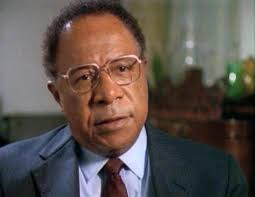
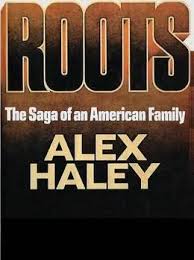
The African
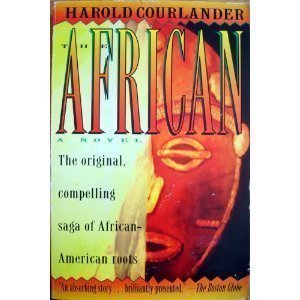
by
Harold Courlander
Before Alex Hailey's Roots there was Courlander's The African, which chronicles the experiences of a young African boy, Hwesuhunu, who is kidnapped from his homeland. His story recreates the horrors of the Middle Passage and the degradation of slavery.


The African

by
Harold Courlander
Before Alex Hailey's Roots there was Courlander's The African, which chronicles the experiences of a young African boy, Hwesuhunu, who is kidnapped from his homeland. His story recreates the horrors of the Middle Passage and the degradation of slavery.
The guy on the left was shown on tv, magazines, newspaper as the native of Turtle Island. This went on for a couple of decades. What the tv and media were doing was, planting in your subconscious mind what a native looks like!! In reality, this guy is a Italian!!! It just shows how they can change a person nationality thru the media!!!
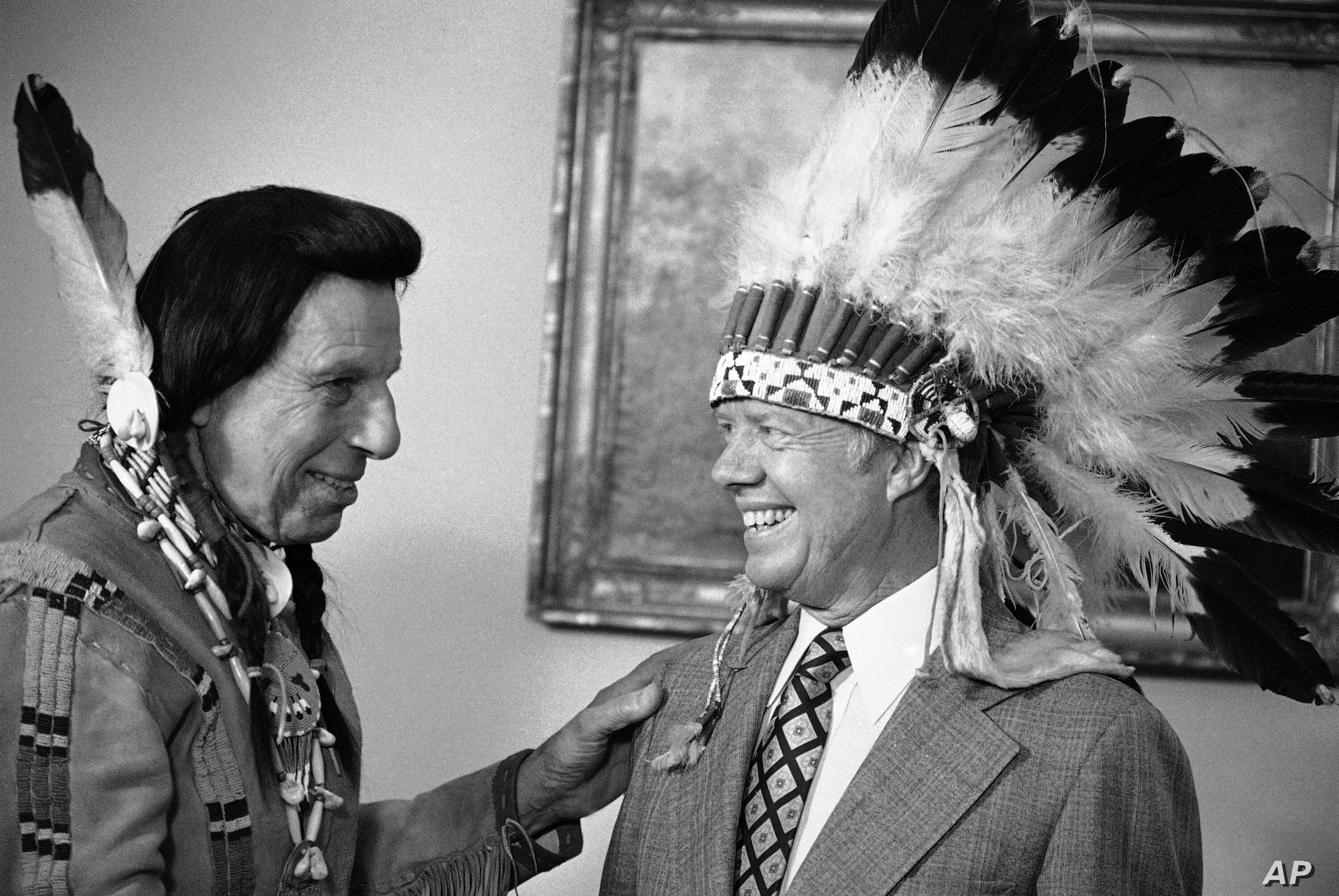
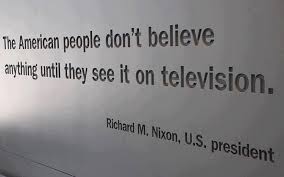
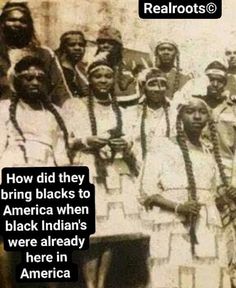
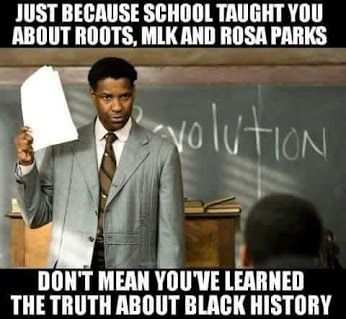




That CIA asset Alex Haley caused more damage to our people than many will ever know. And you have agents willing to fight over a fiction book thinking it is realThis story was pushed as a true story!! Only to find out it was stolen from a white man!!


The African

by
Harold Courlander
Before Alex Hailey's Roots there was Courlander's The African, which chronicles the experiences of a young African boy, Hwesuhunu, who is kidnapped from his homeland. His story recreates the horrors of the Middle Passage and the degradation of slavery.

That CIA asset Alex Haley caused more damage to our people than many will ever know. And you have agents willing to fight over a fiction book thinking it is real
X,, your not kidding, he did sum major DAMAGE to our people!! The sad part is, lots of people still dont know he stole that story and all people need to do is alittle bit of research & reading and they will start connecting the dots!!! The truth is hidden right in front of us in books, these ACTS/LAWS, the census, treaties, libraries, museums(art&histories) and so on. But its all public record
I made a thread on it before and got attacked. I’ll try to find it and bump it. All, I’ll post some more factoids about our people during AA (not African-American) History Month.X,, your not kidding, he did sum major DAMAGE to our people!! The sad part is, lots of people still dont know he stole that story and all people need to do is alittle bit of research & reading and they will start connecting the dots!!! The truth is hidden right in front of us in books, these ACTS/LAWS, the census, treaties, libraries, museums(art&histories) and so on. But its all public record
Similar threads
- Replies
- 6
- Views
- 278
- Replies
- 14
- Views
- 257
- Replies
- 7
- Views
- 207


